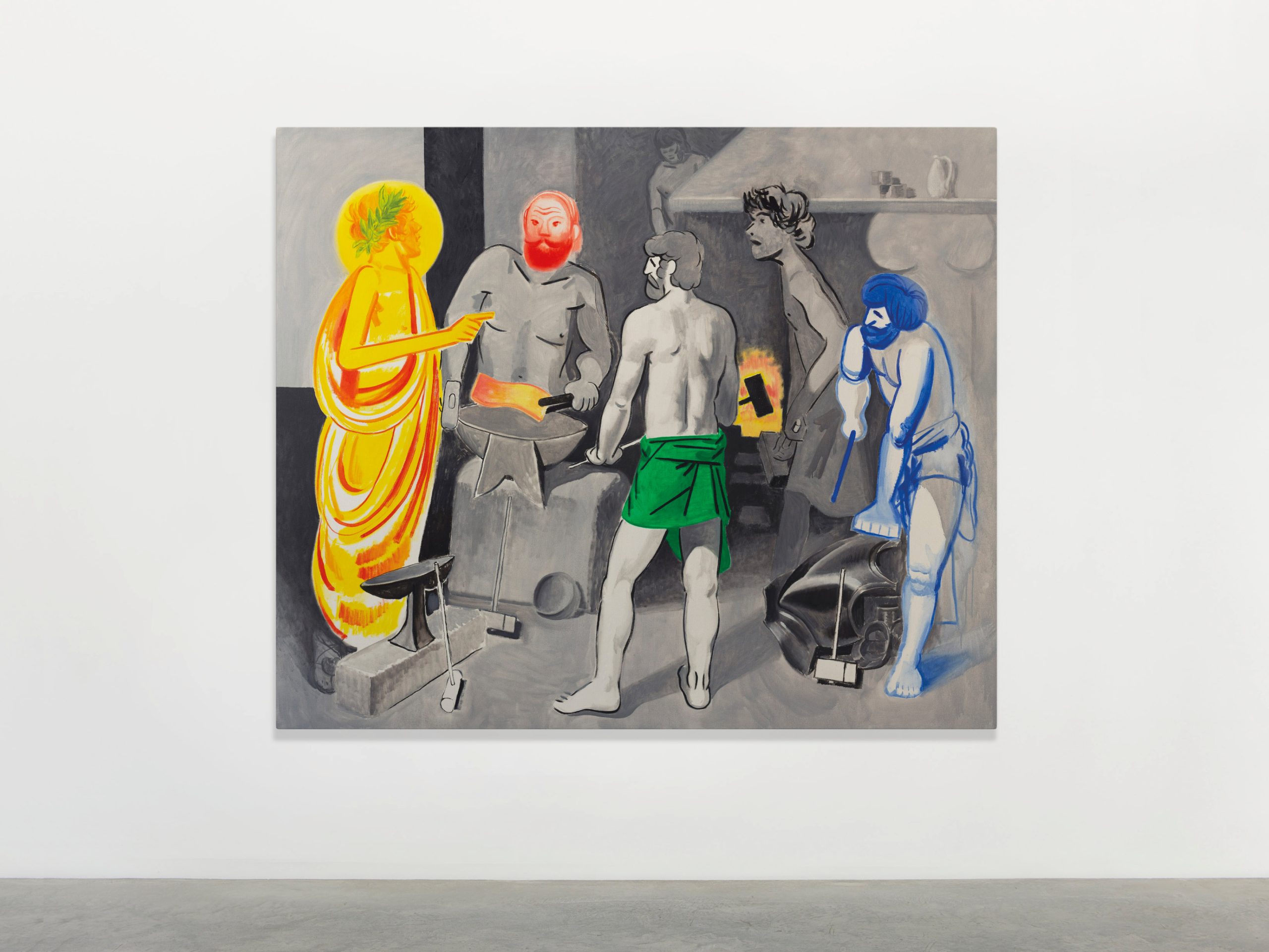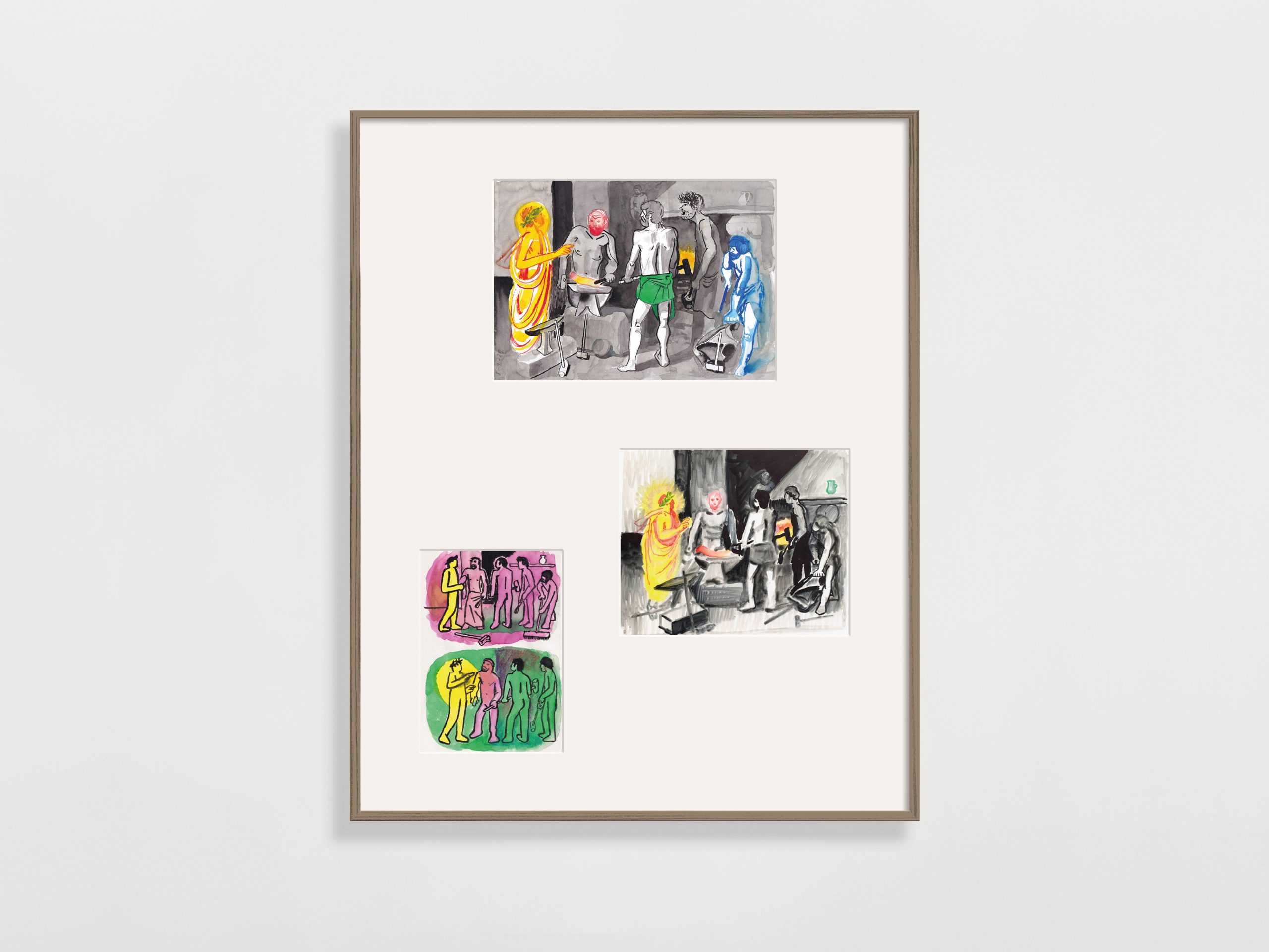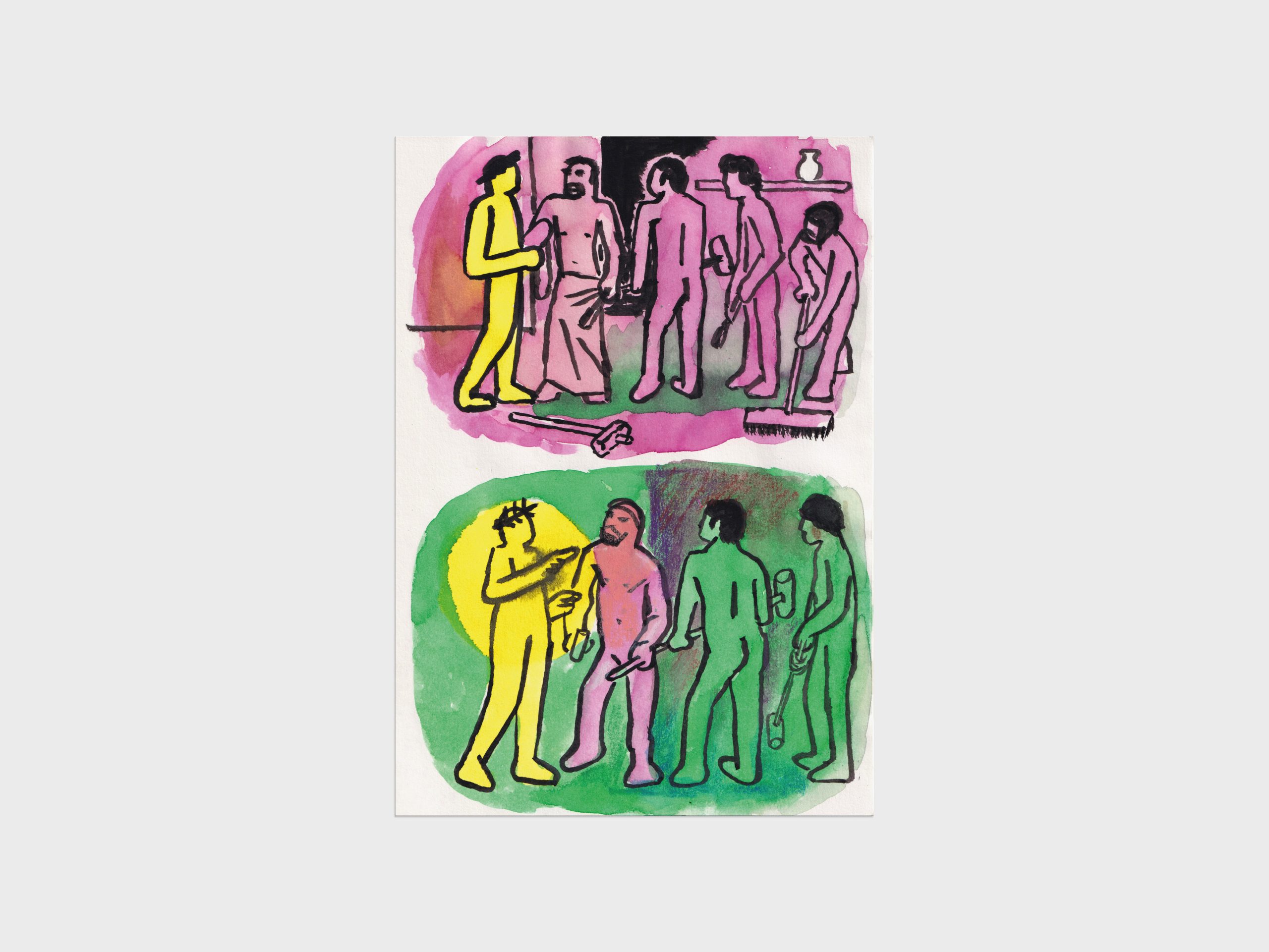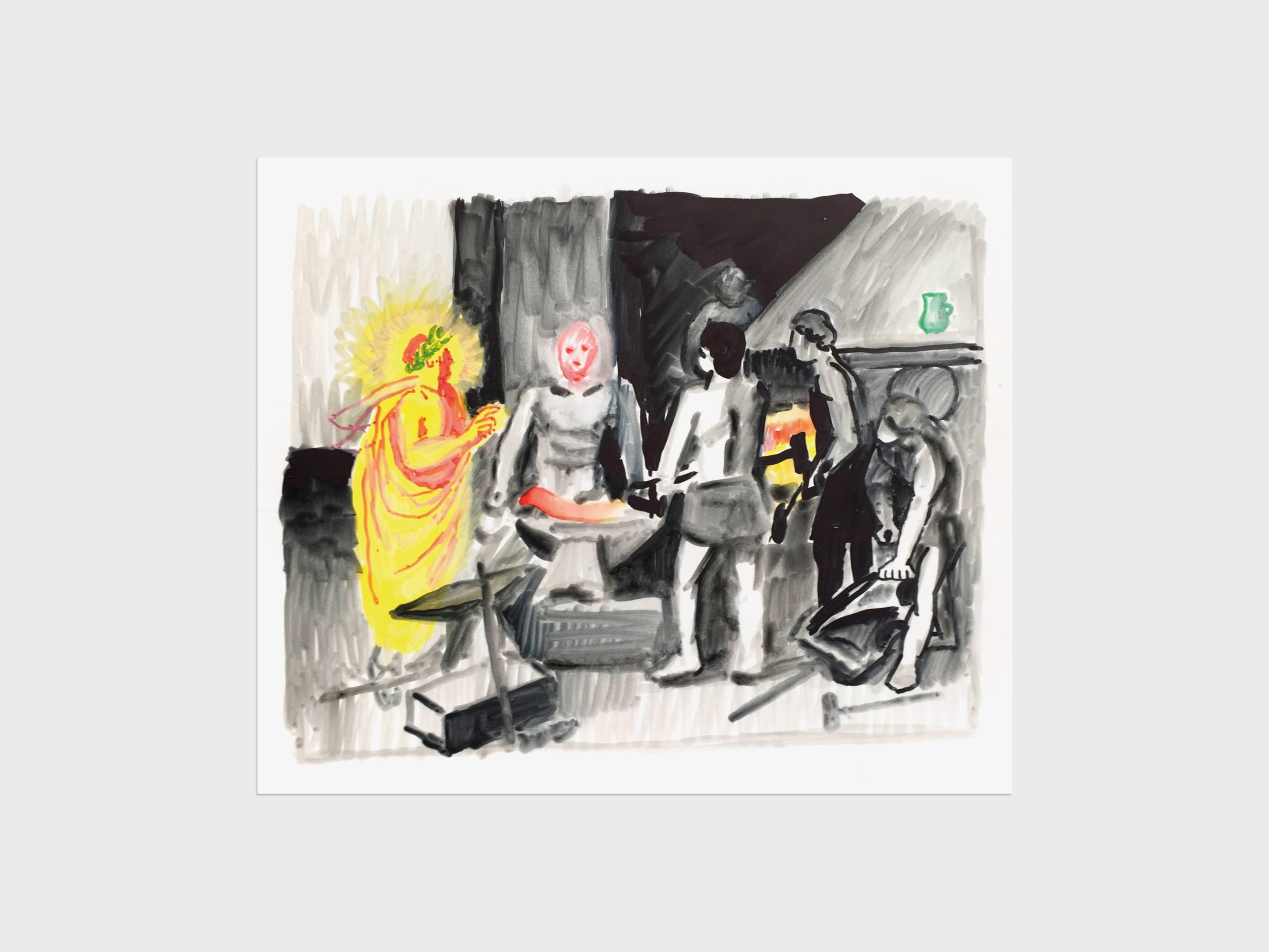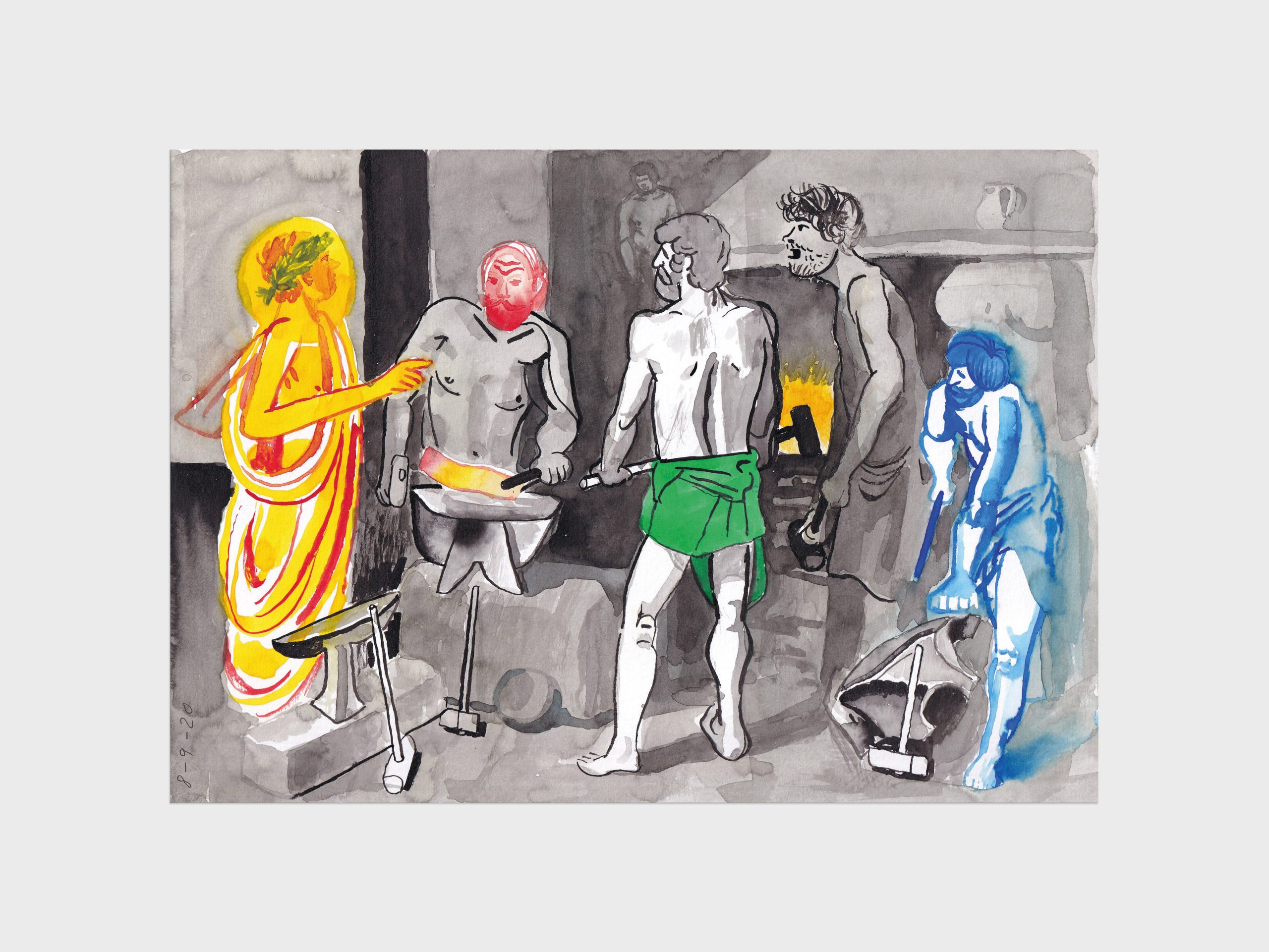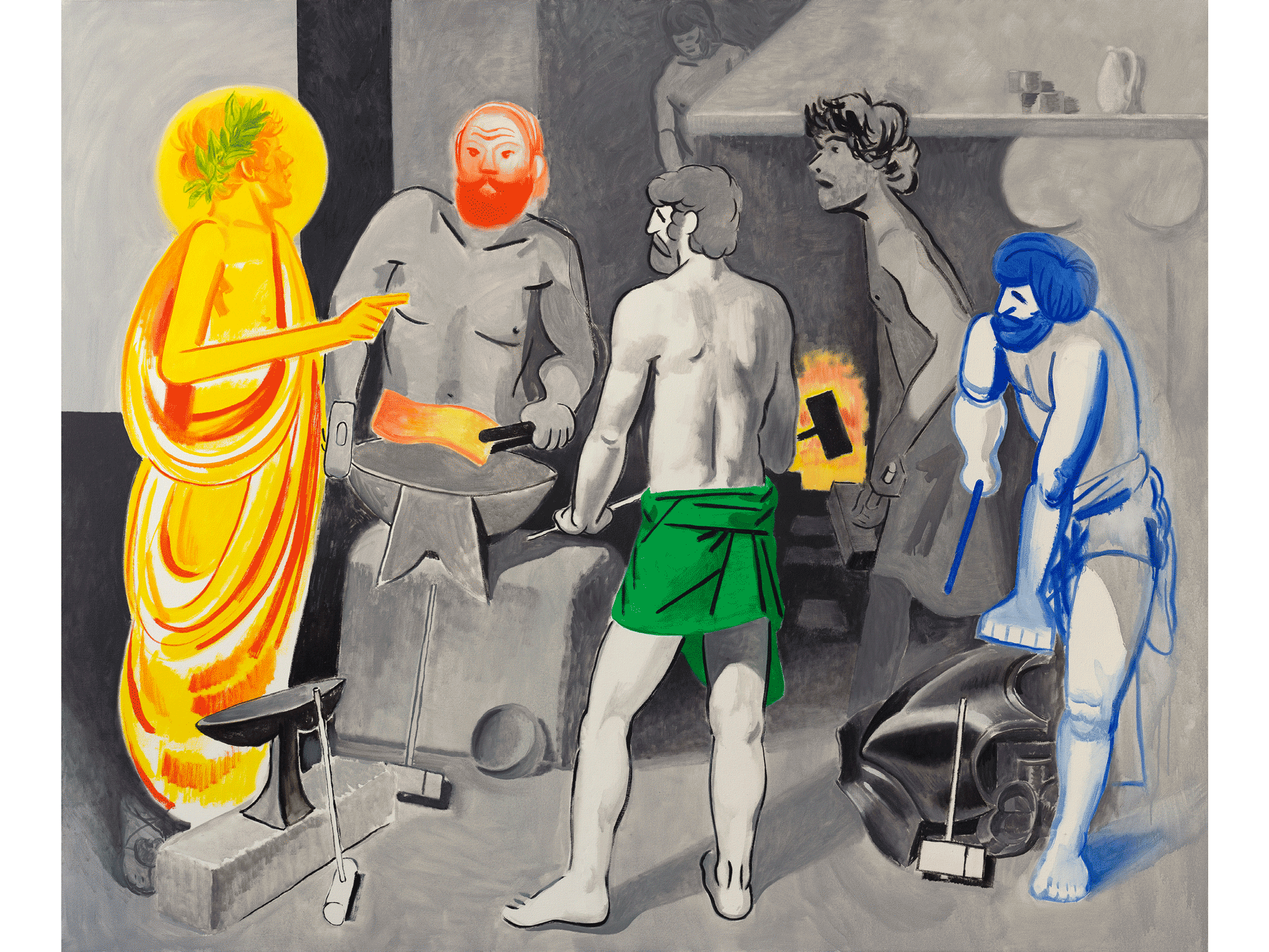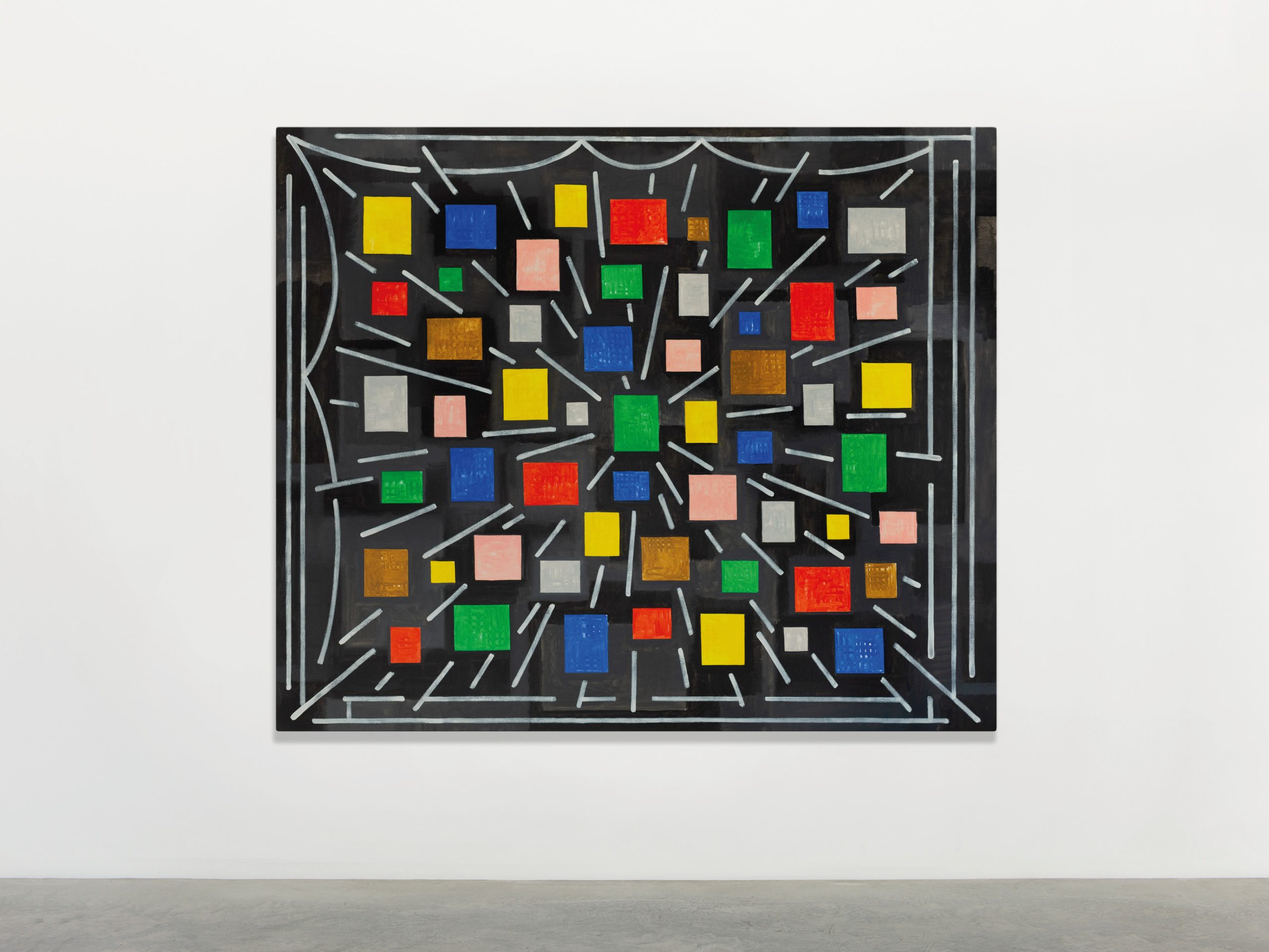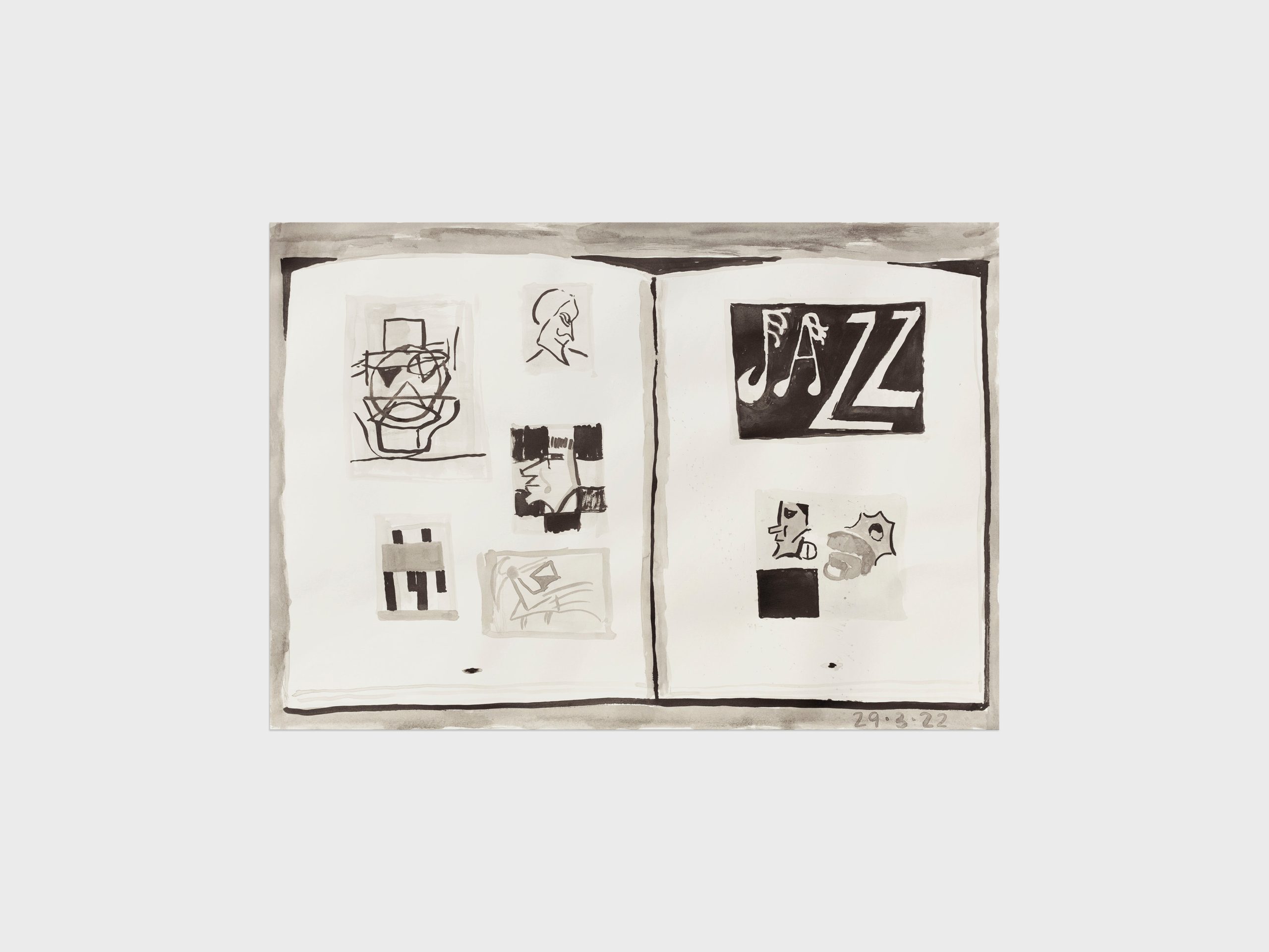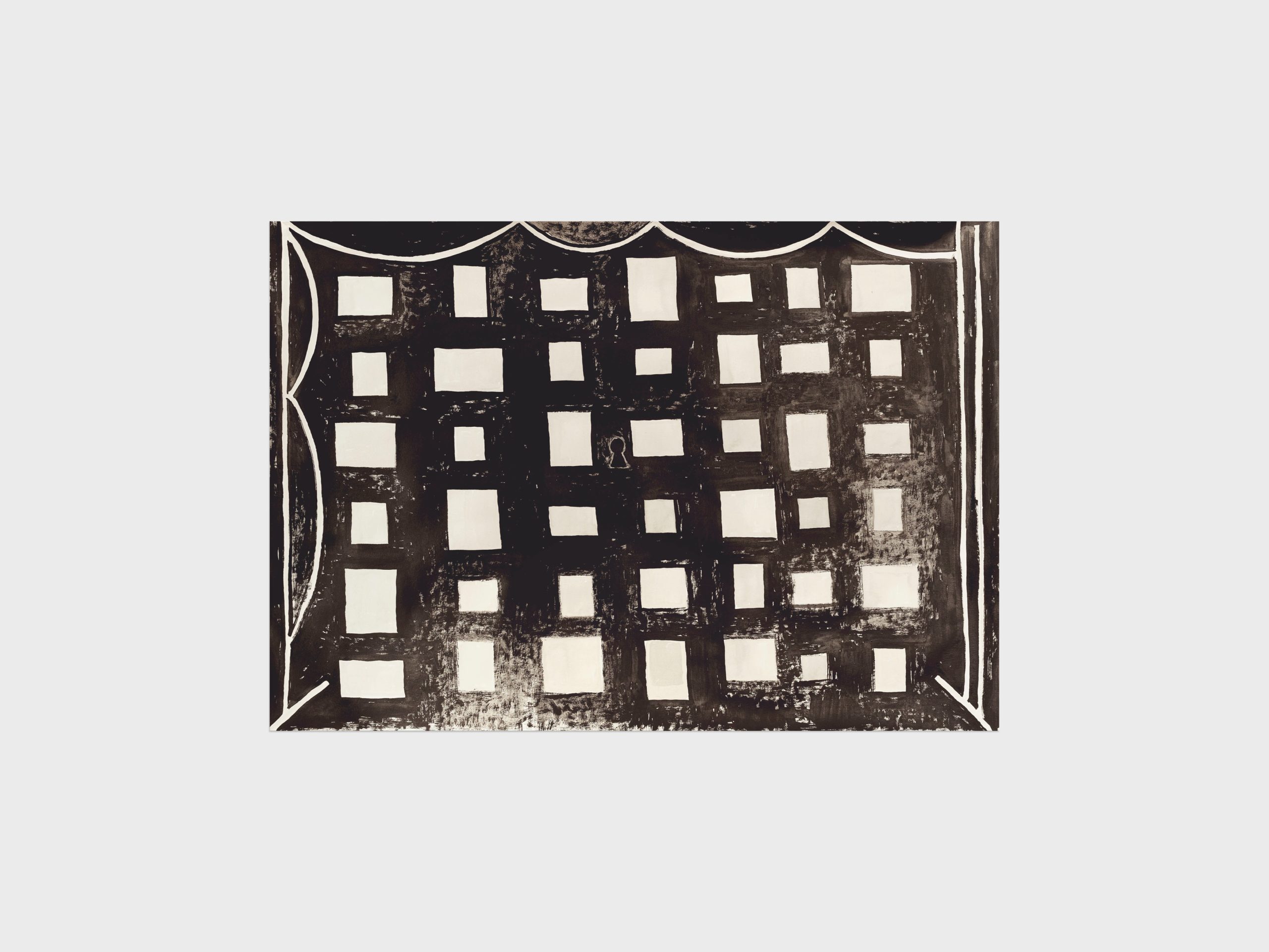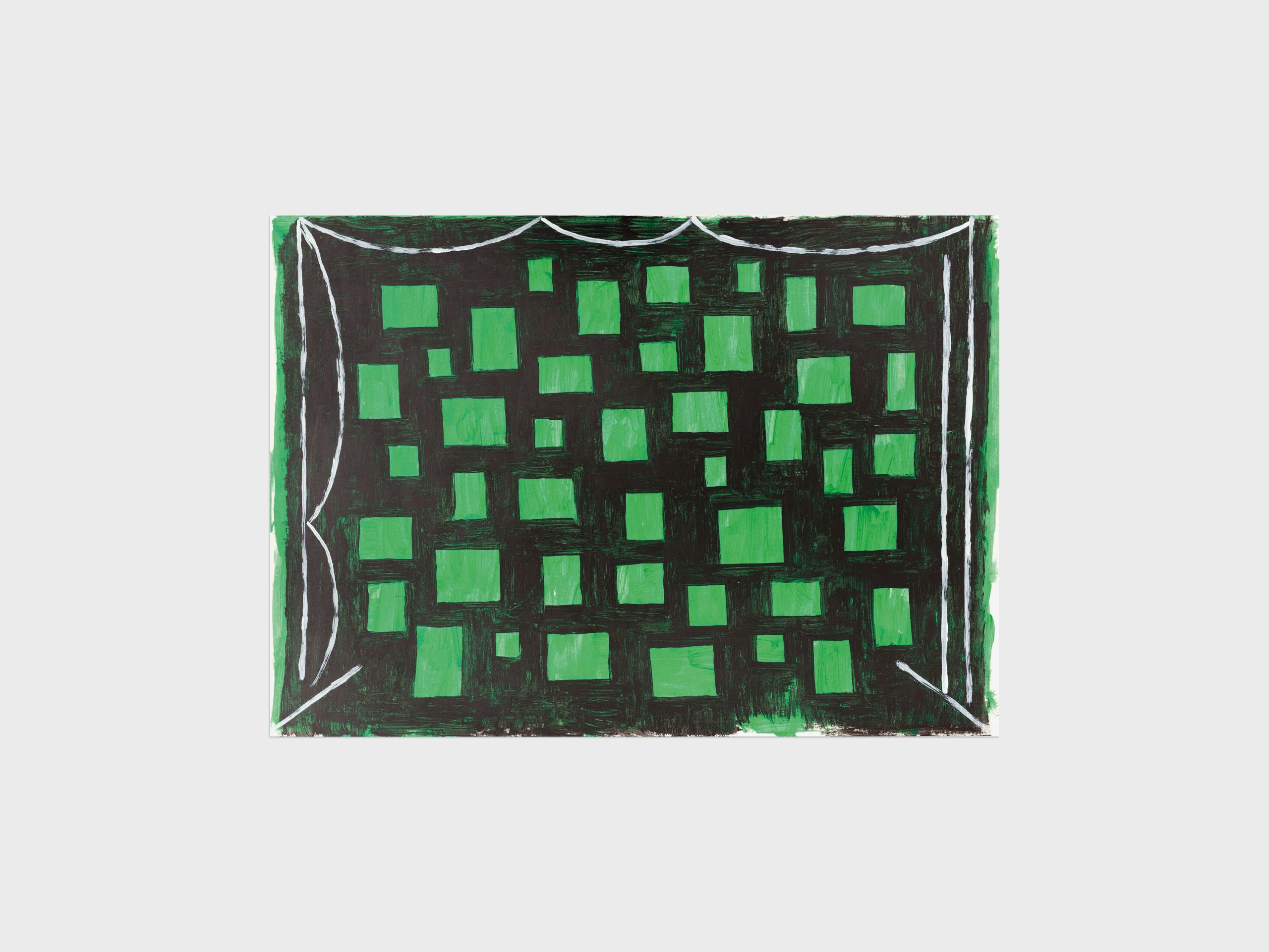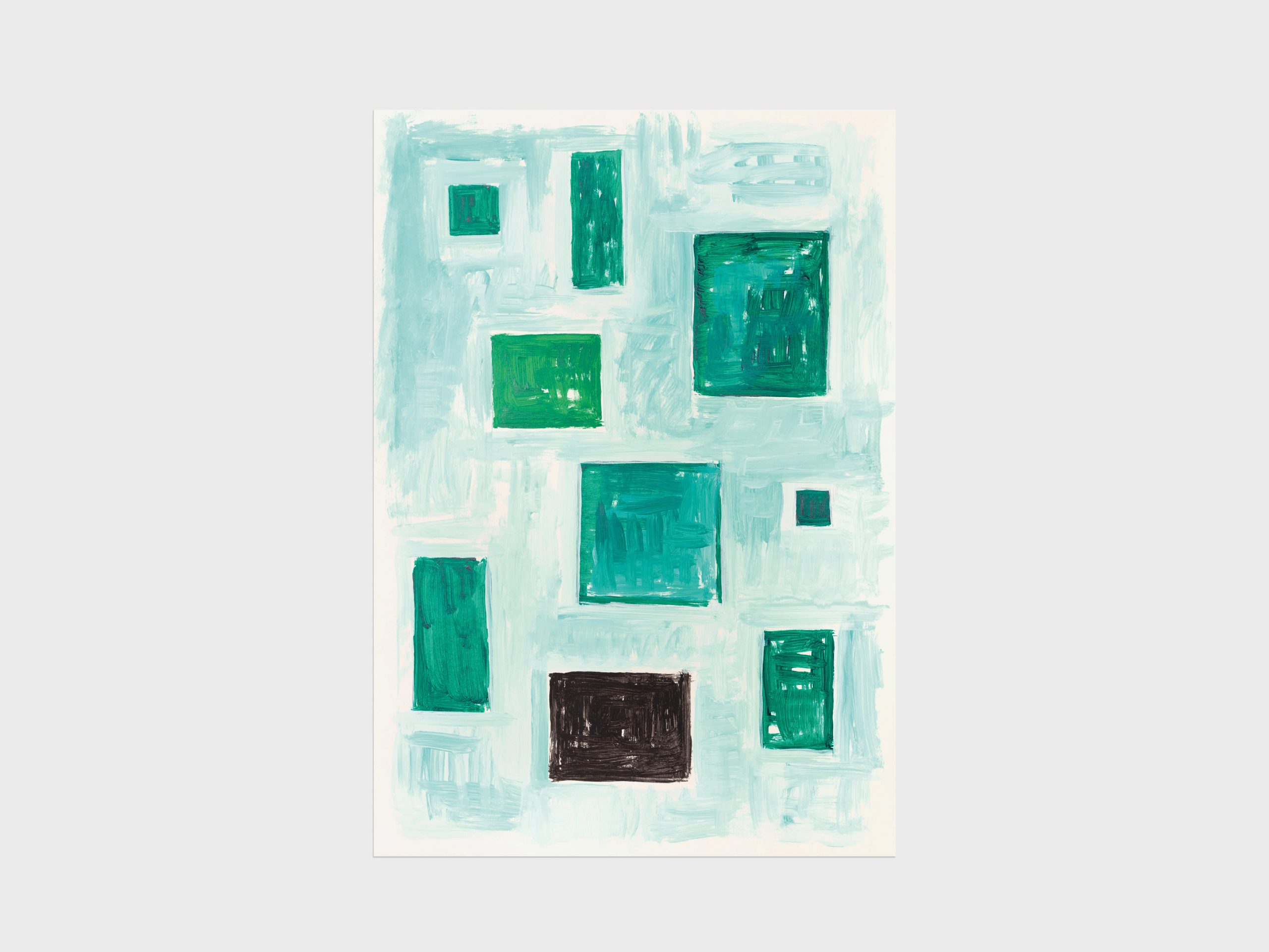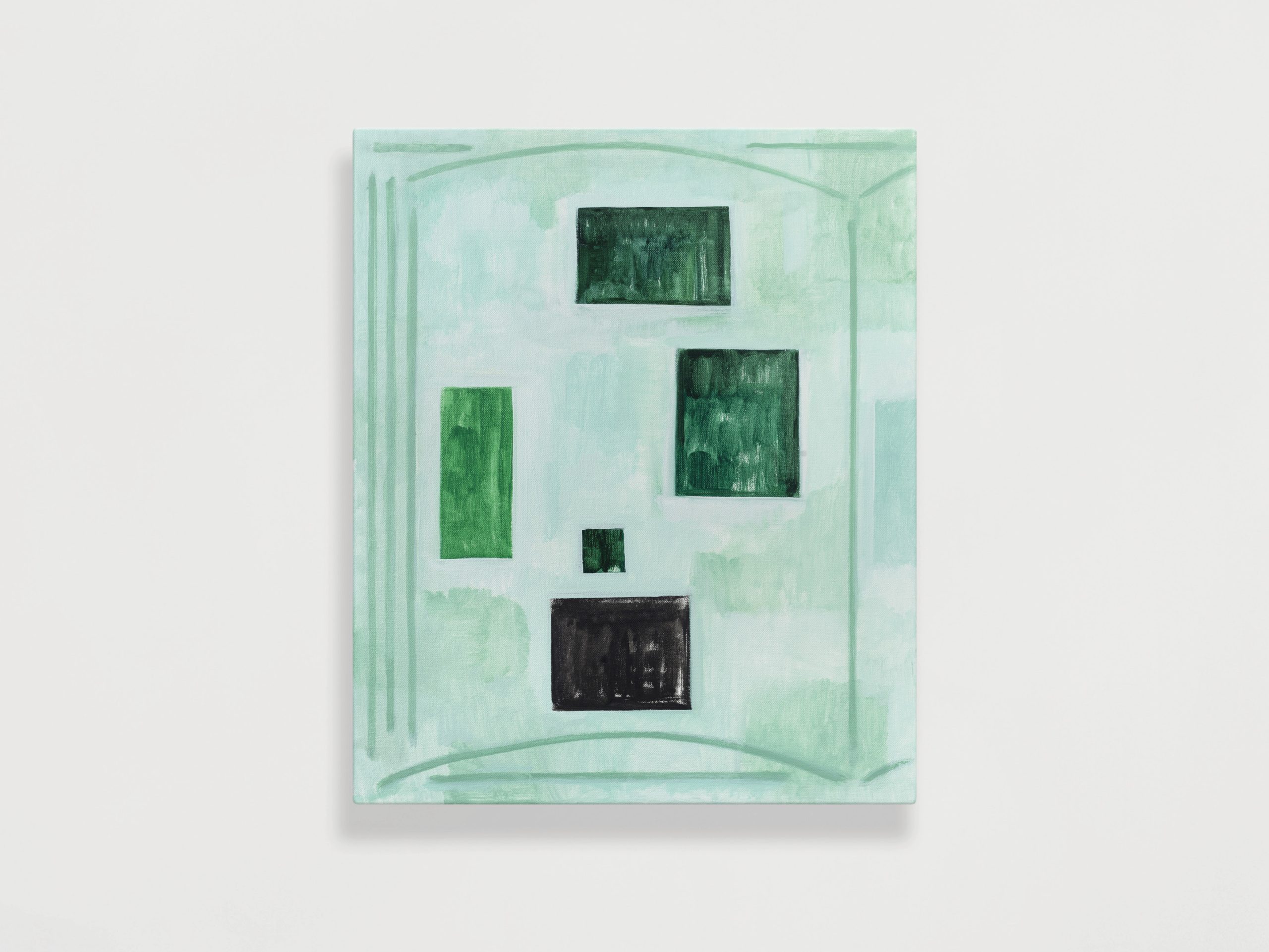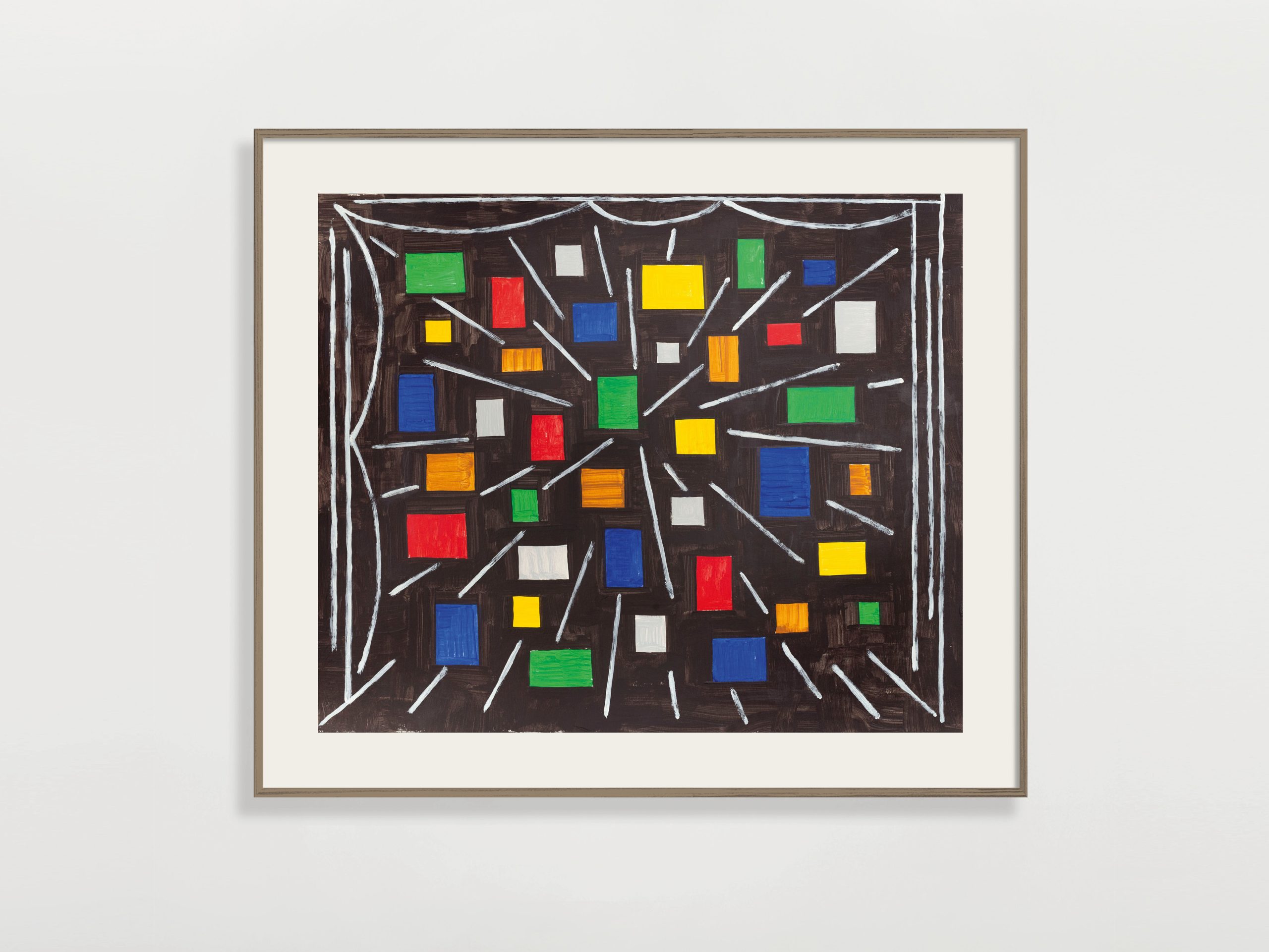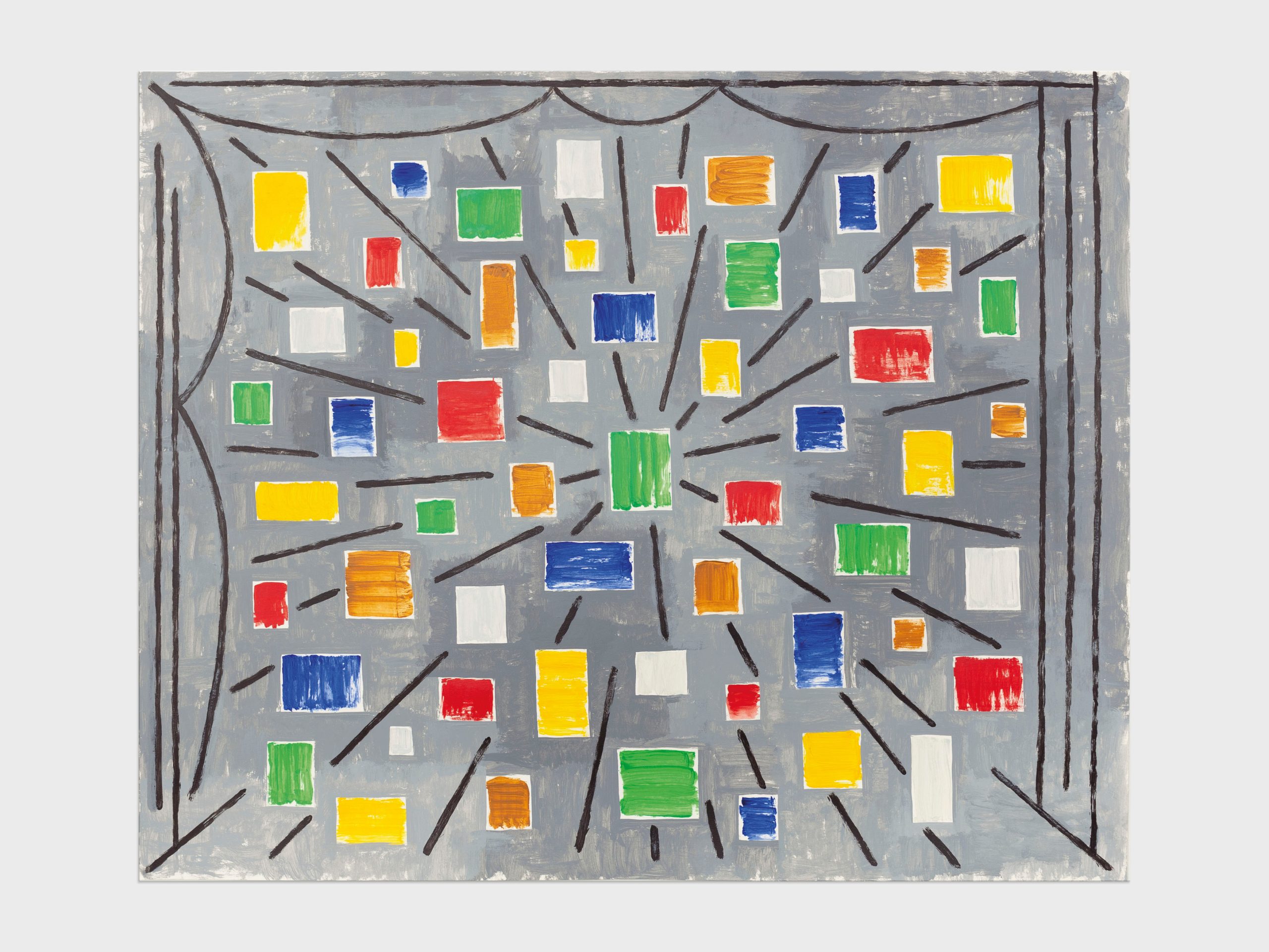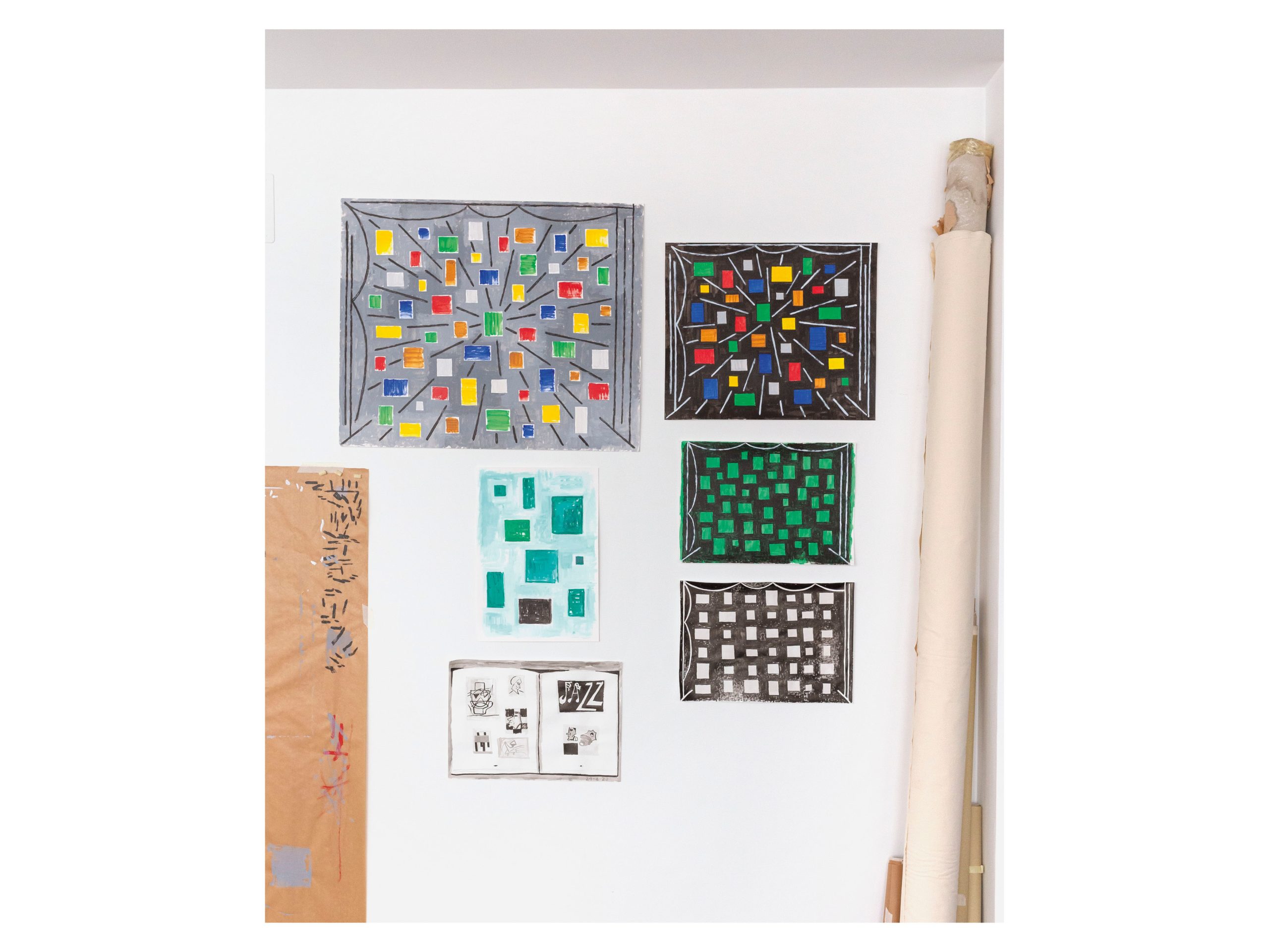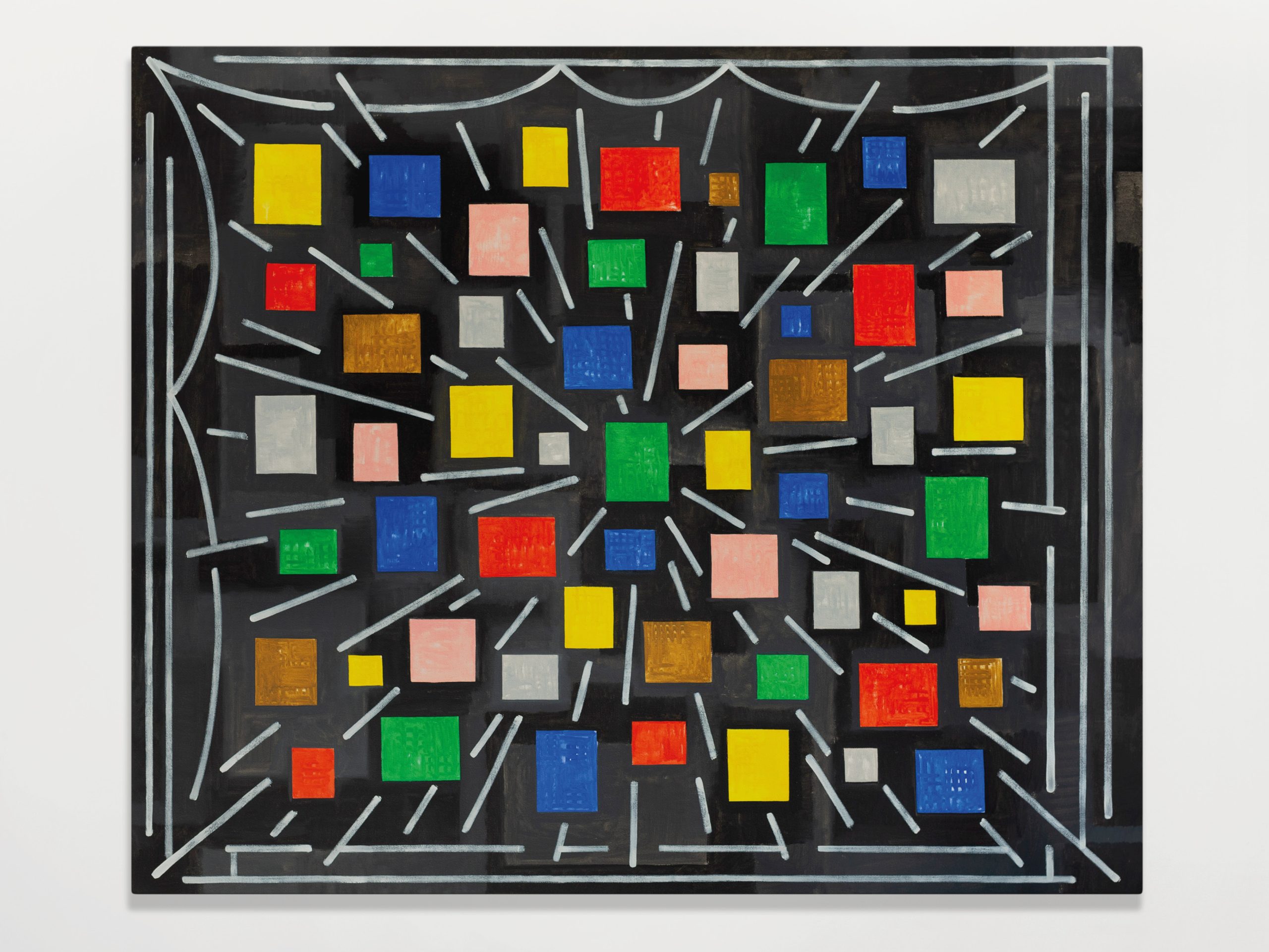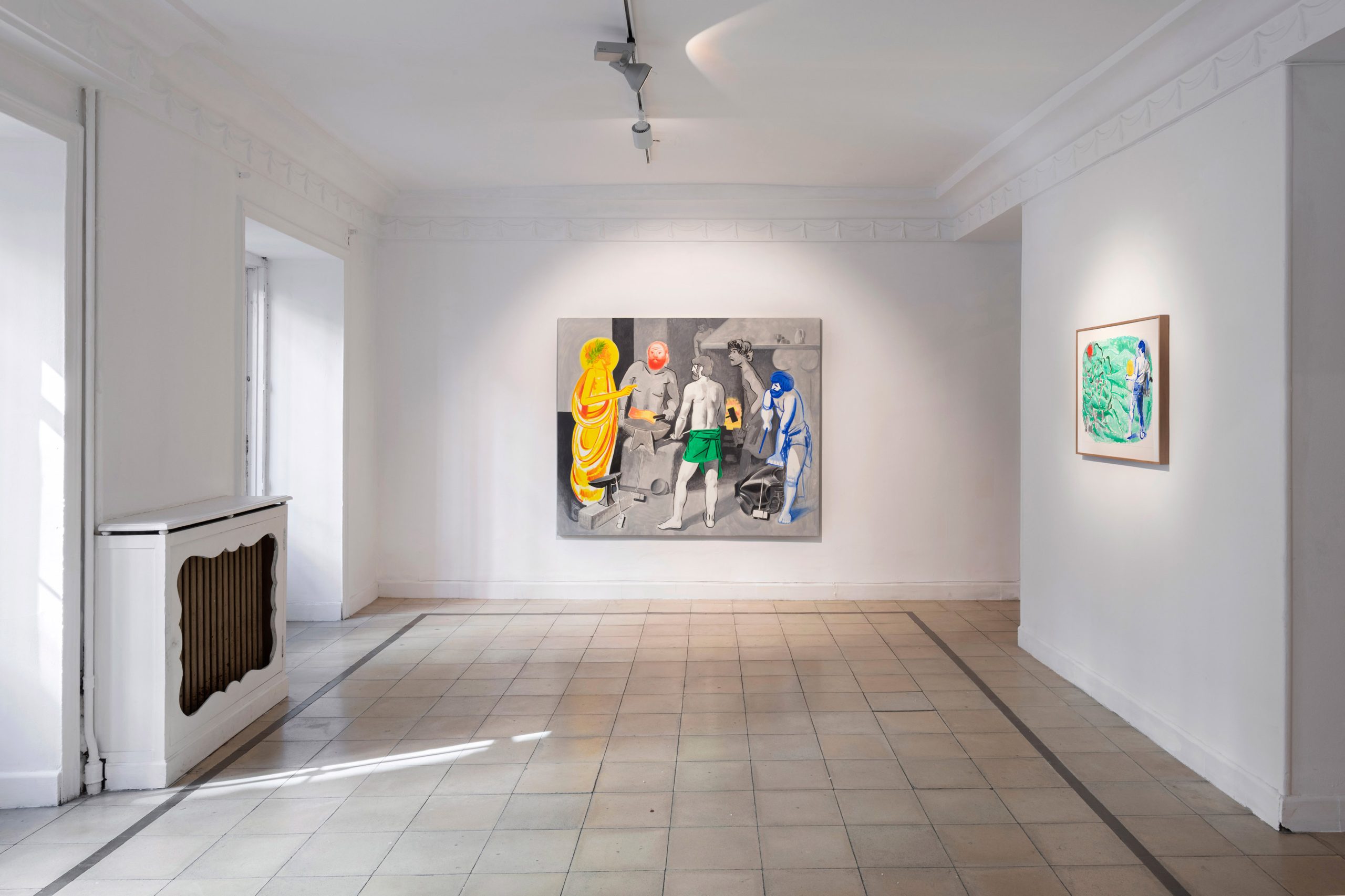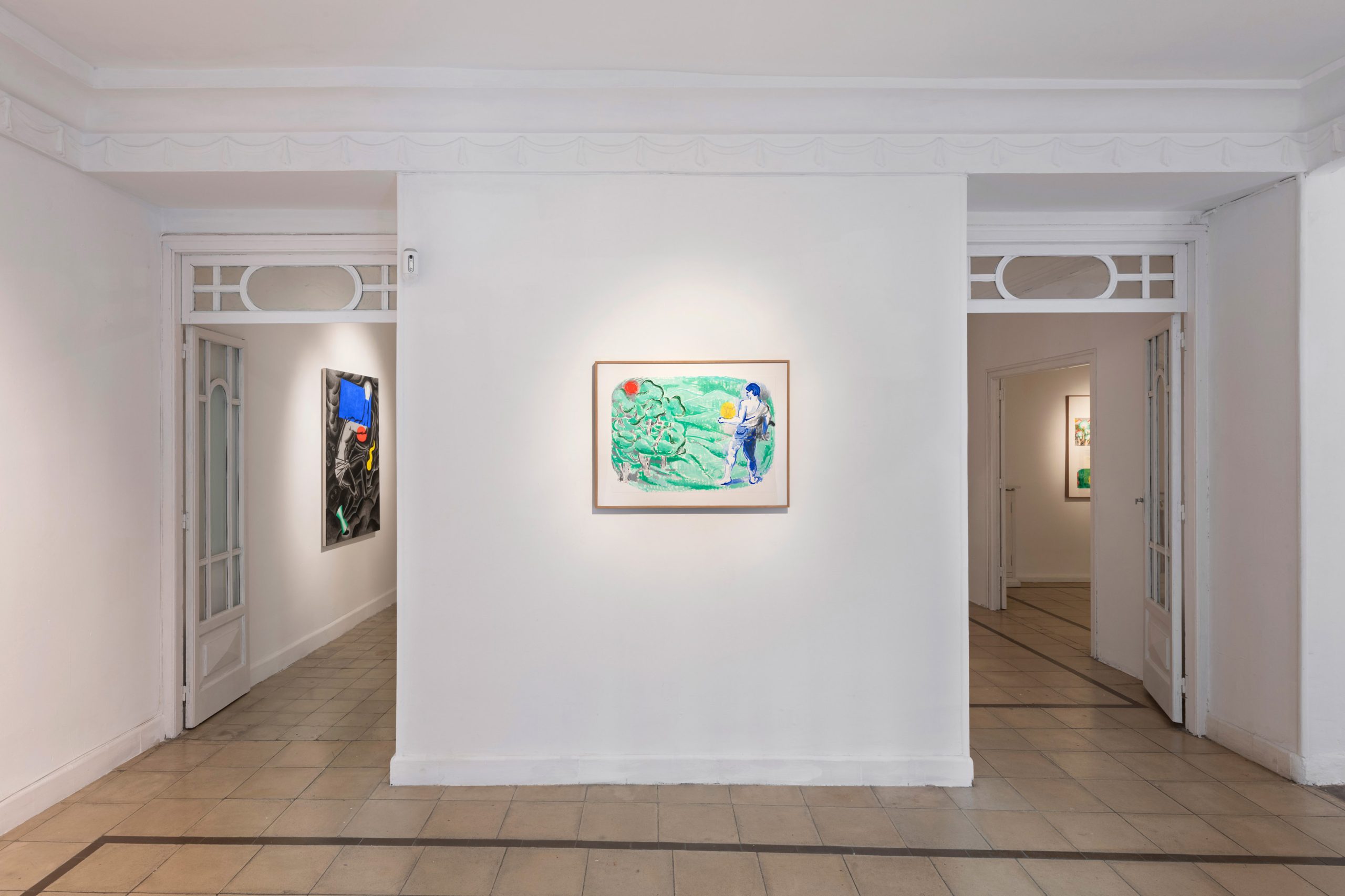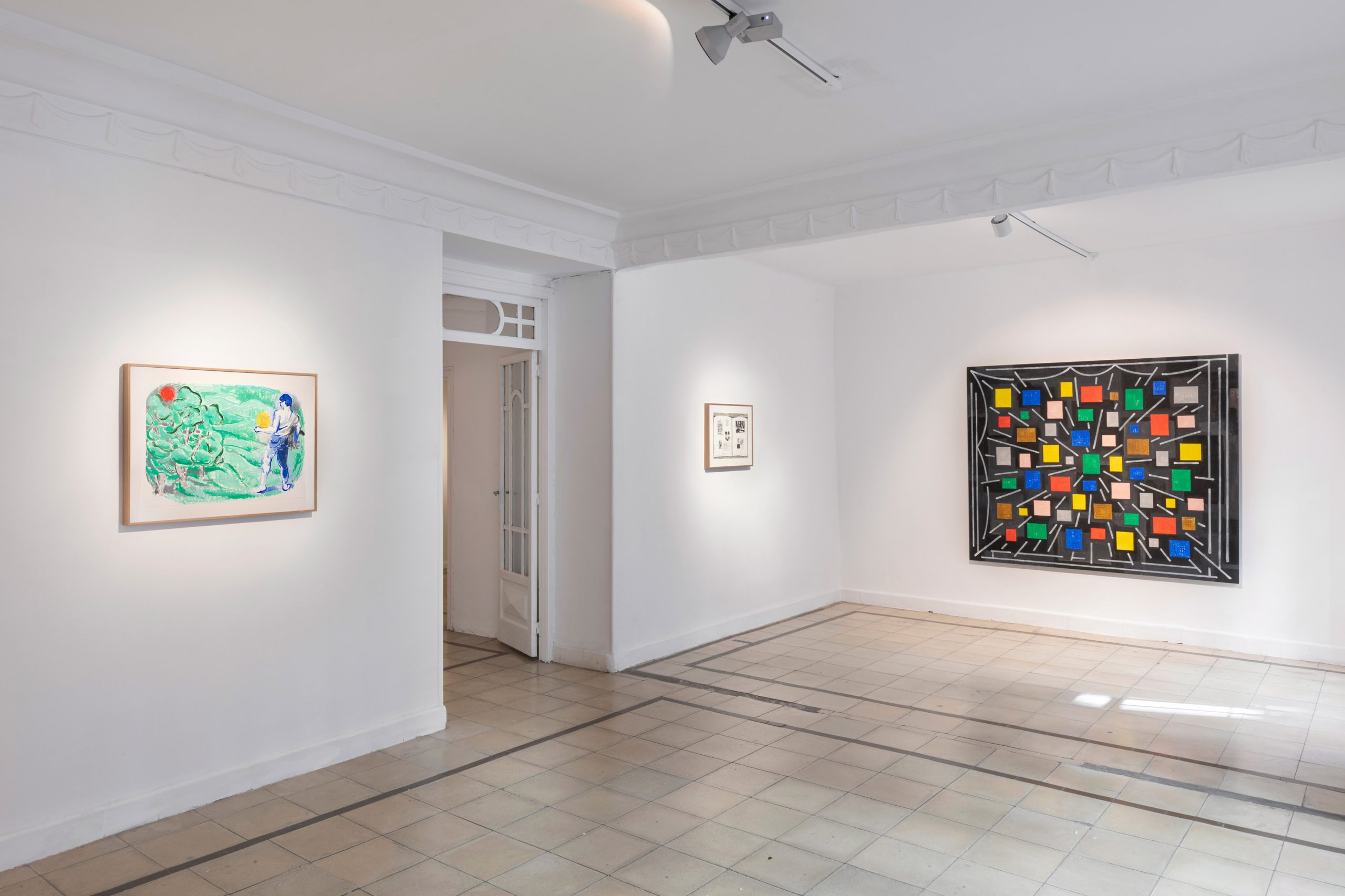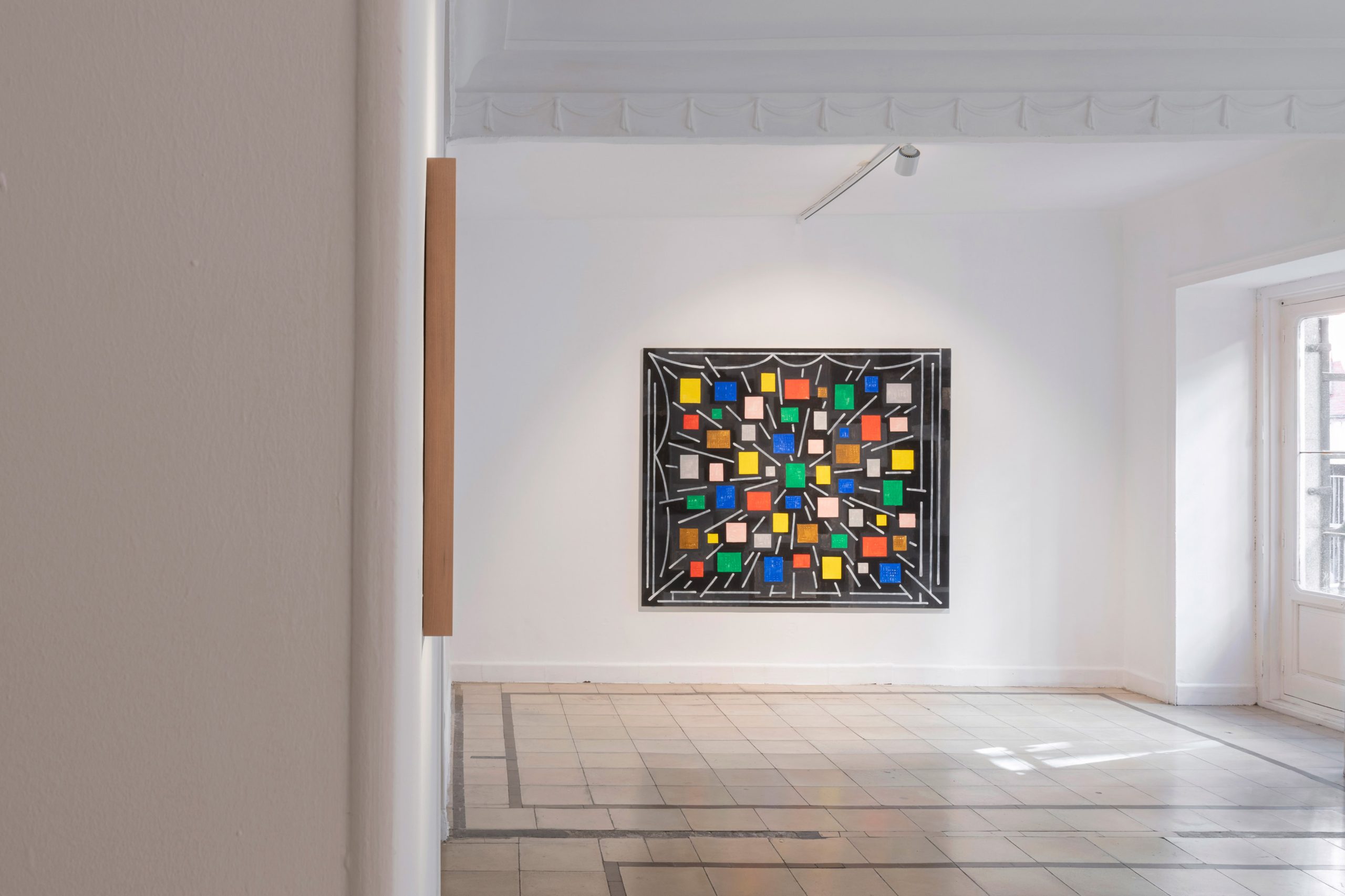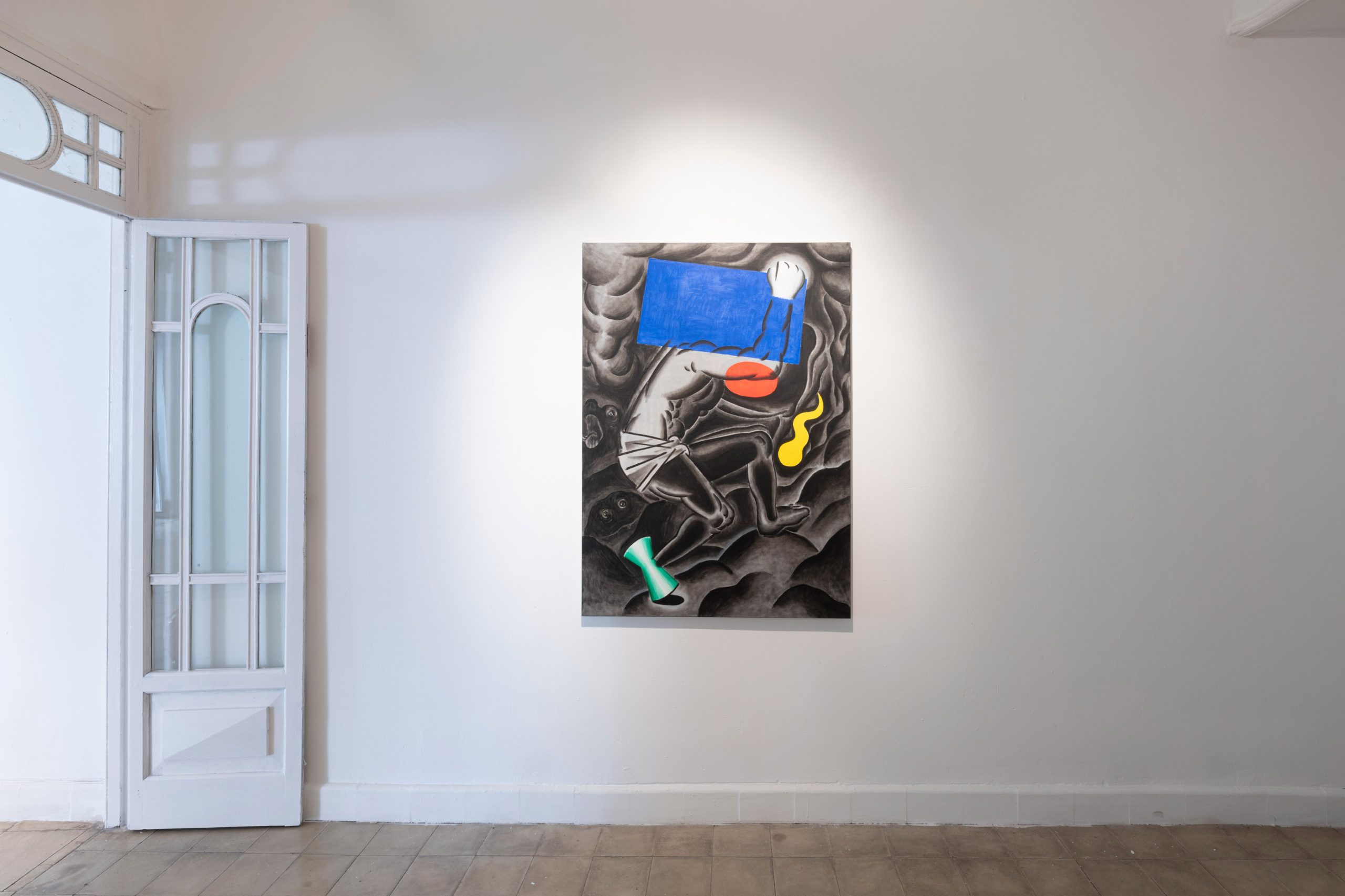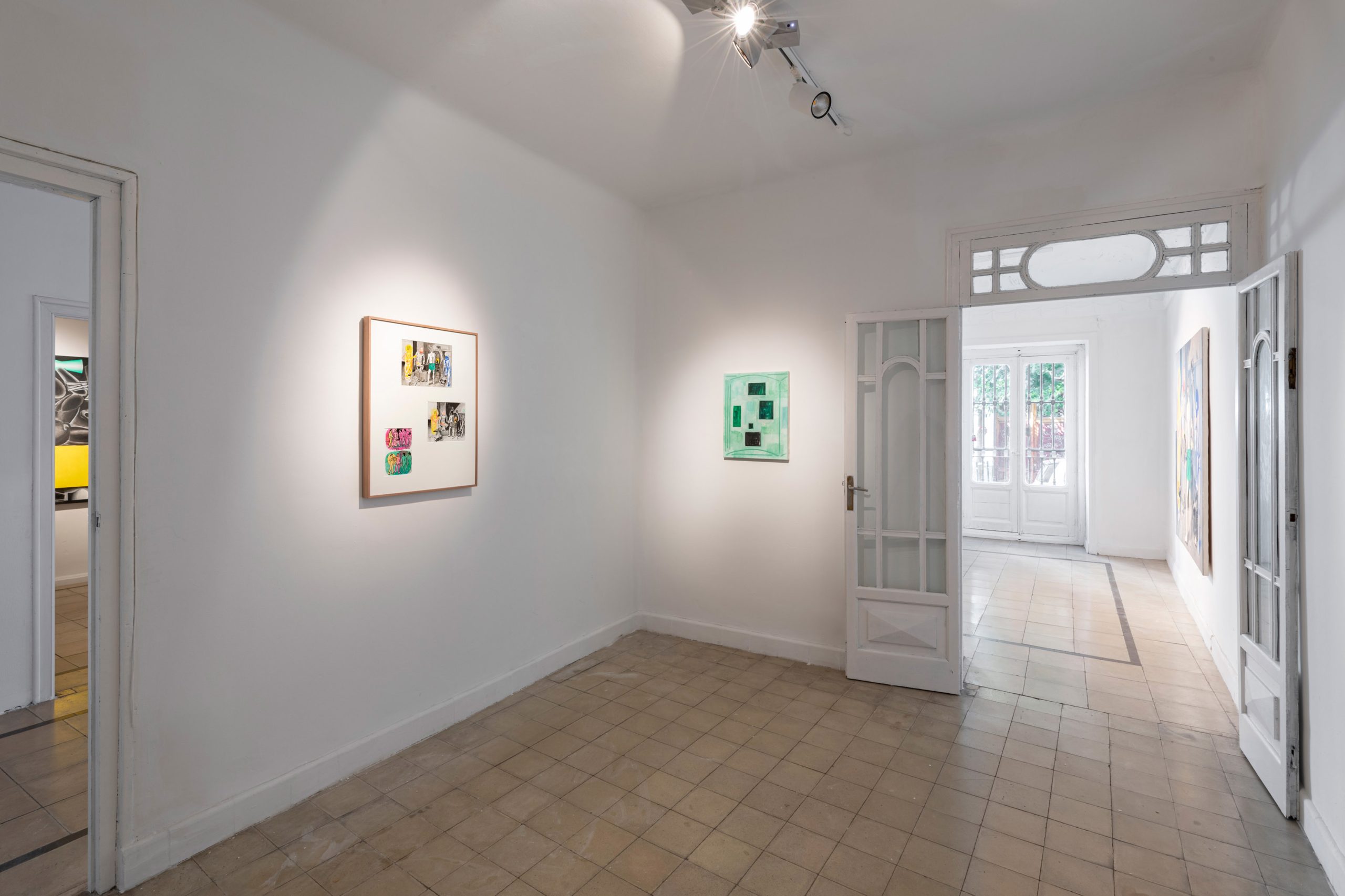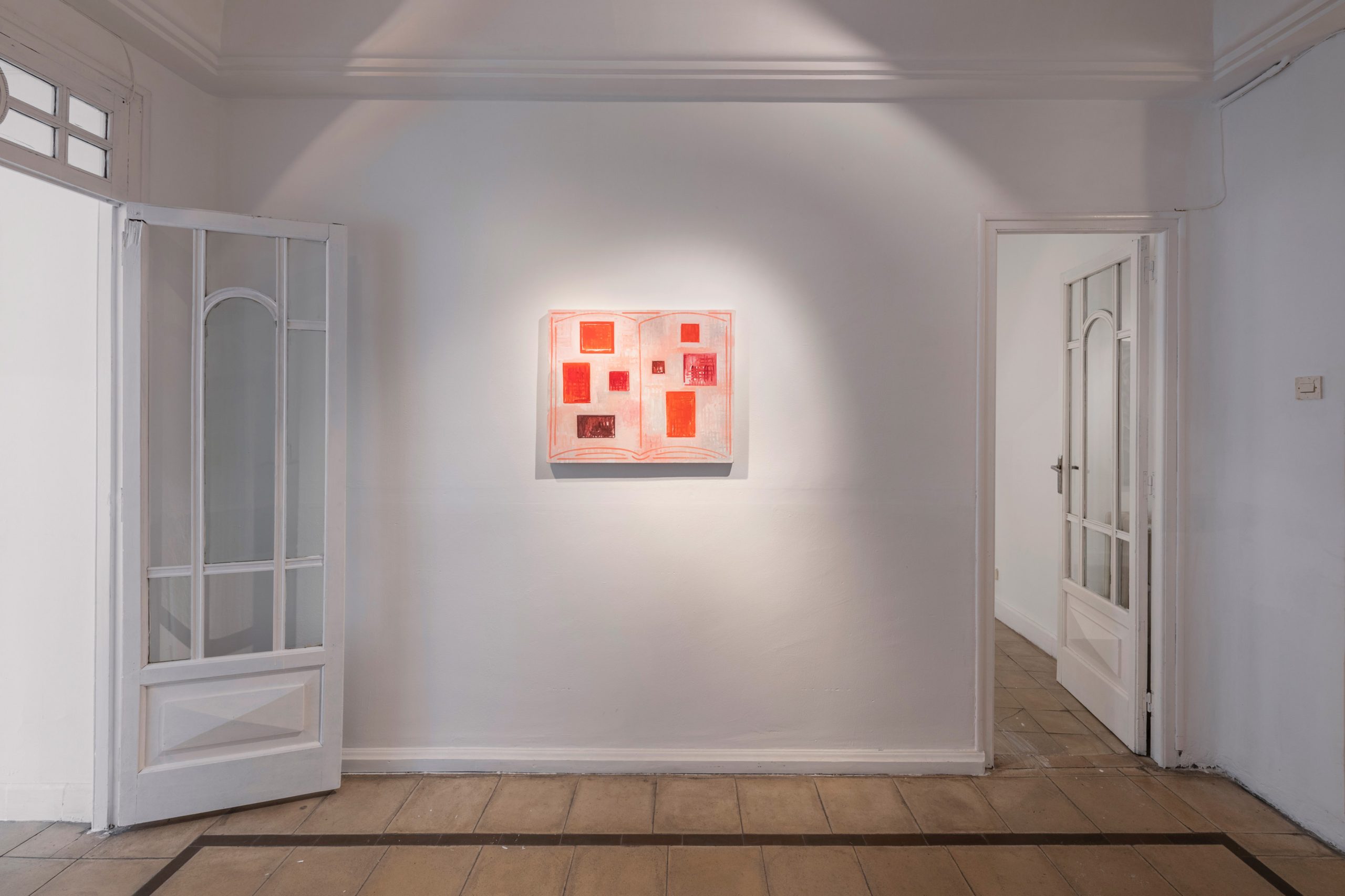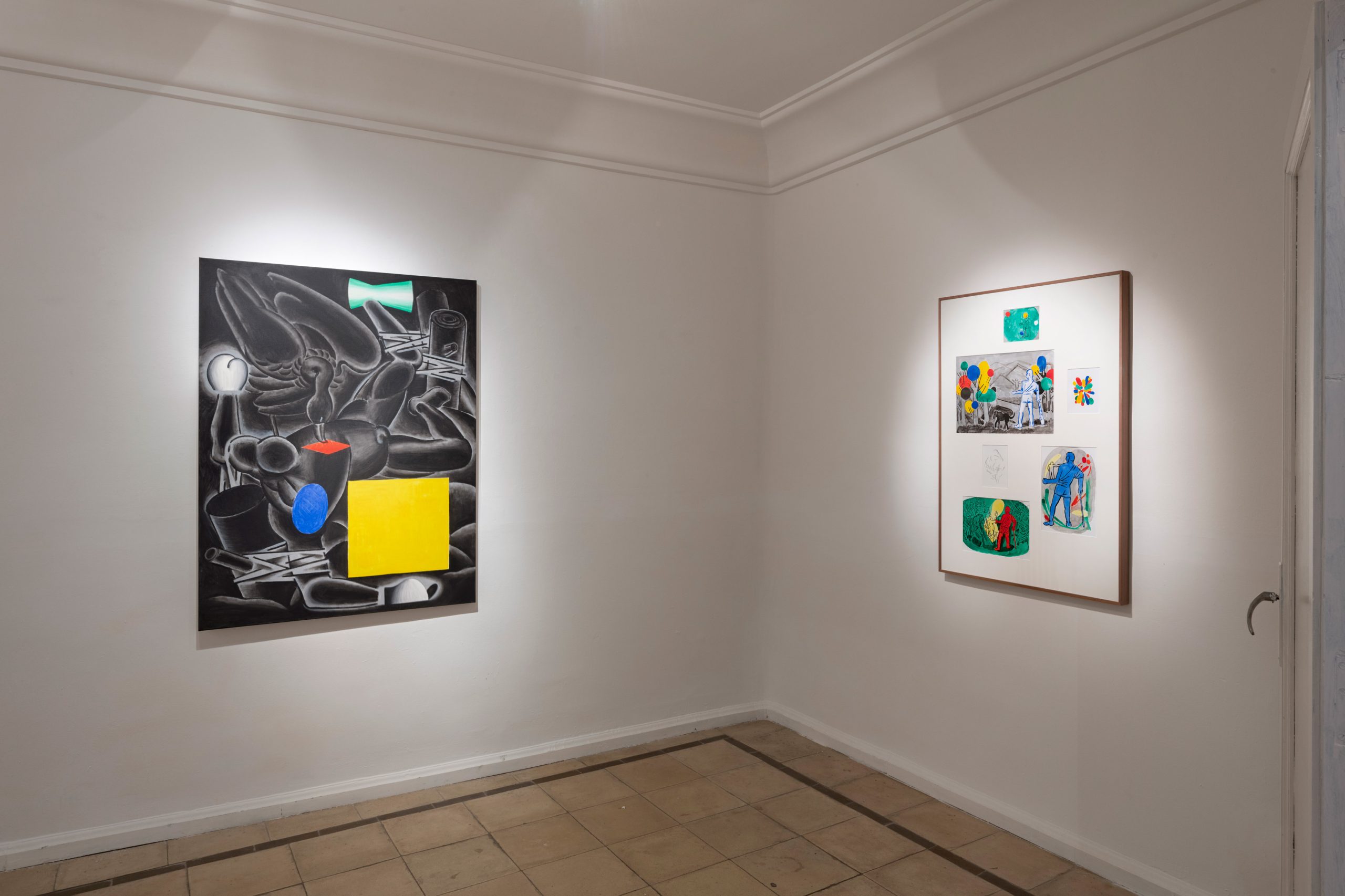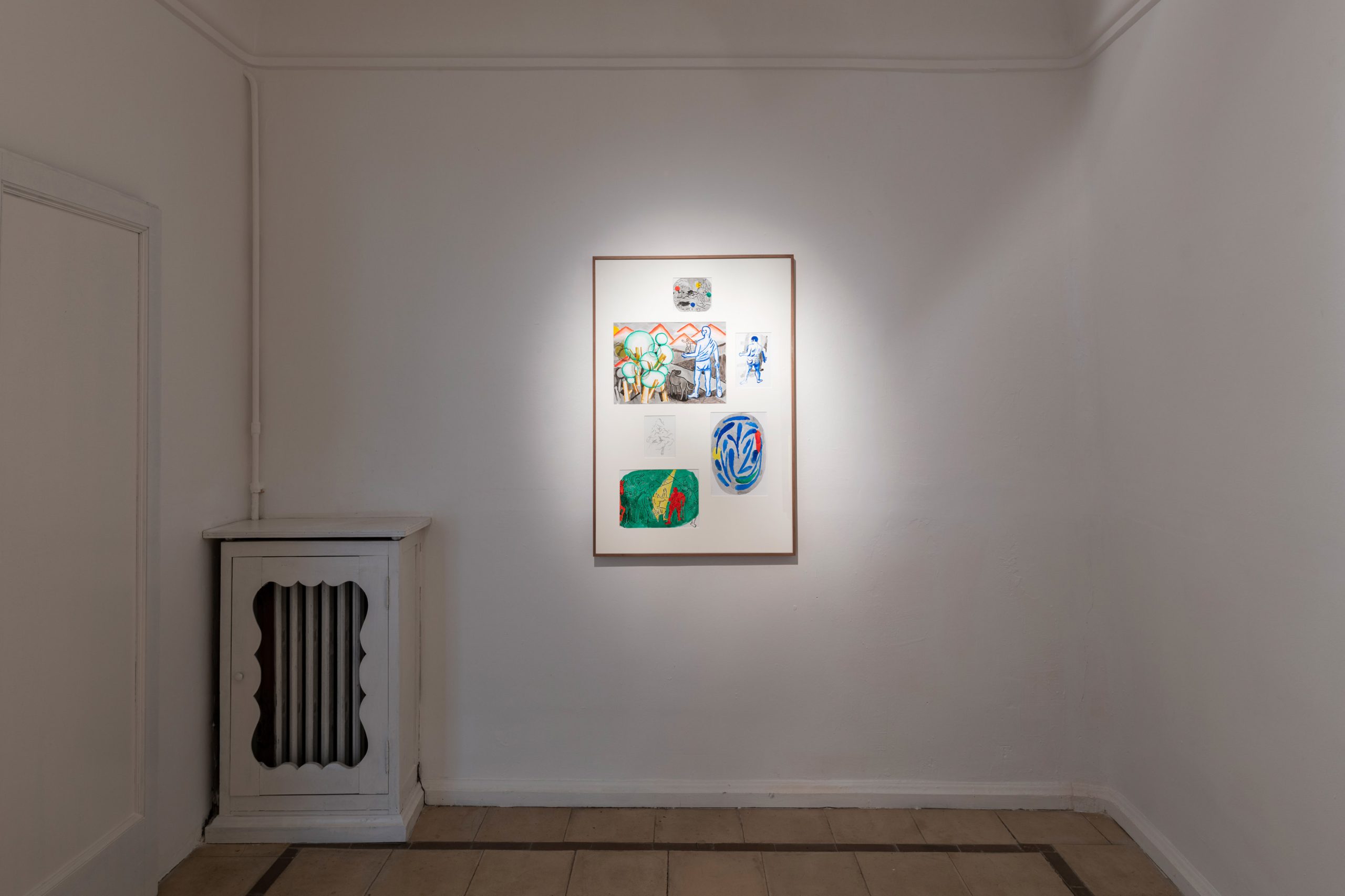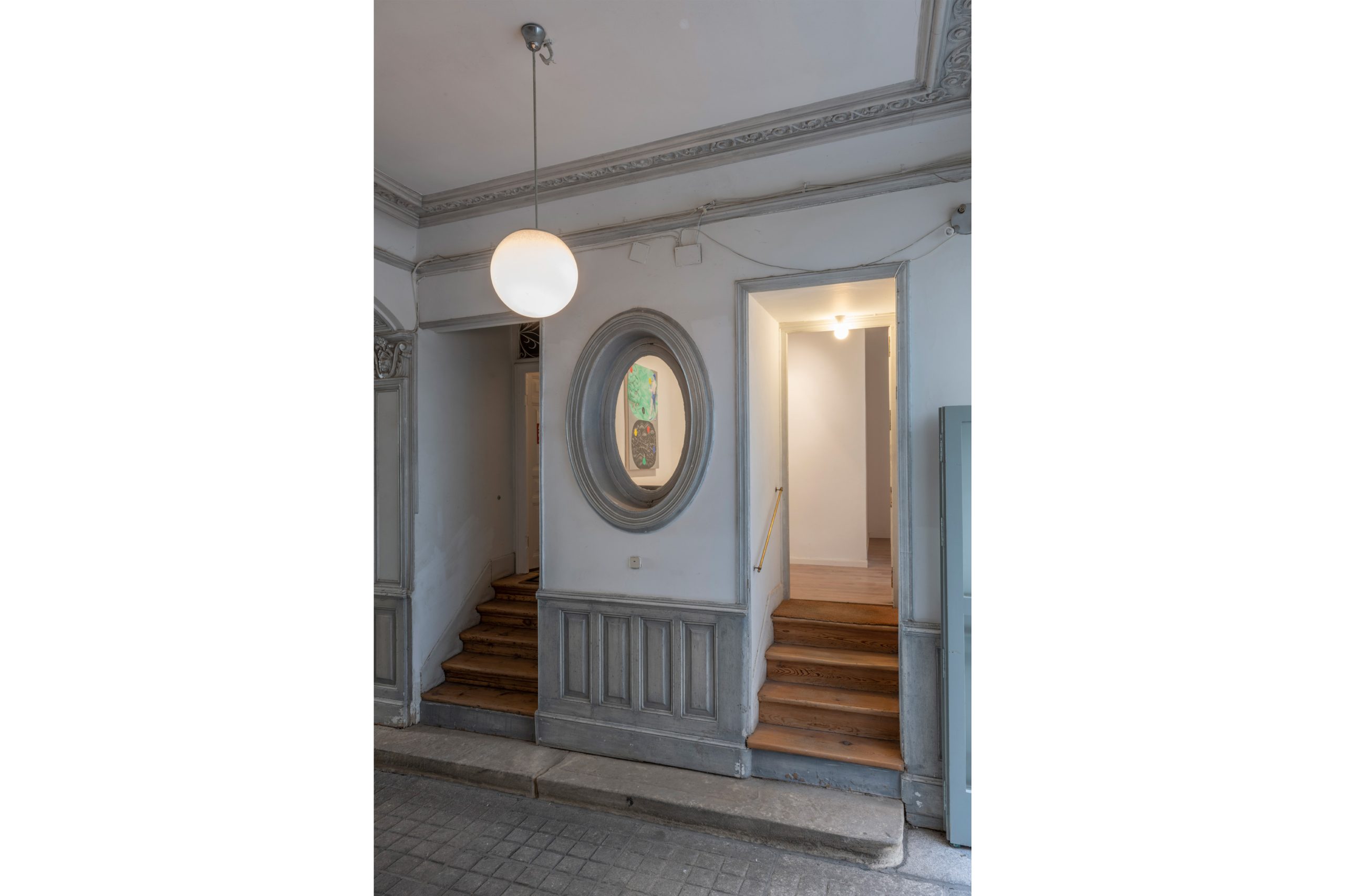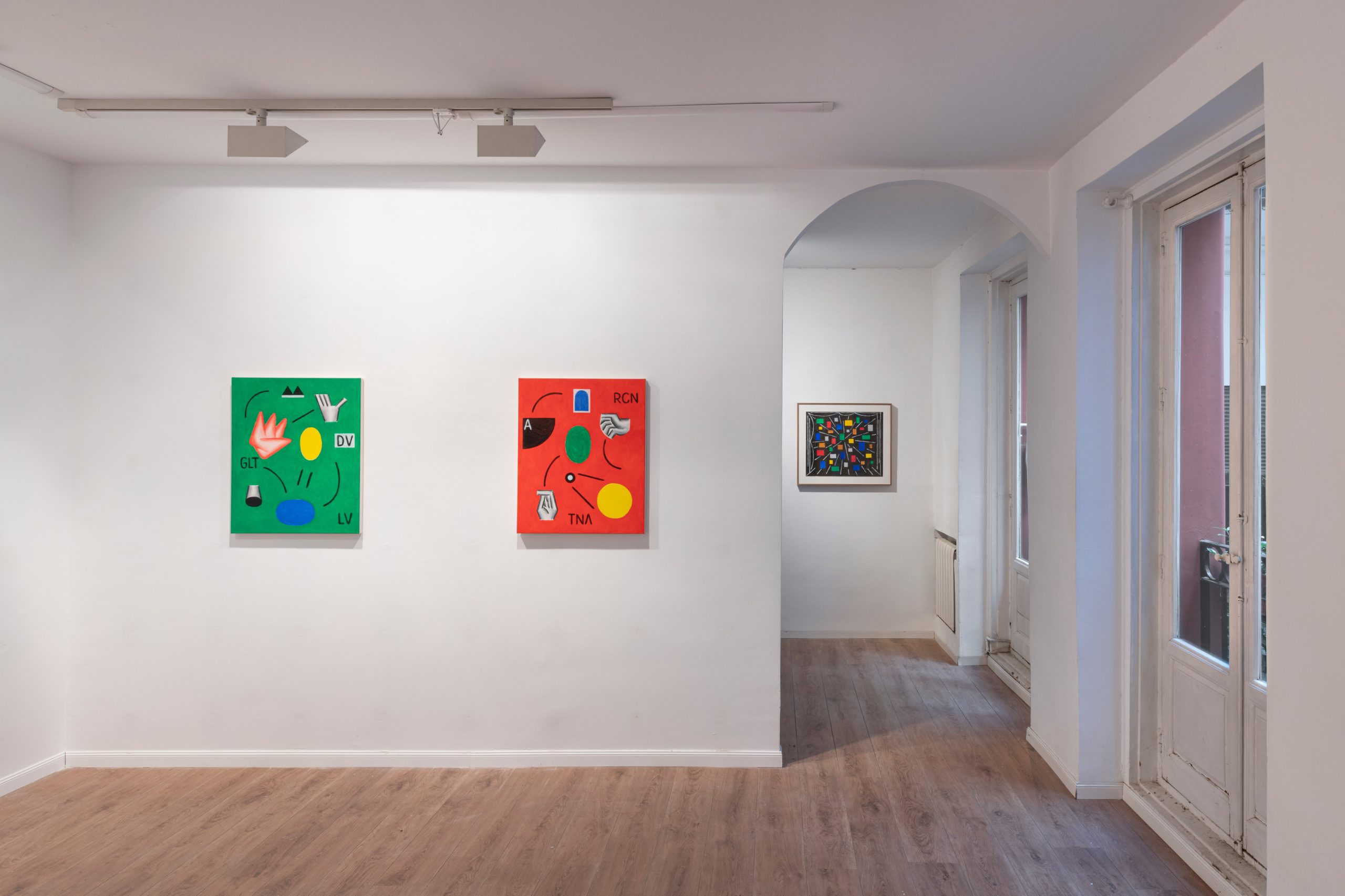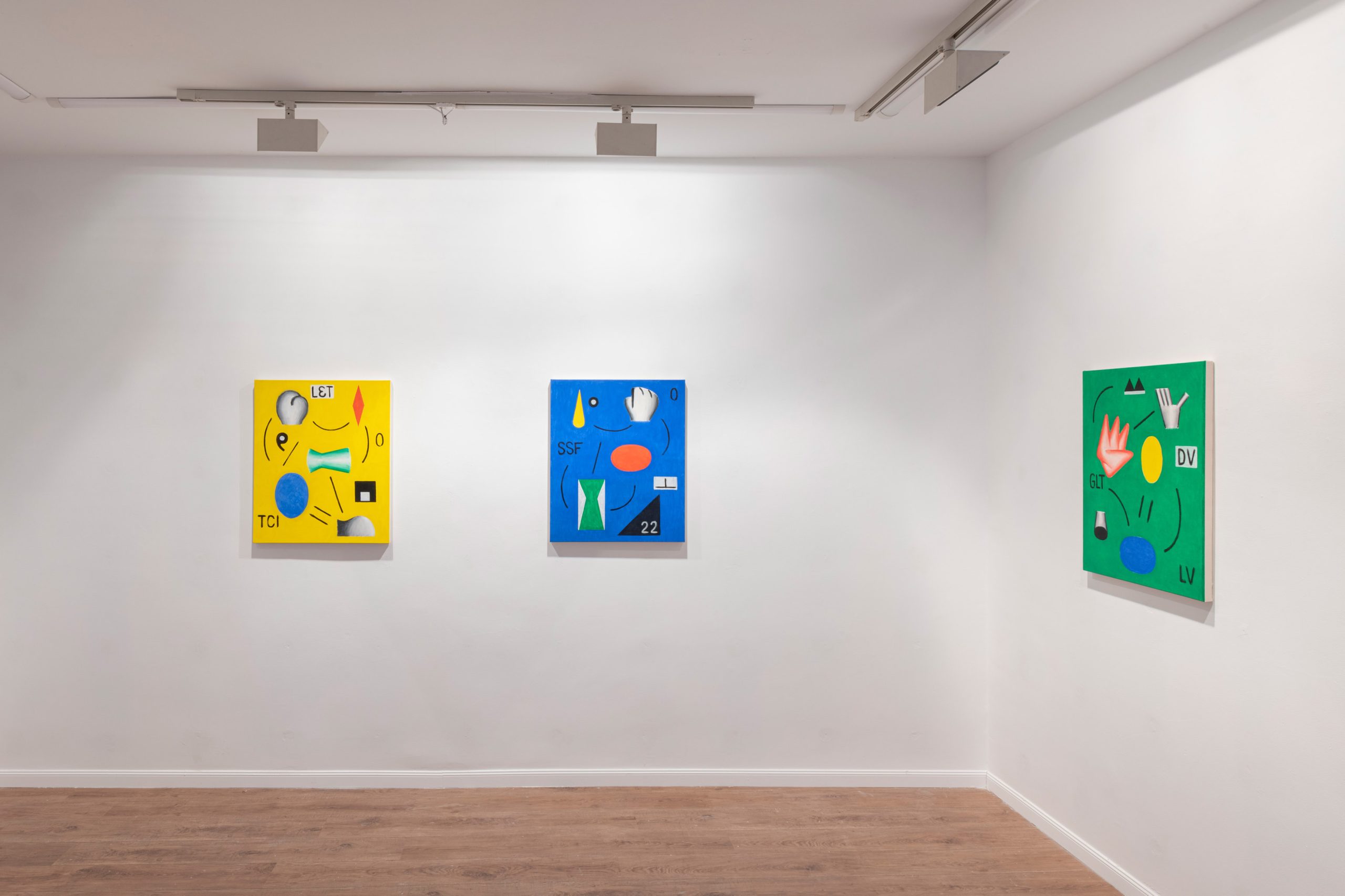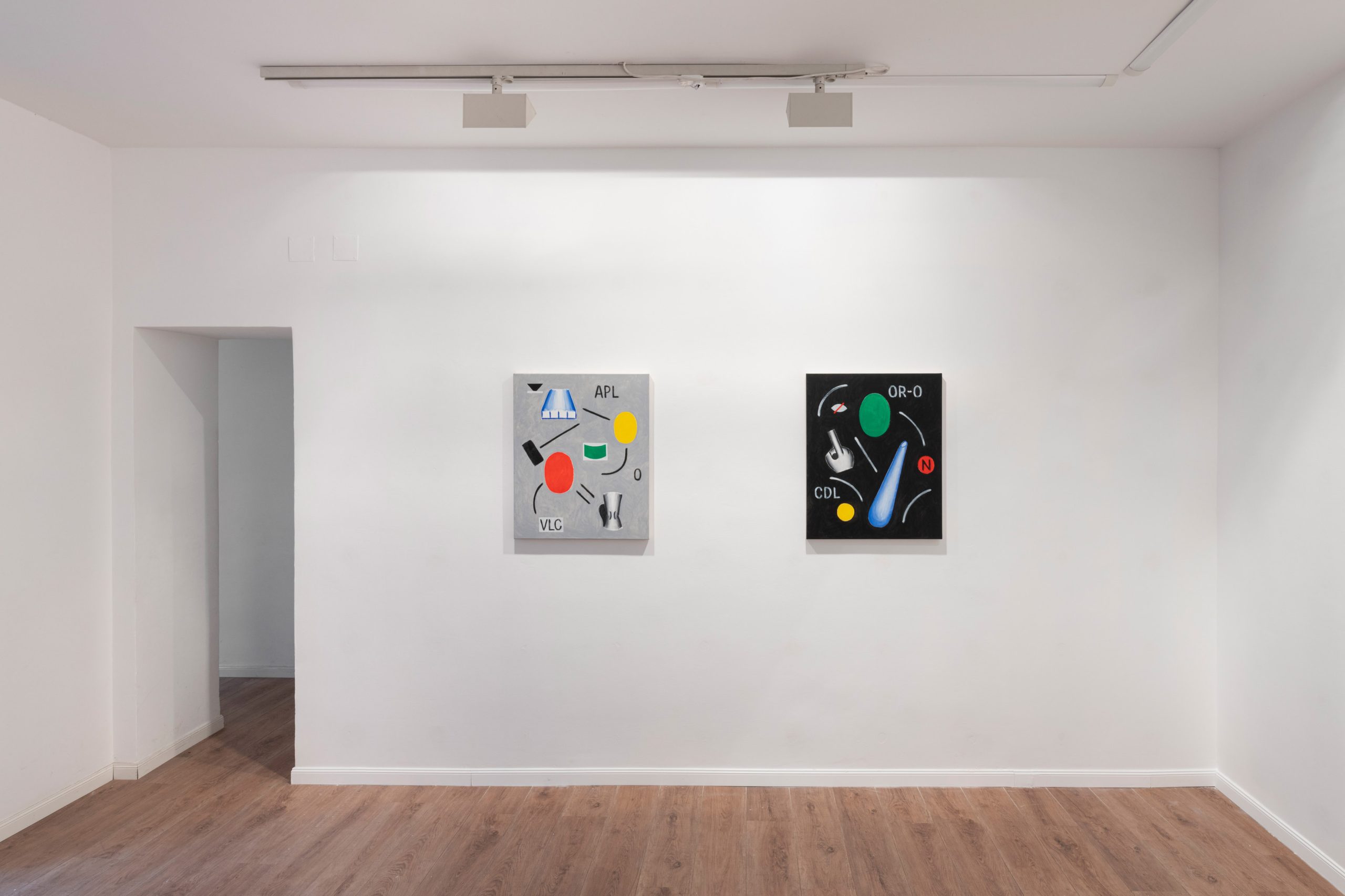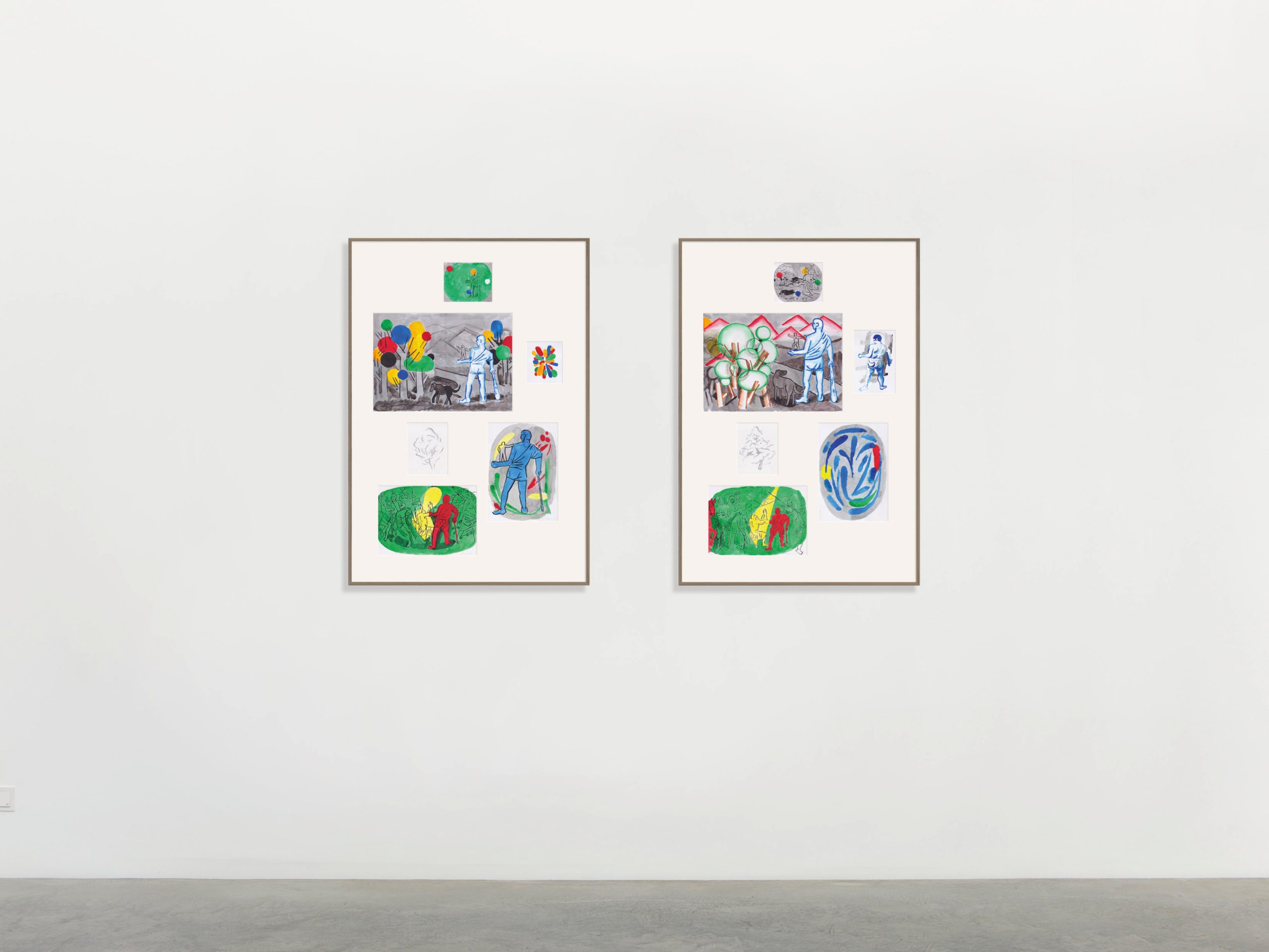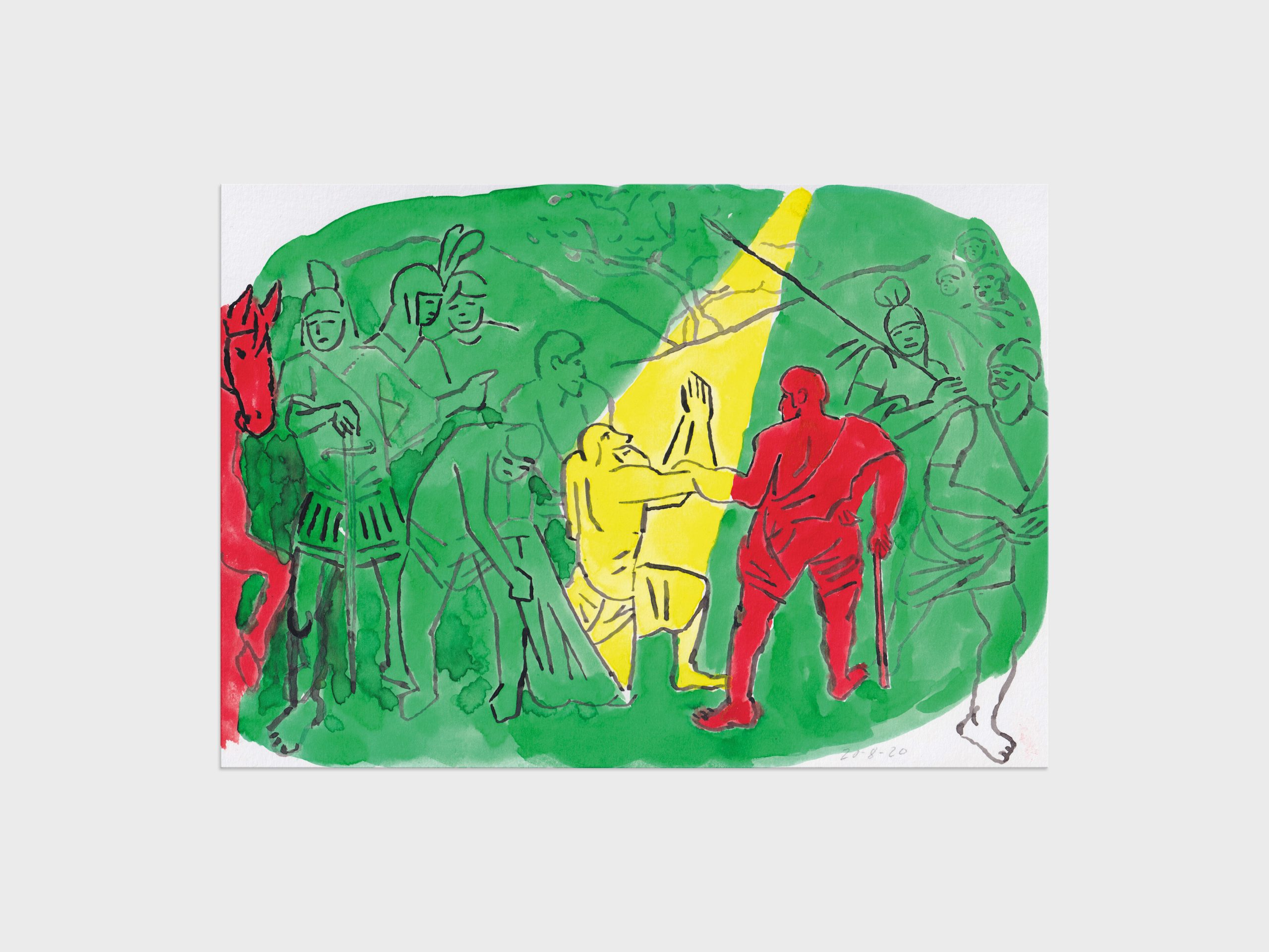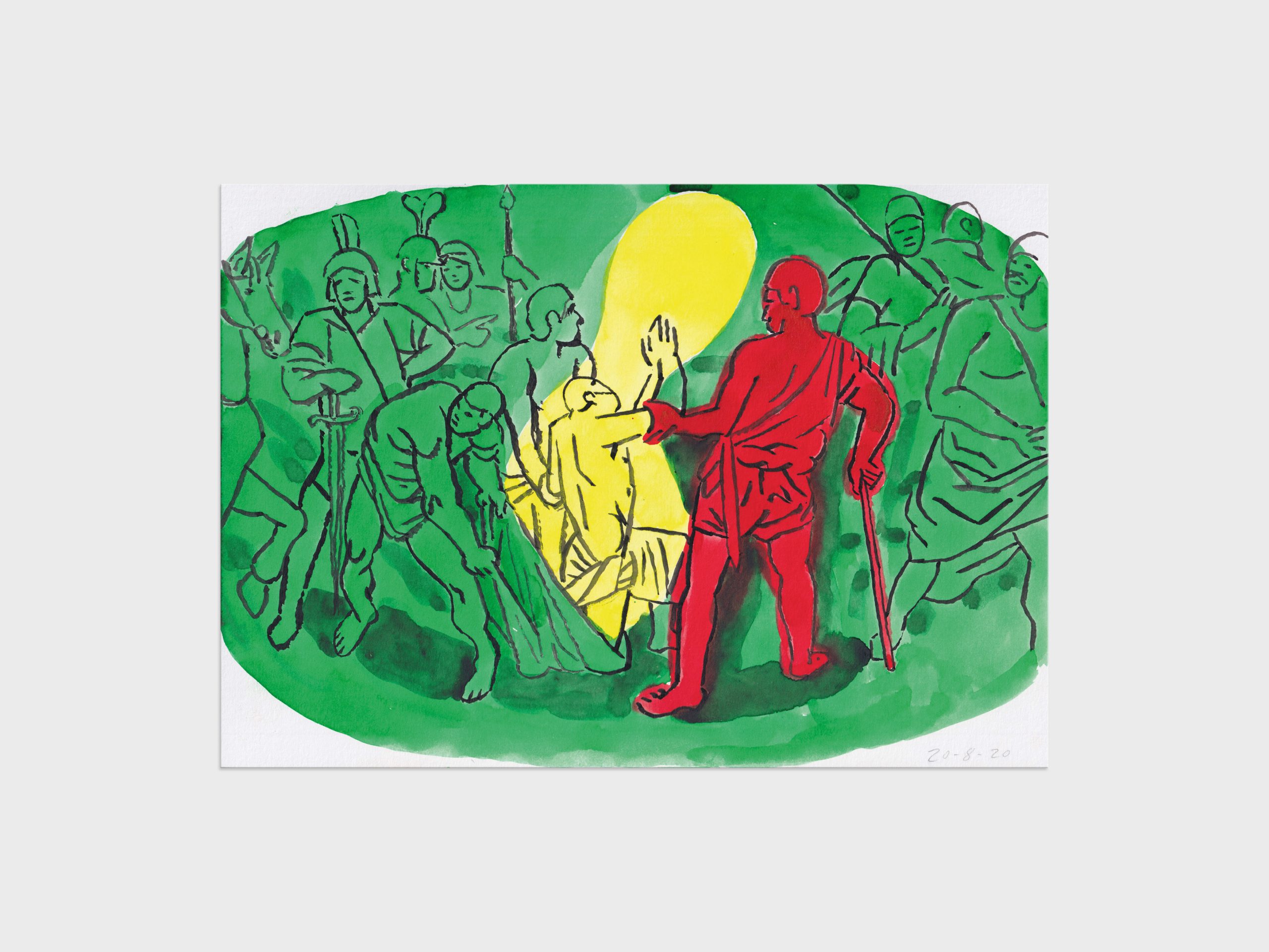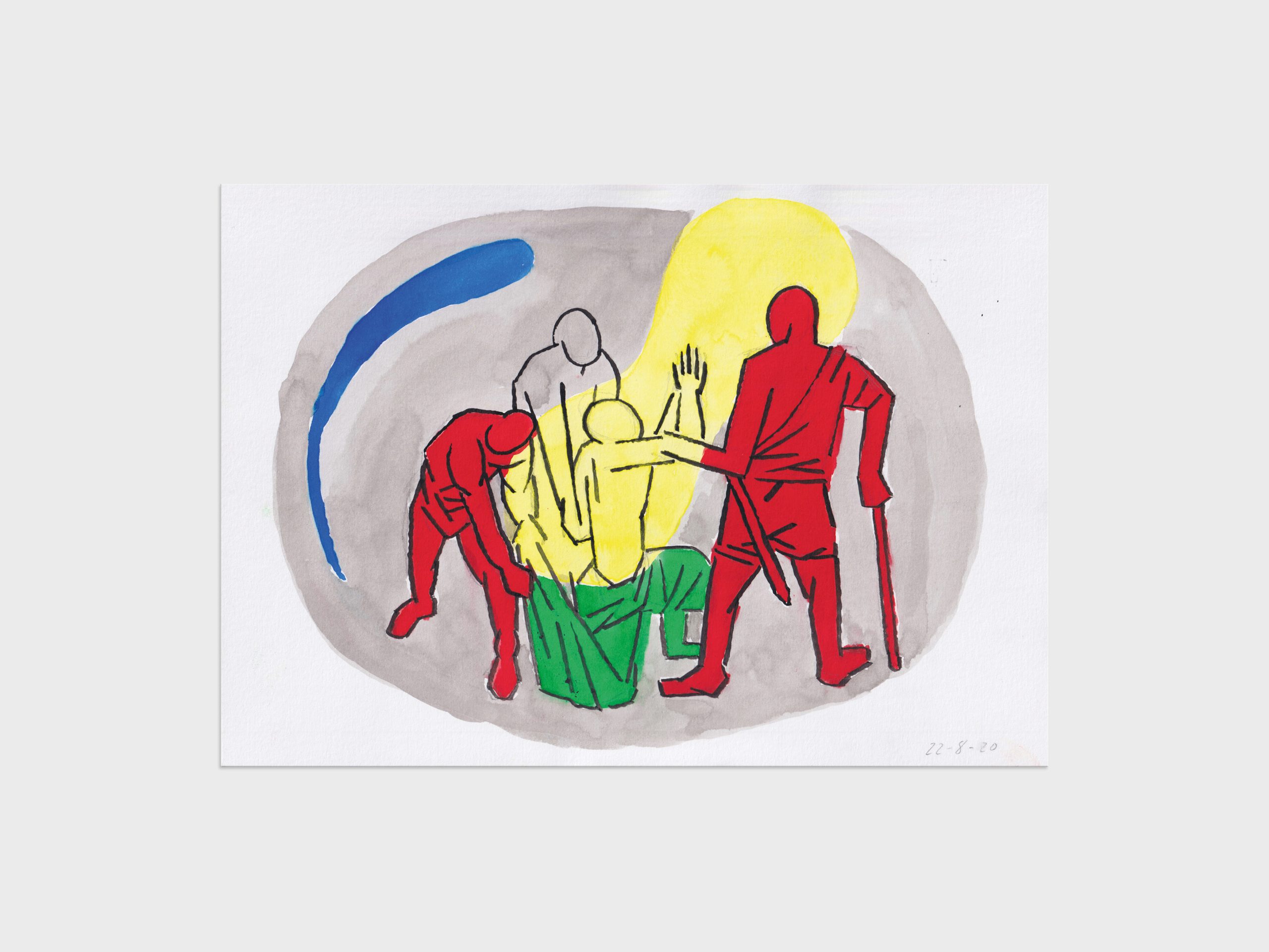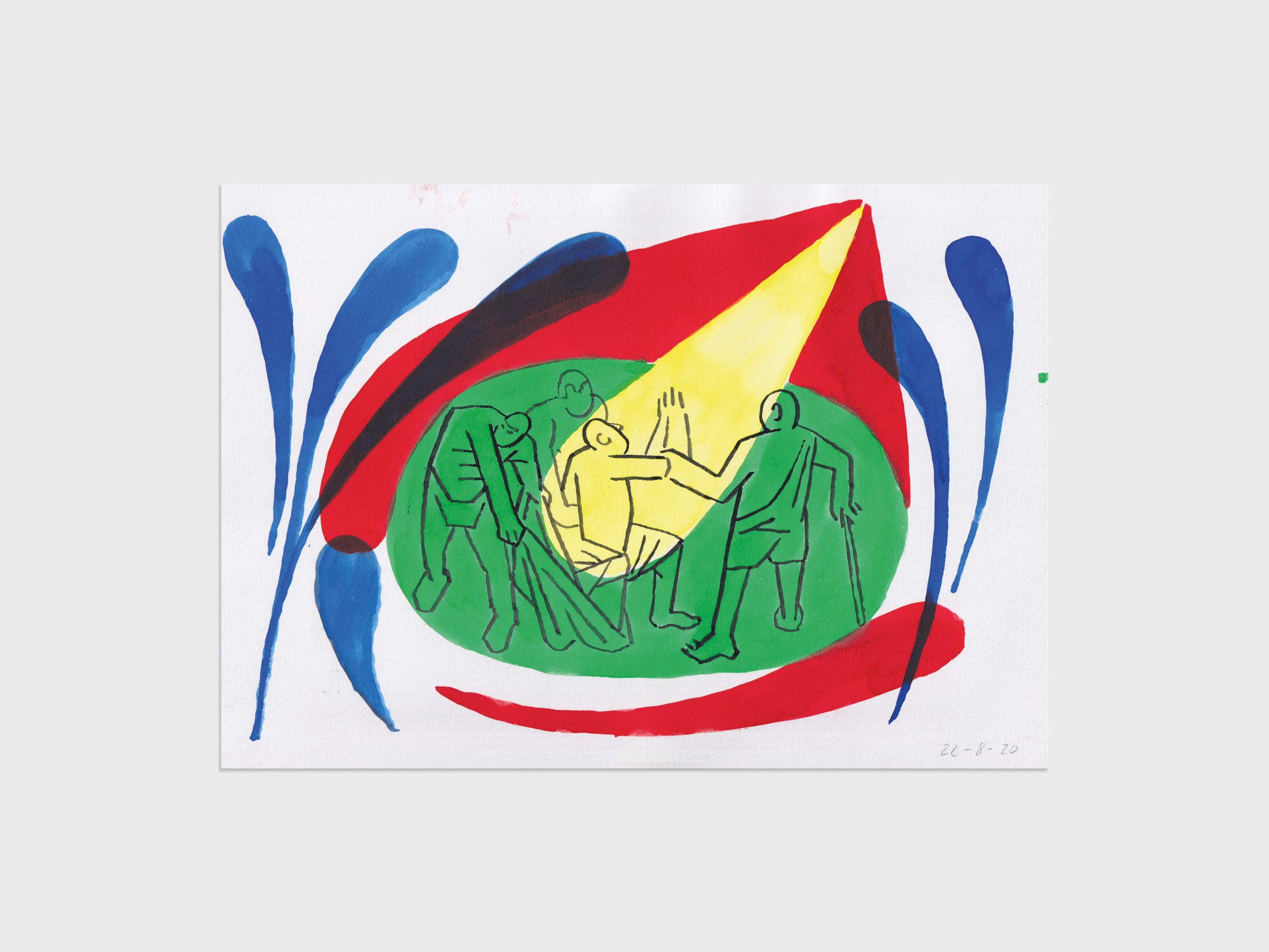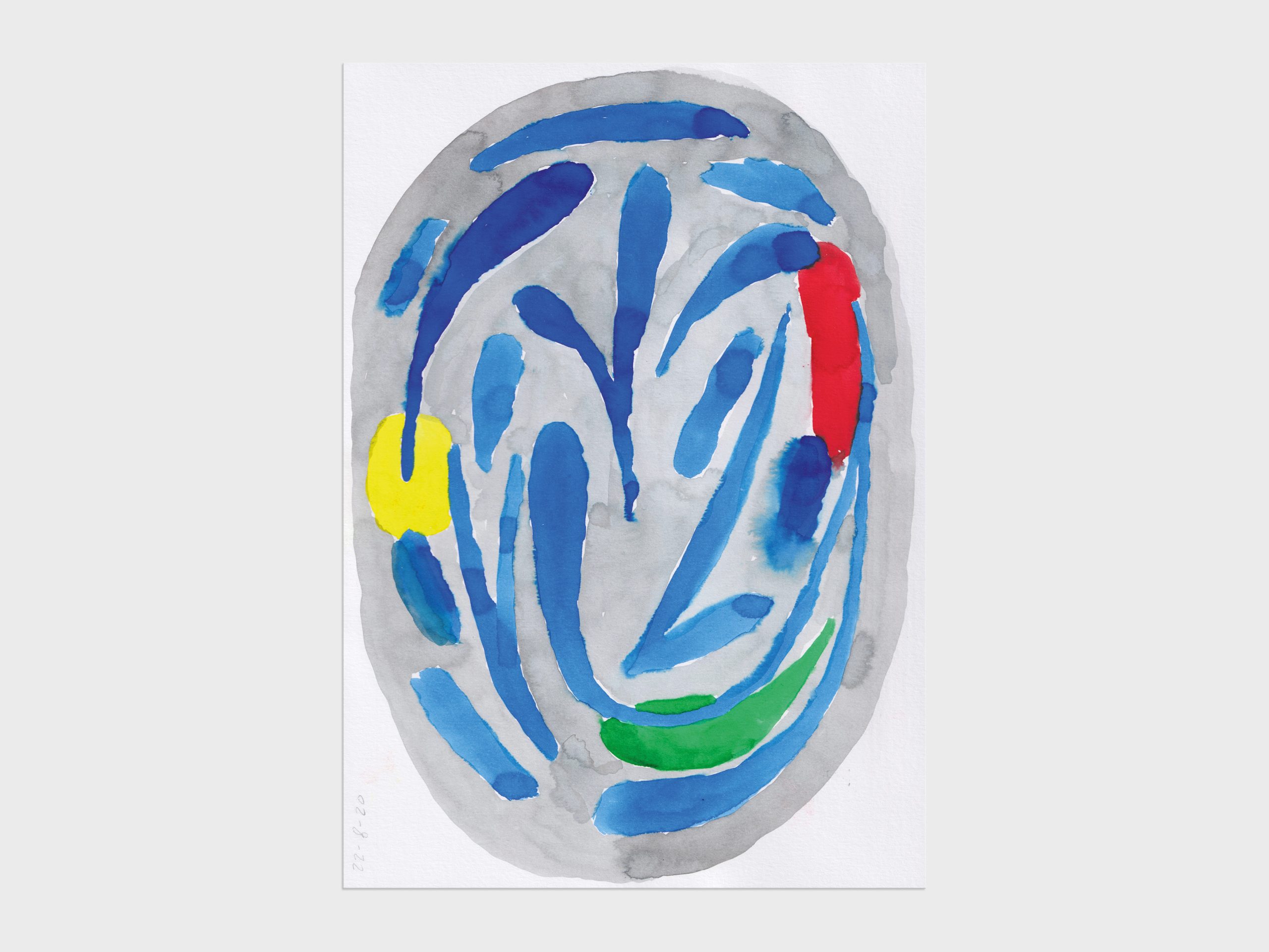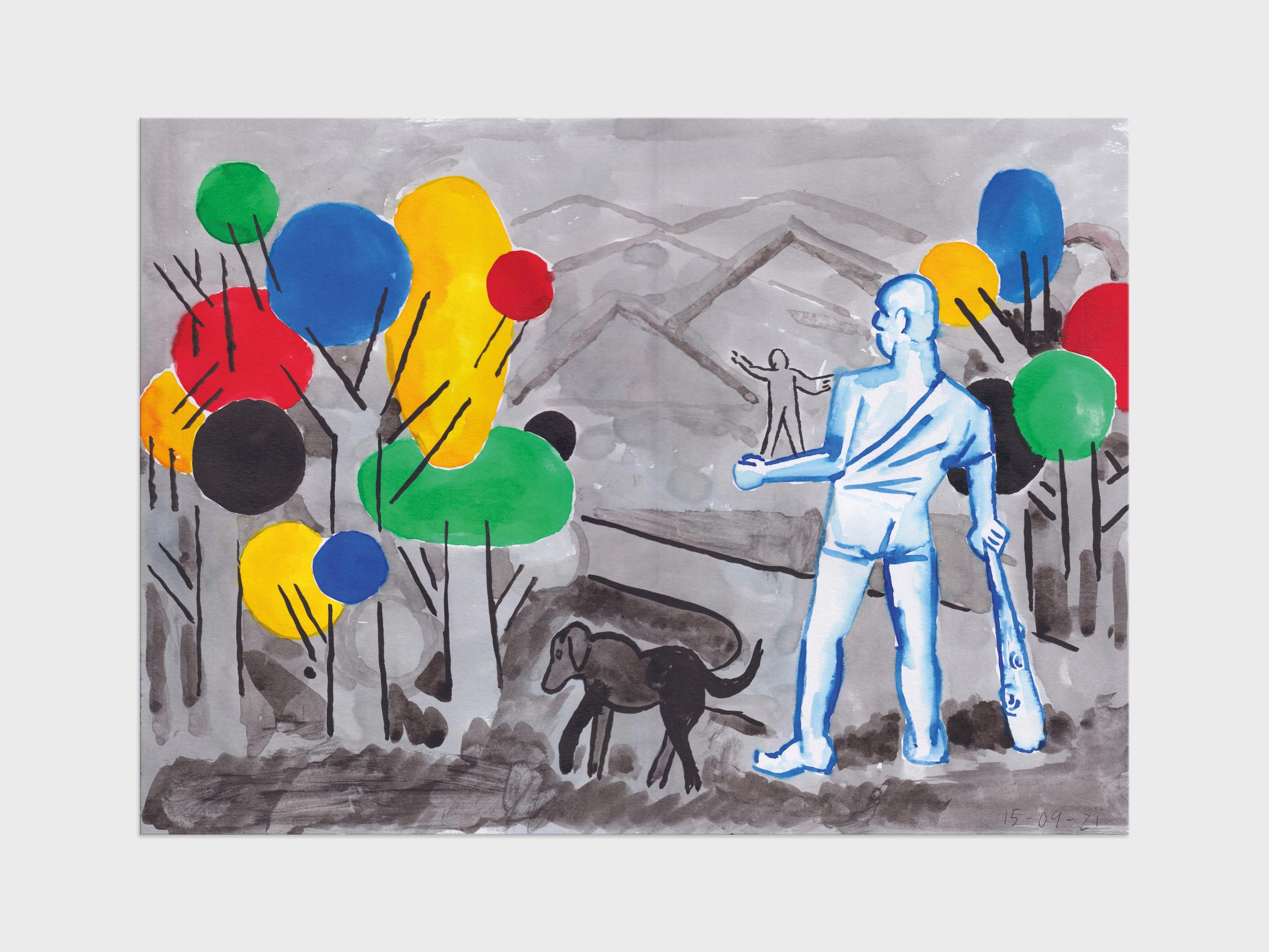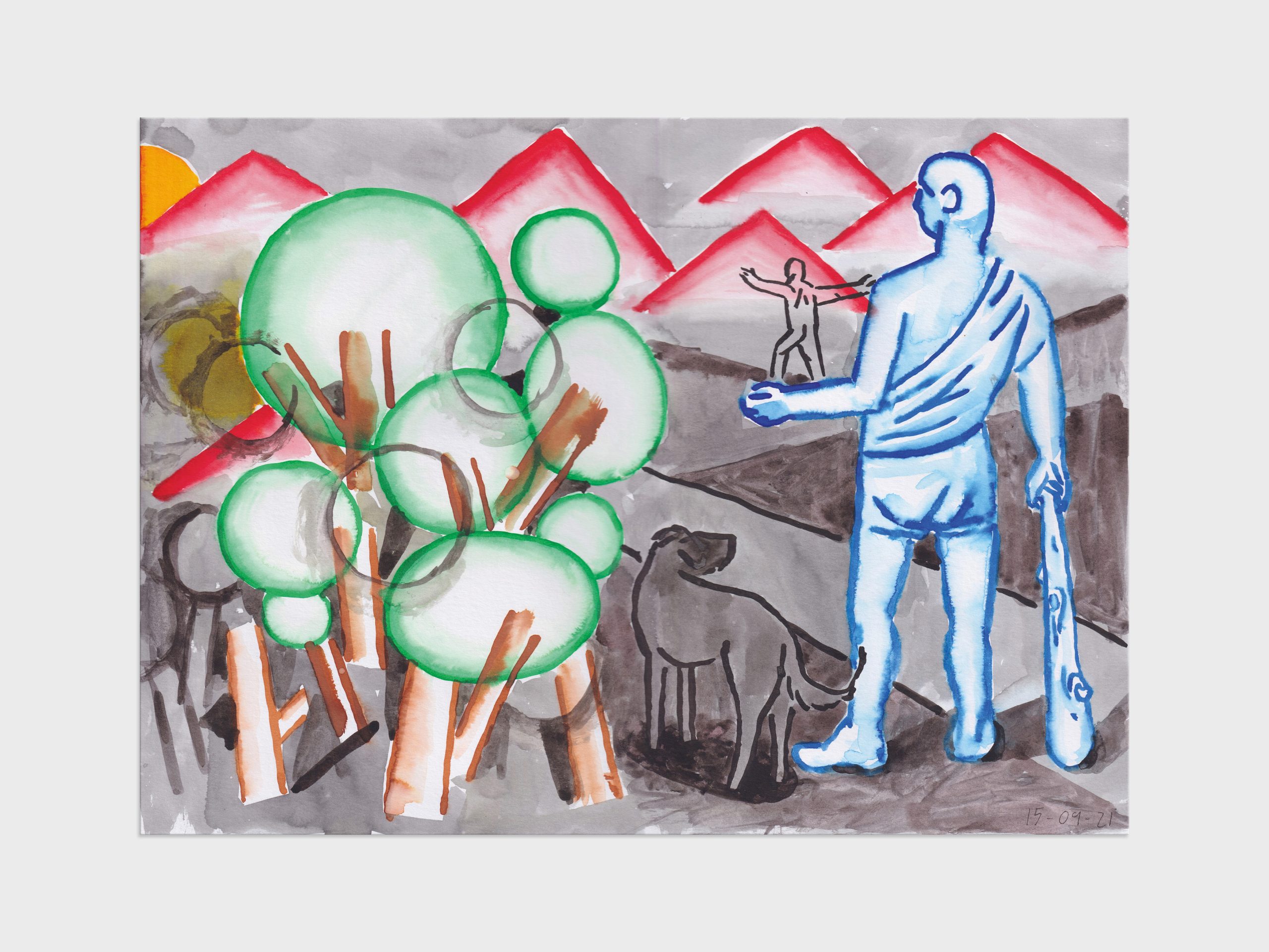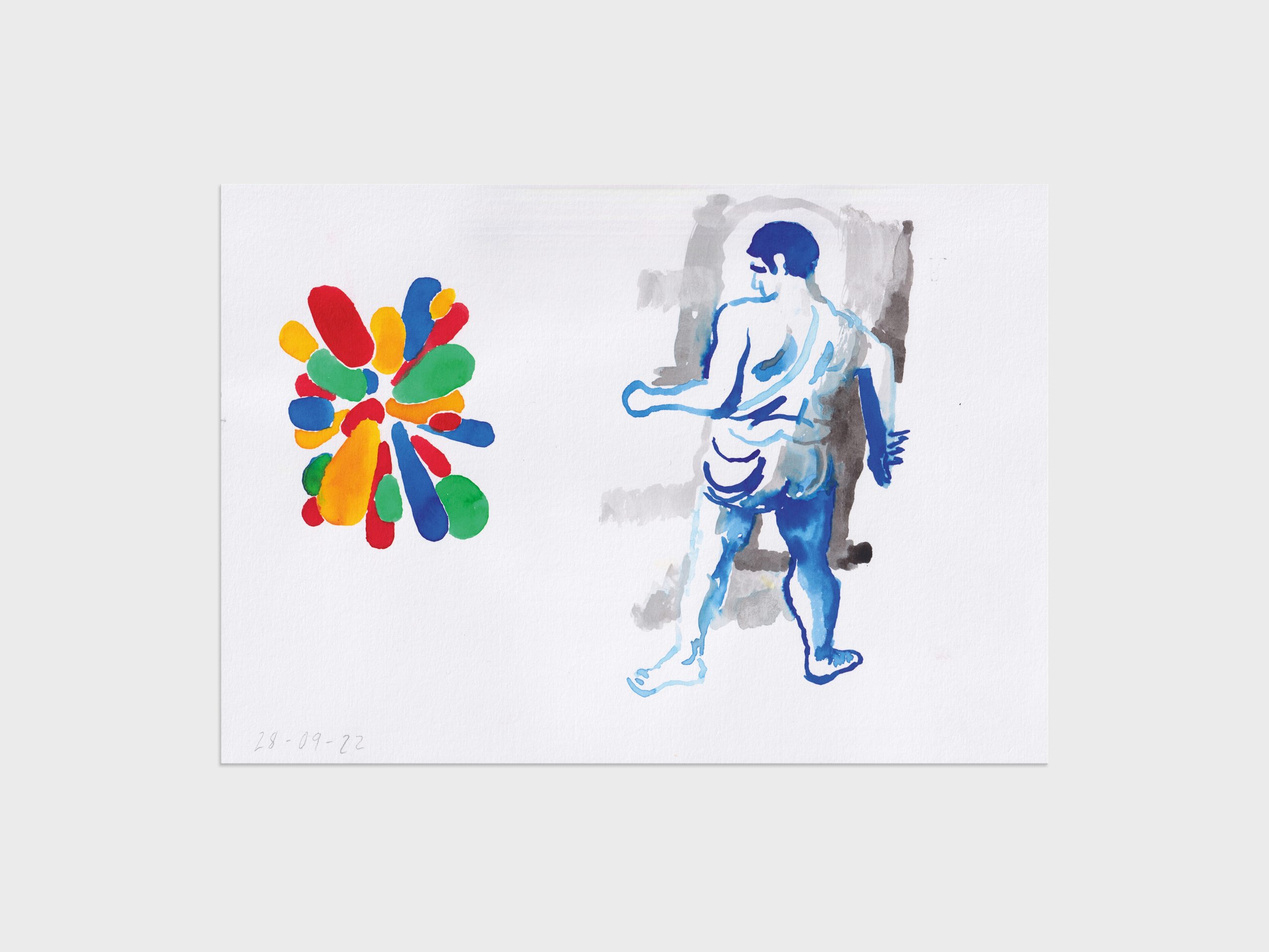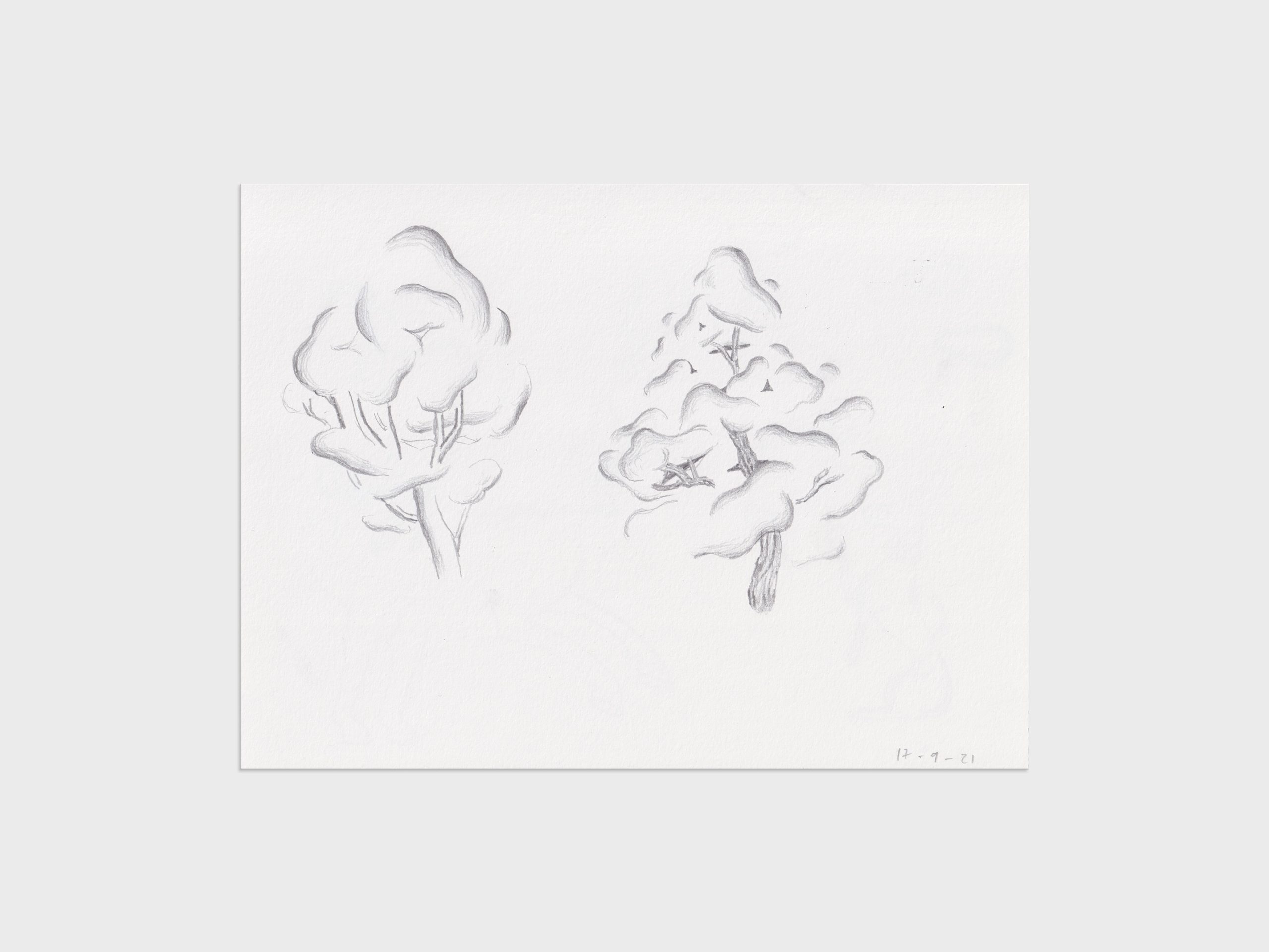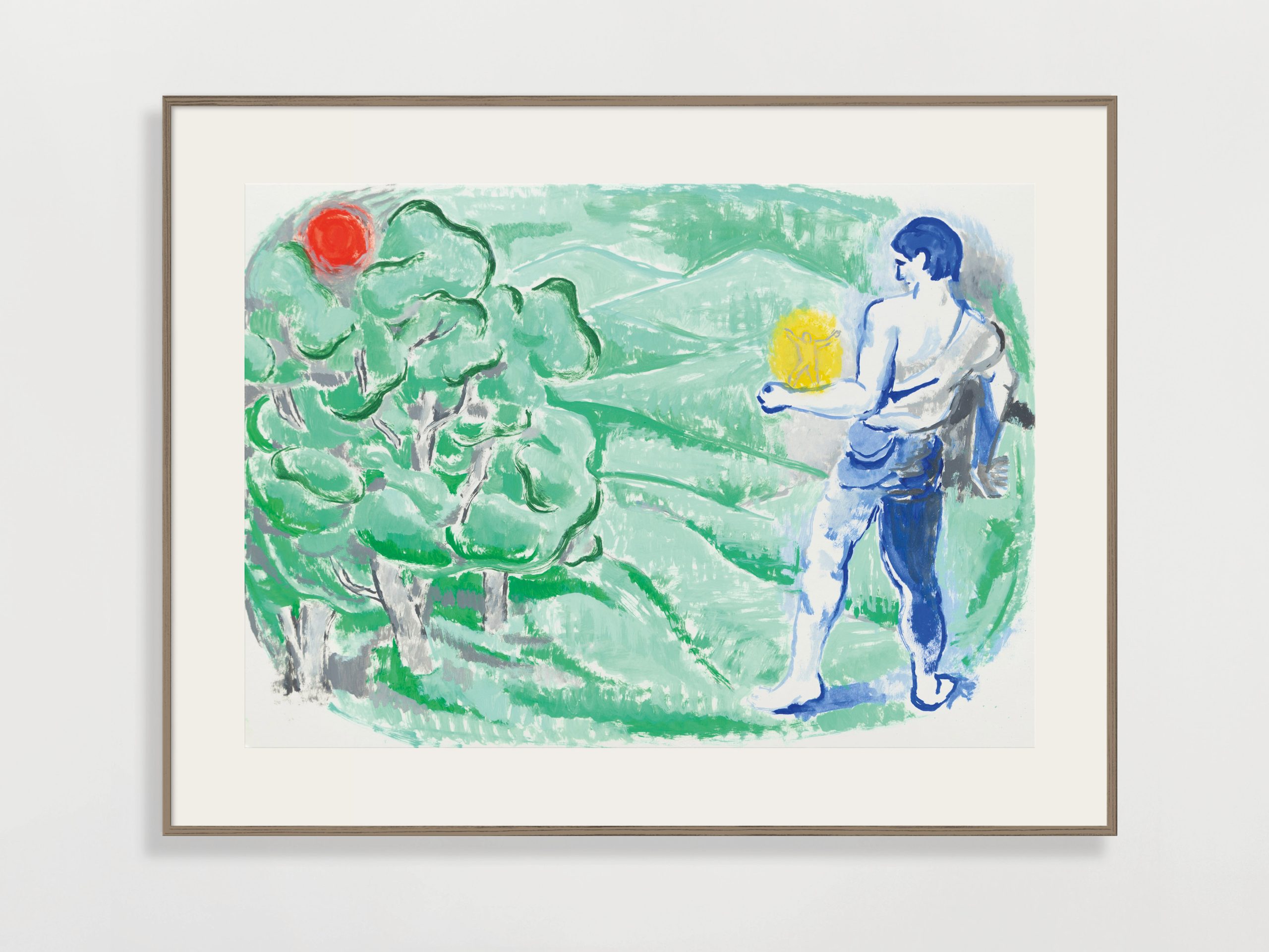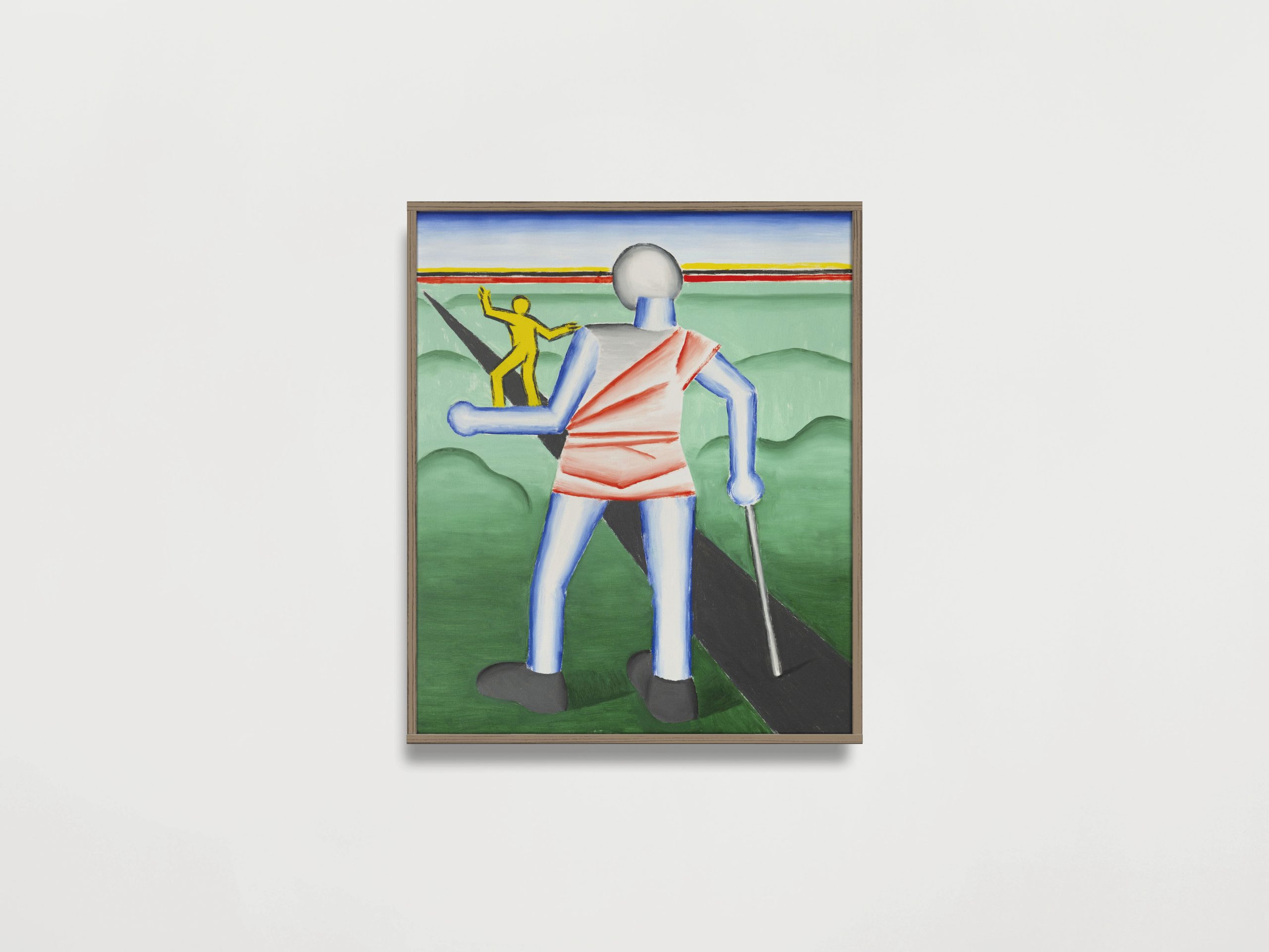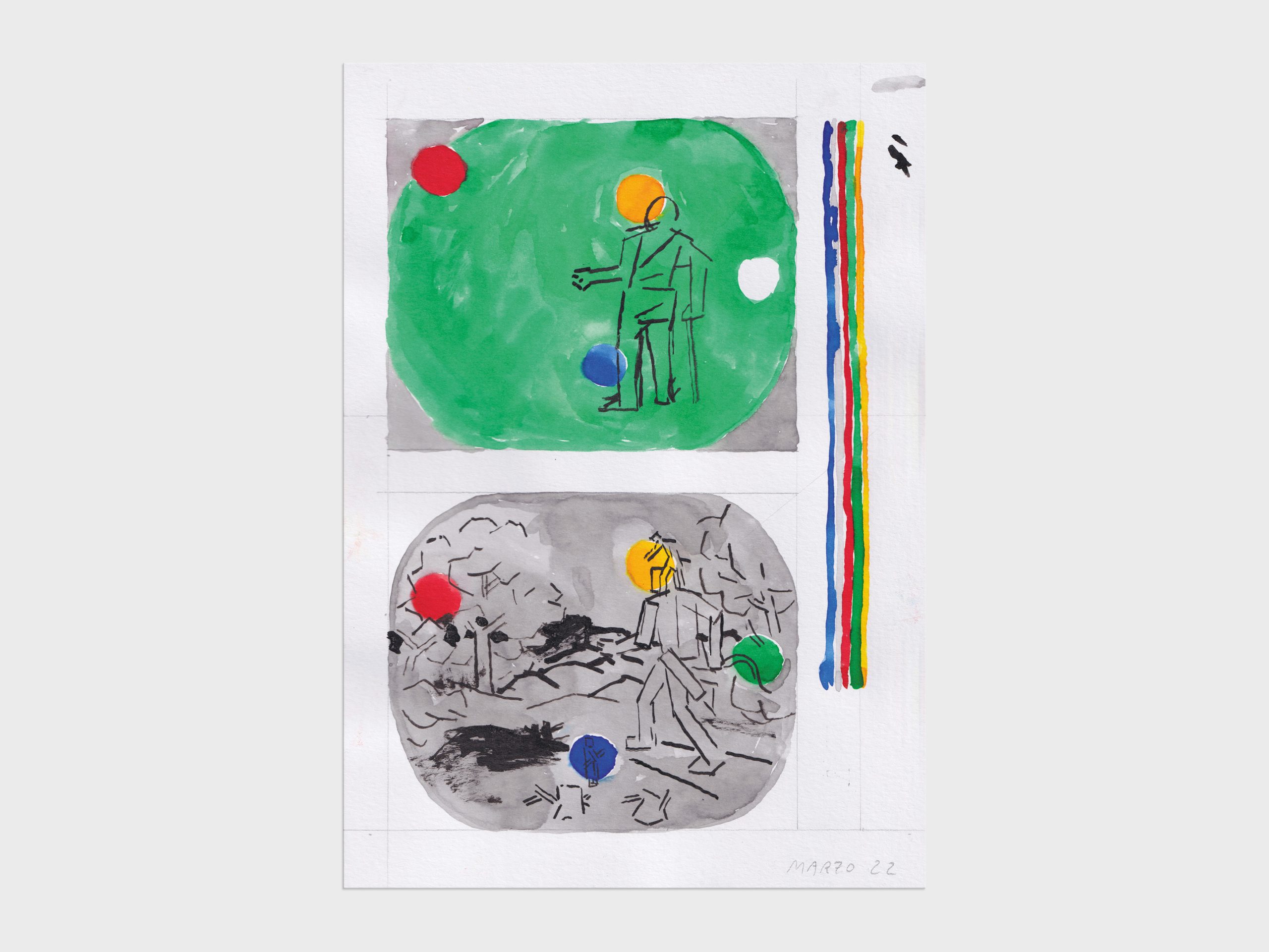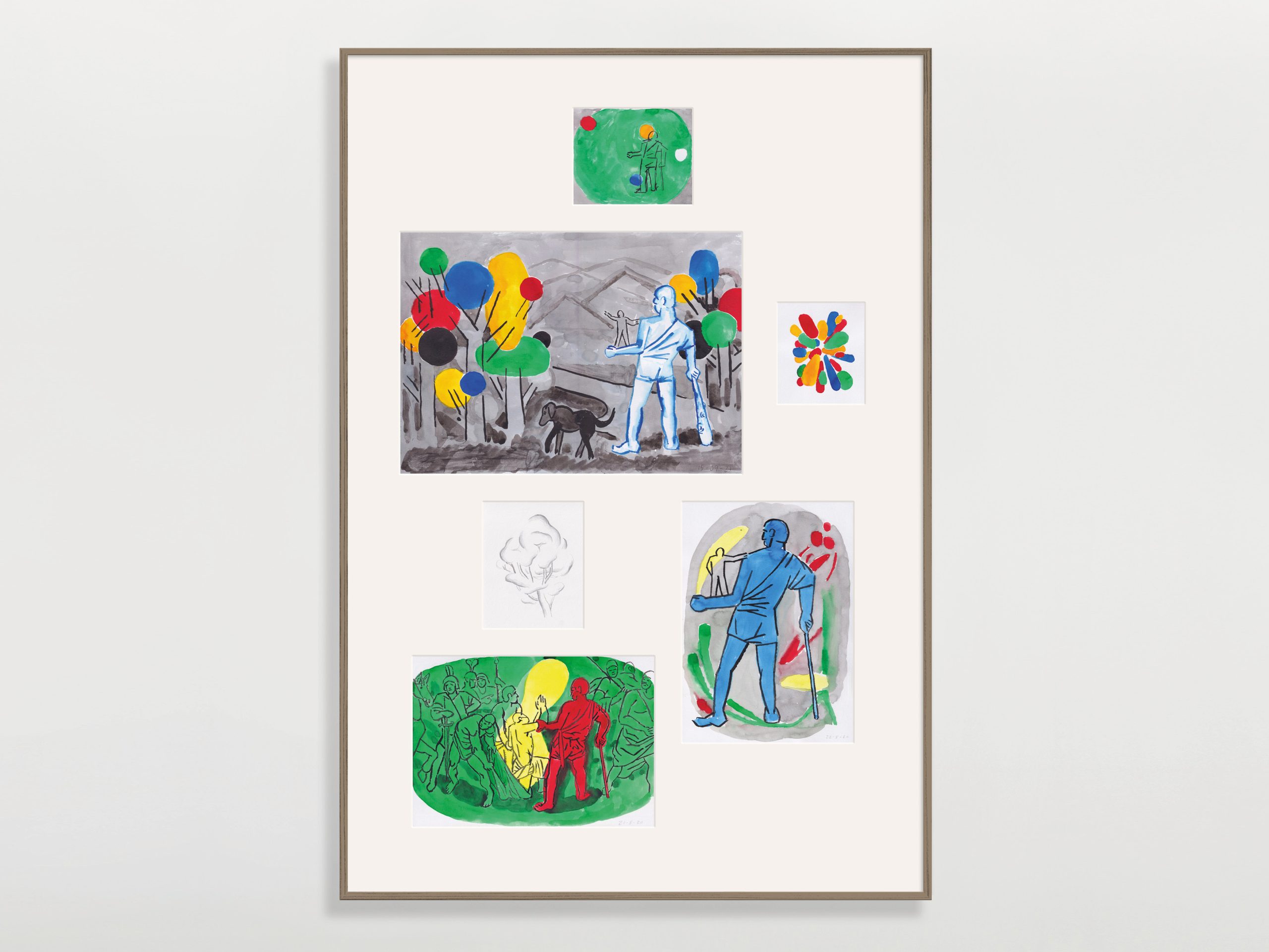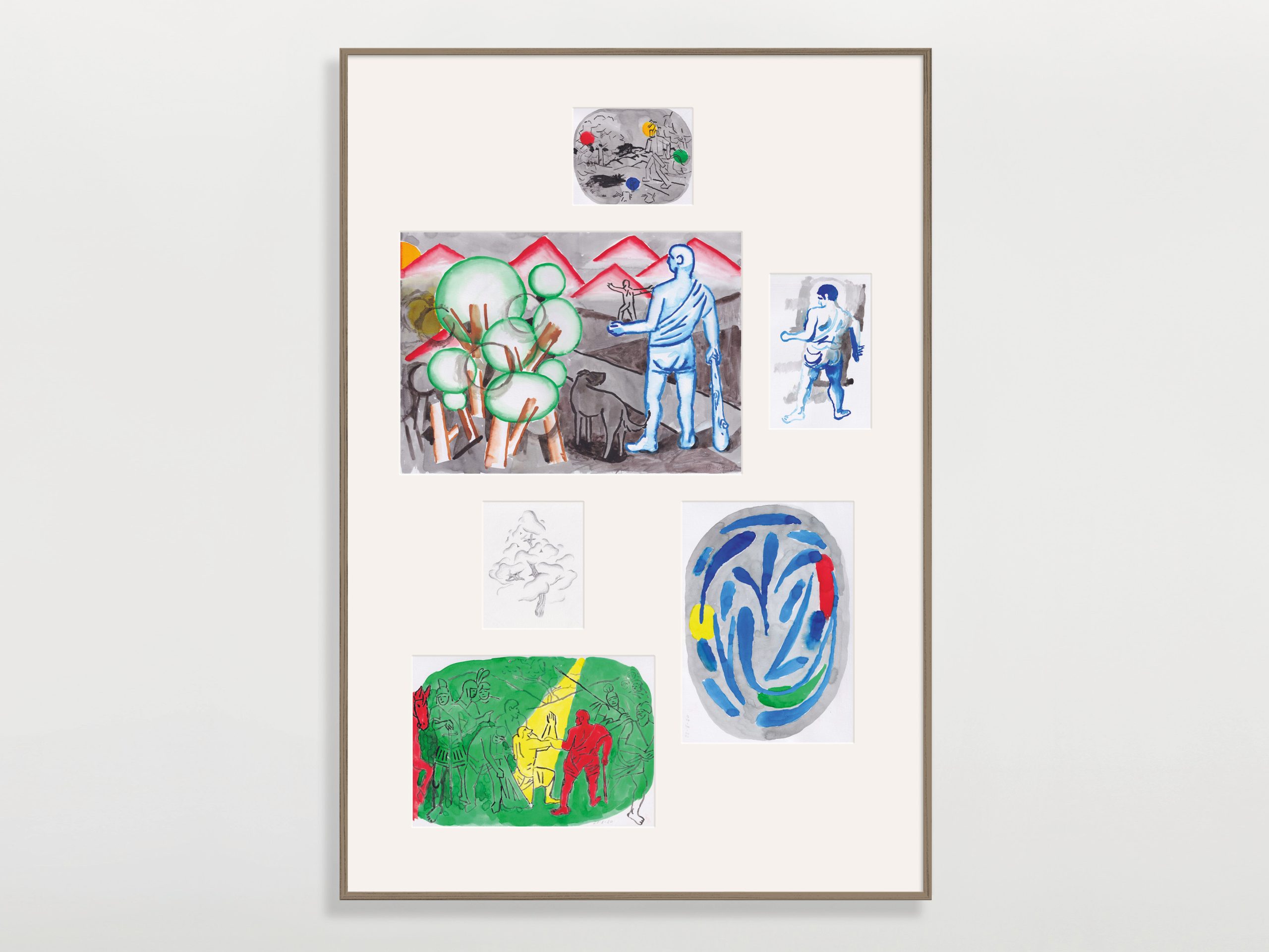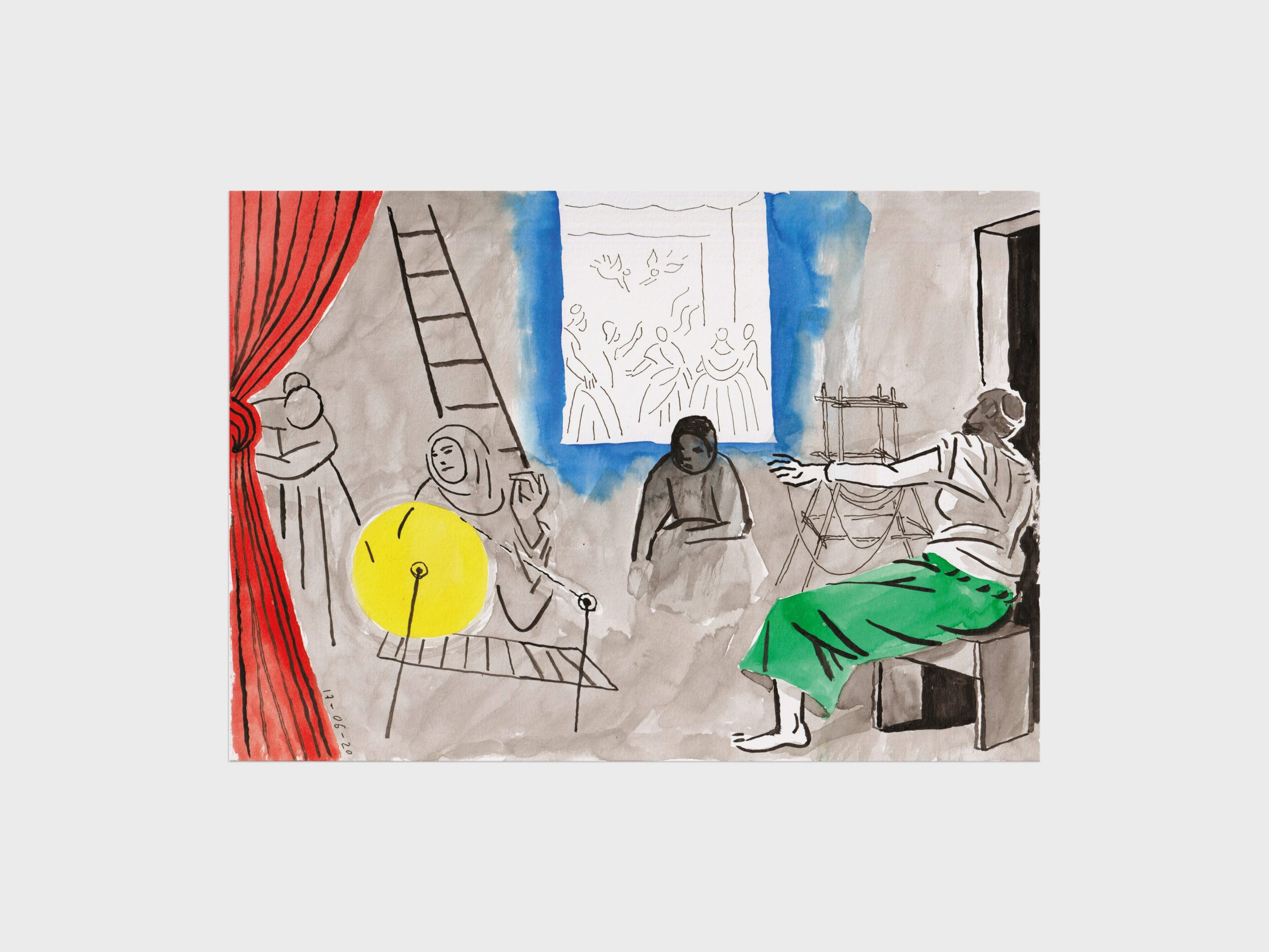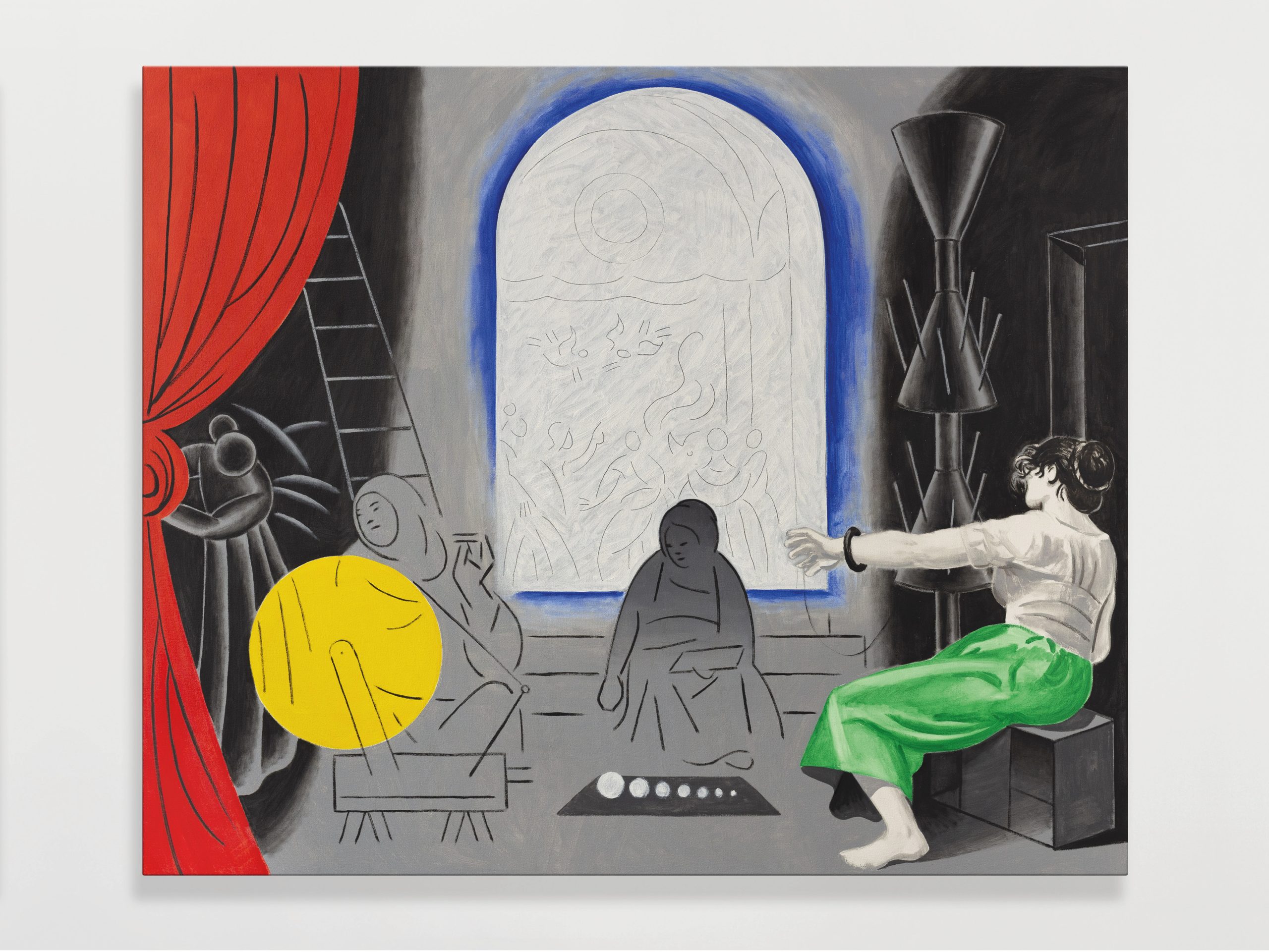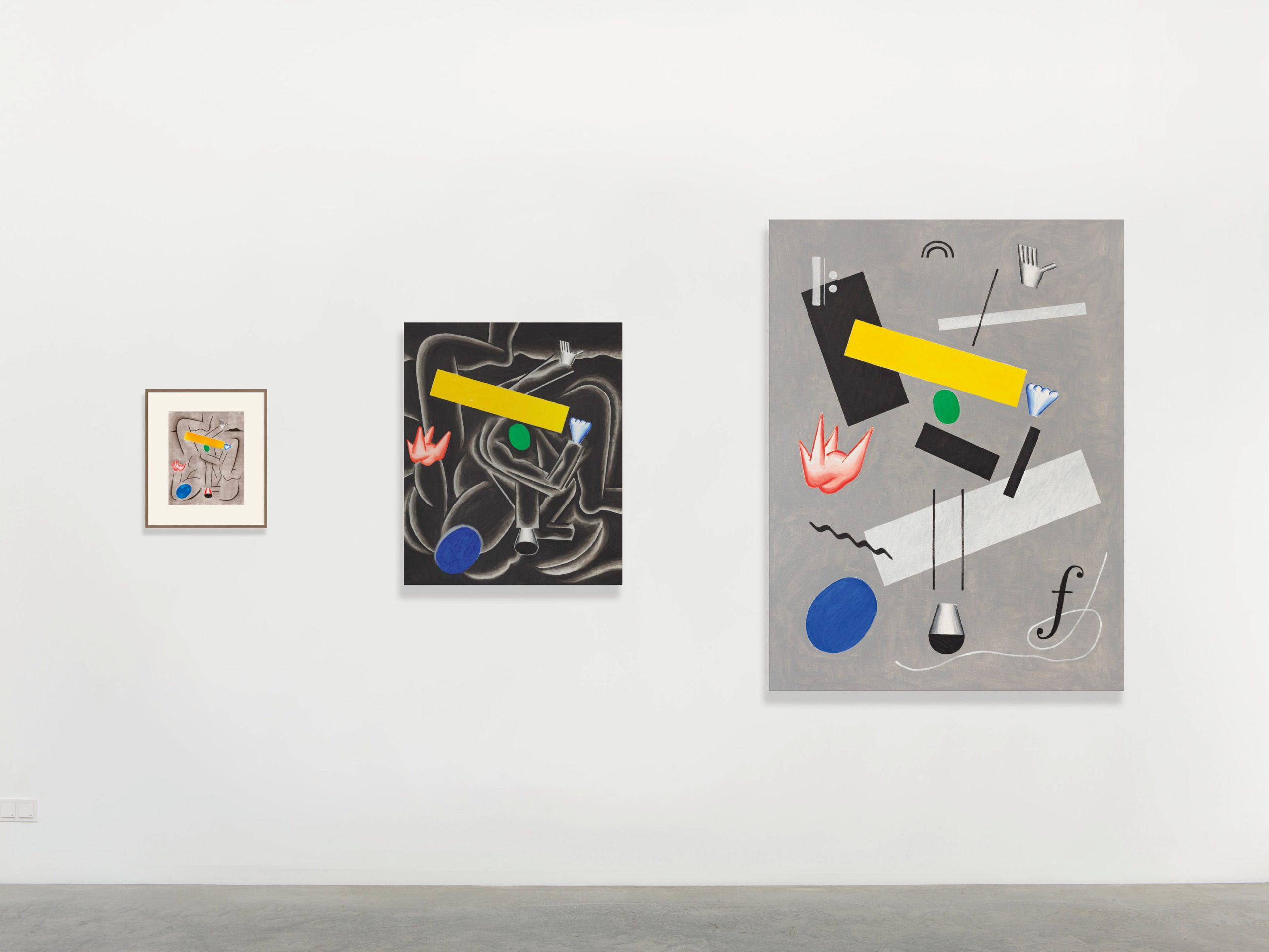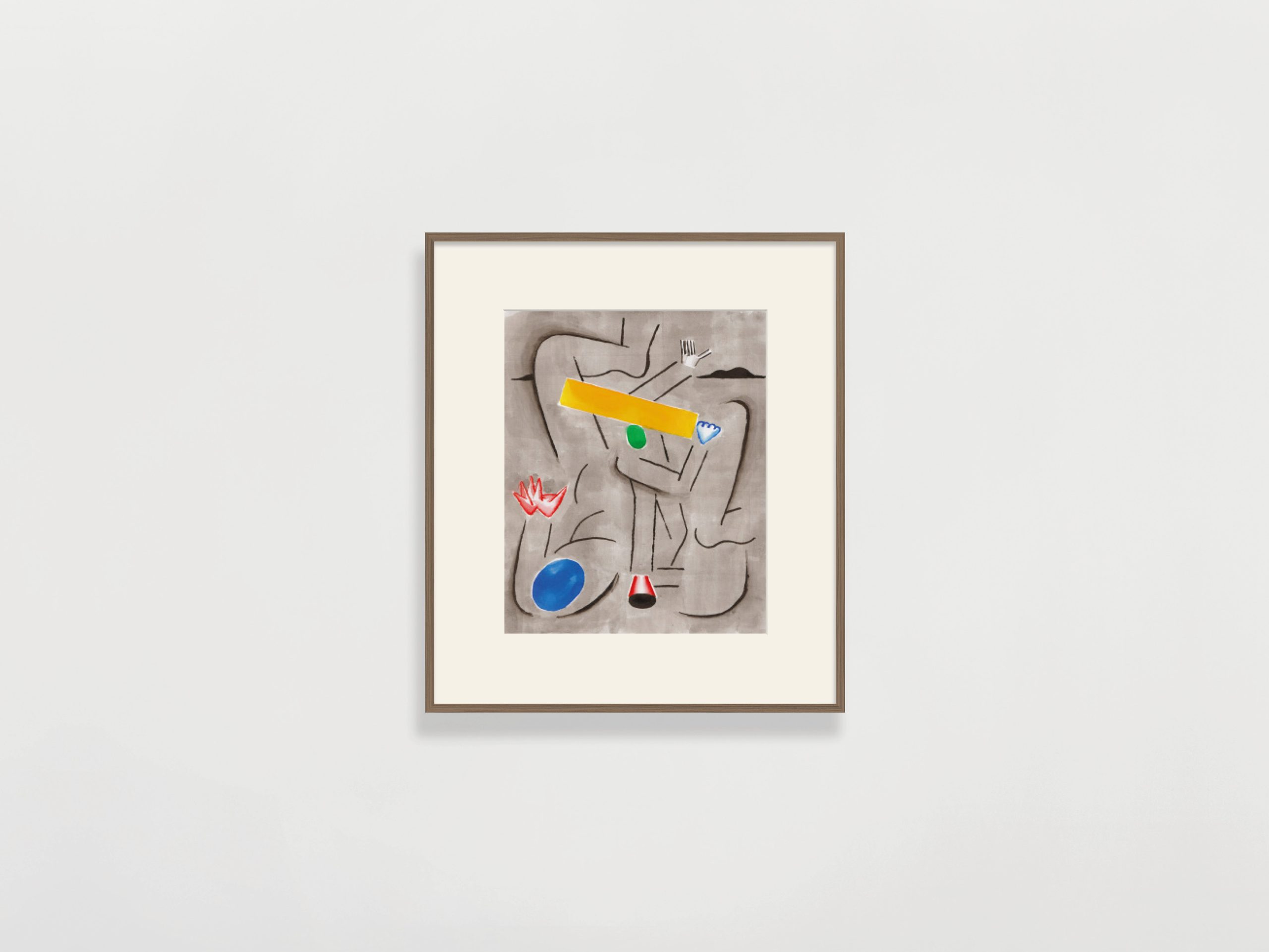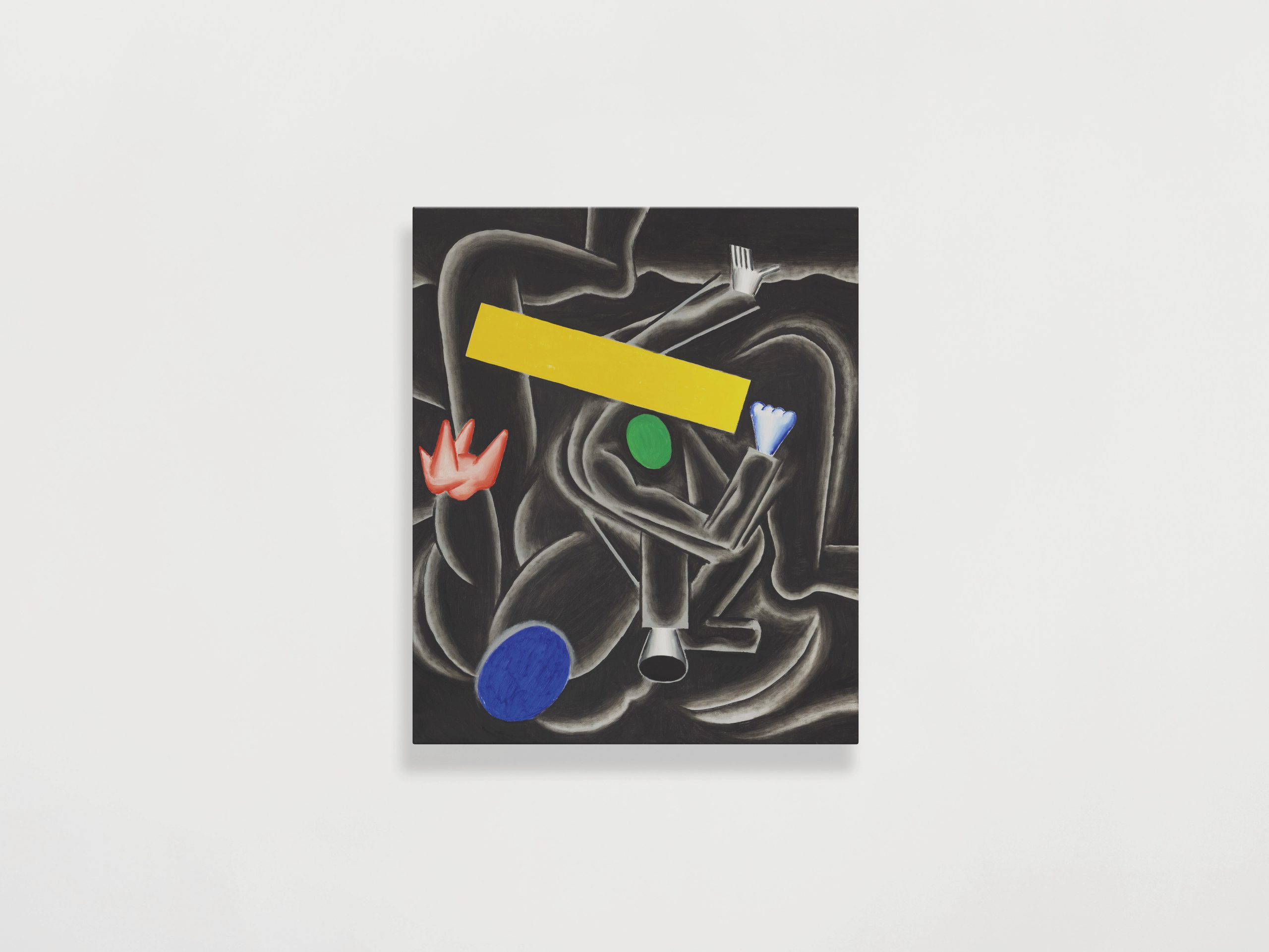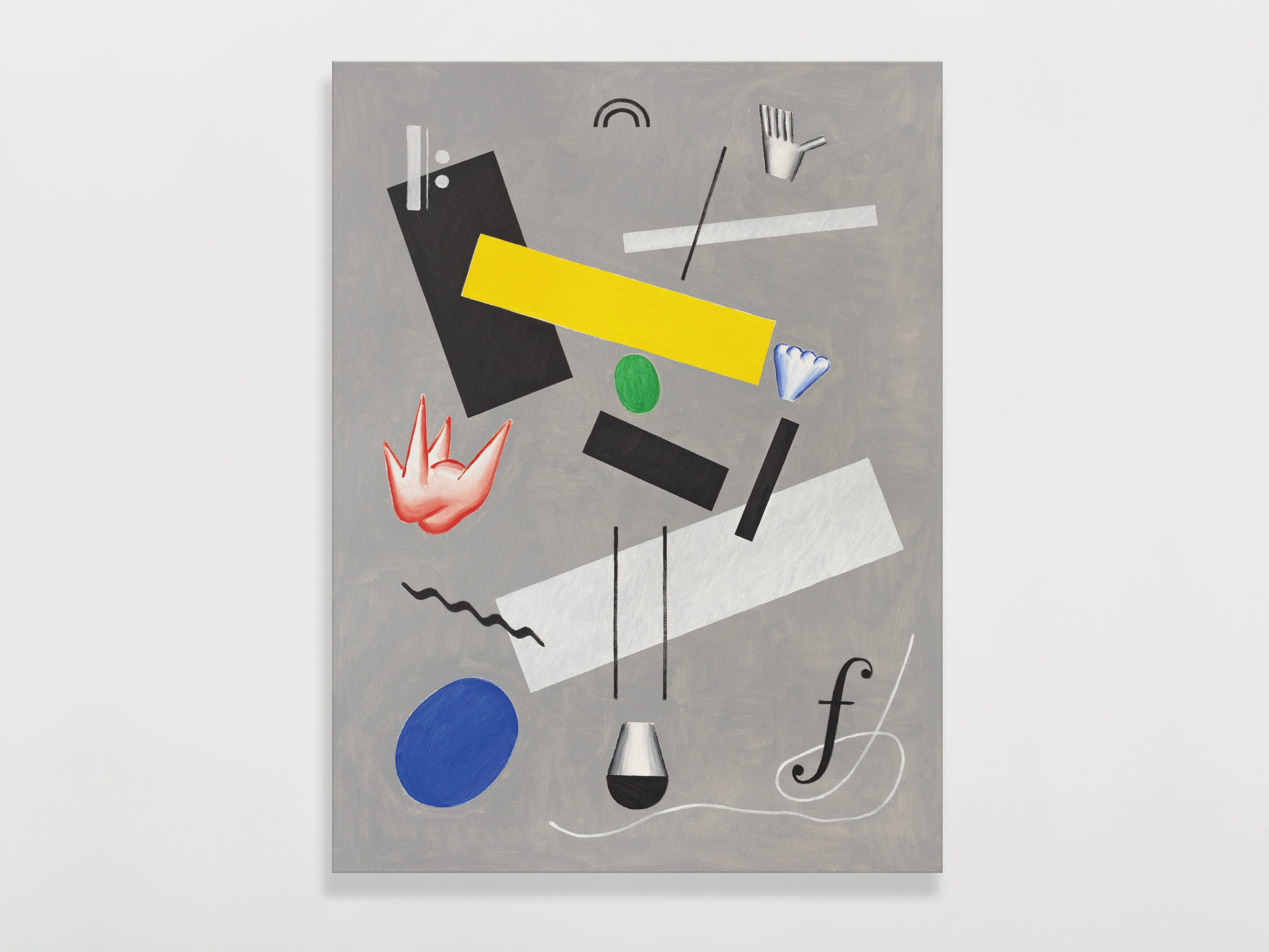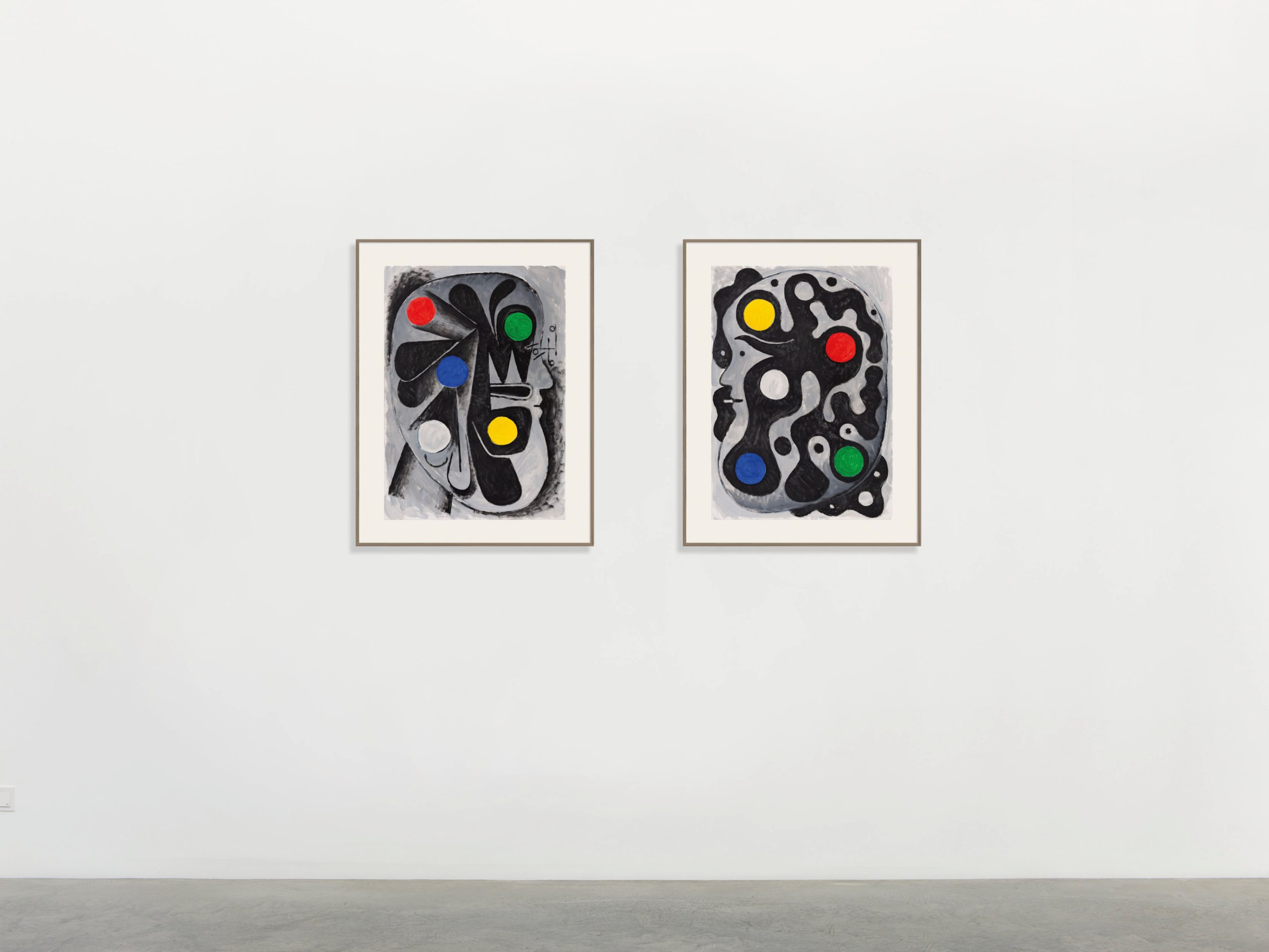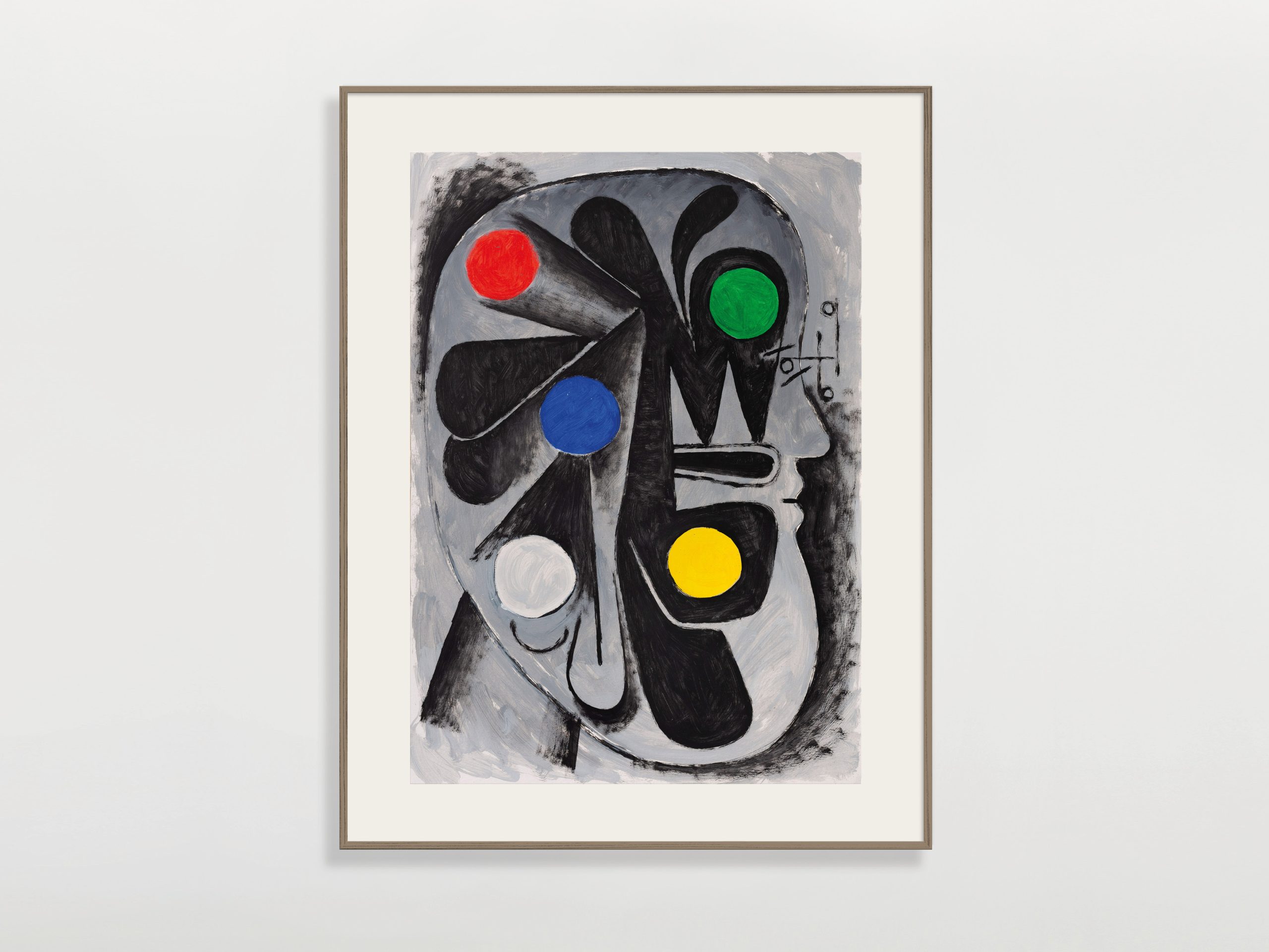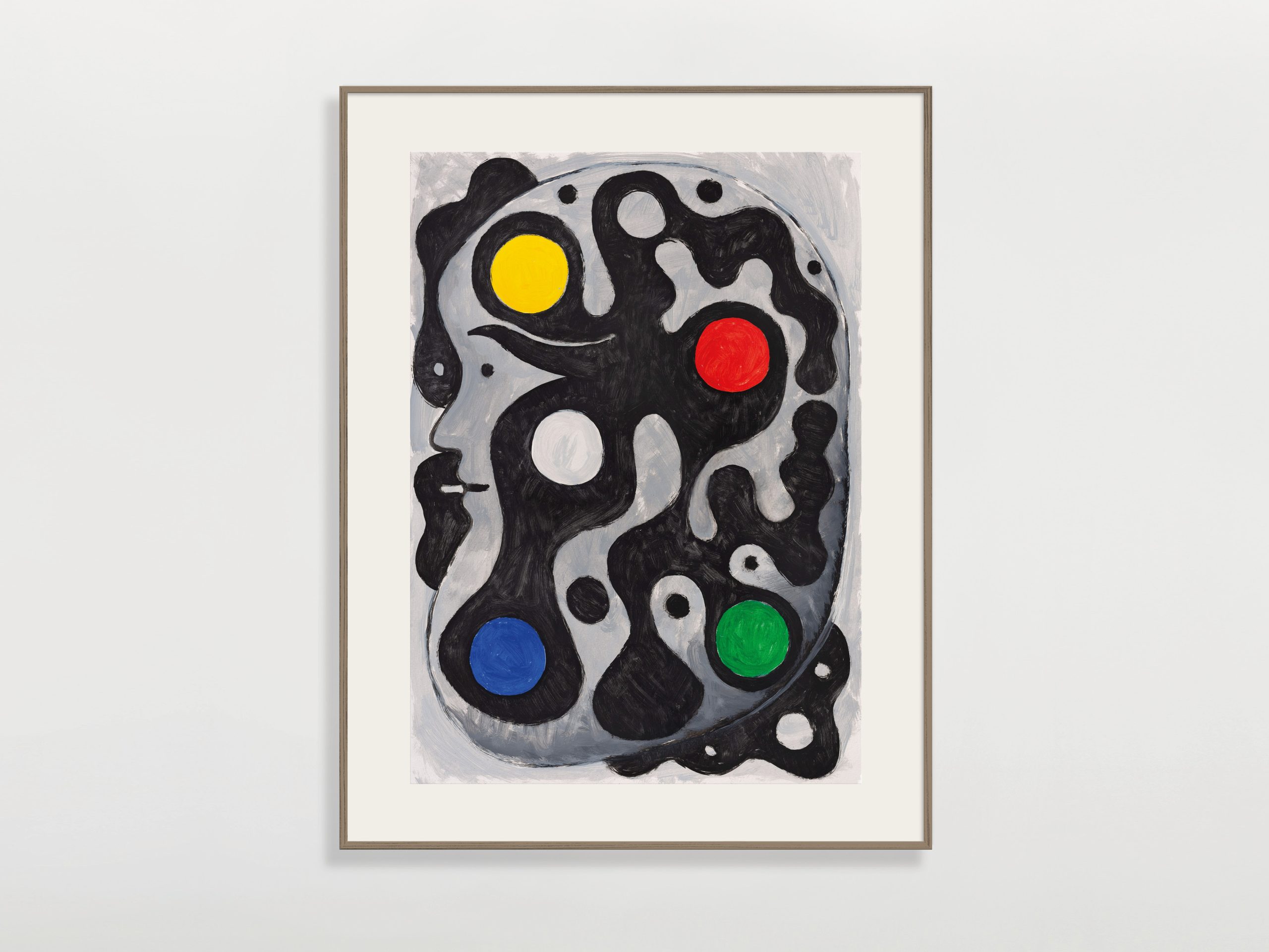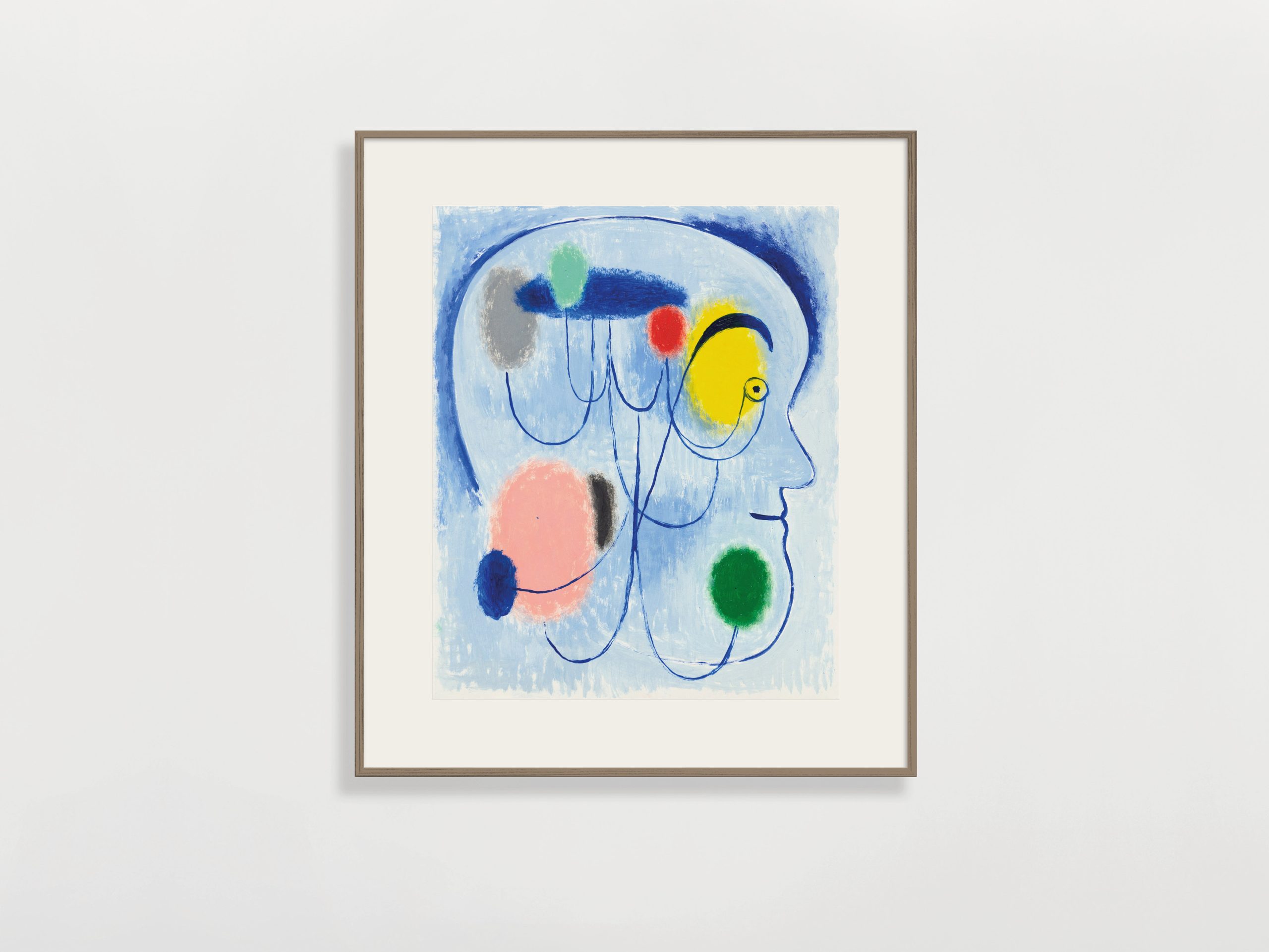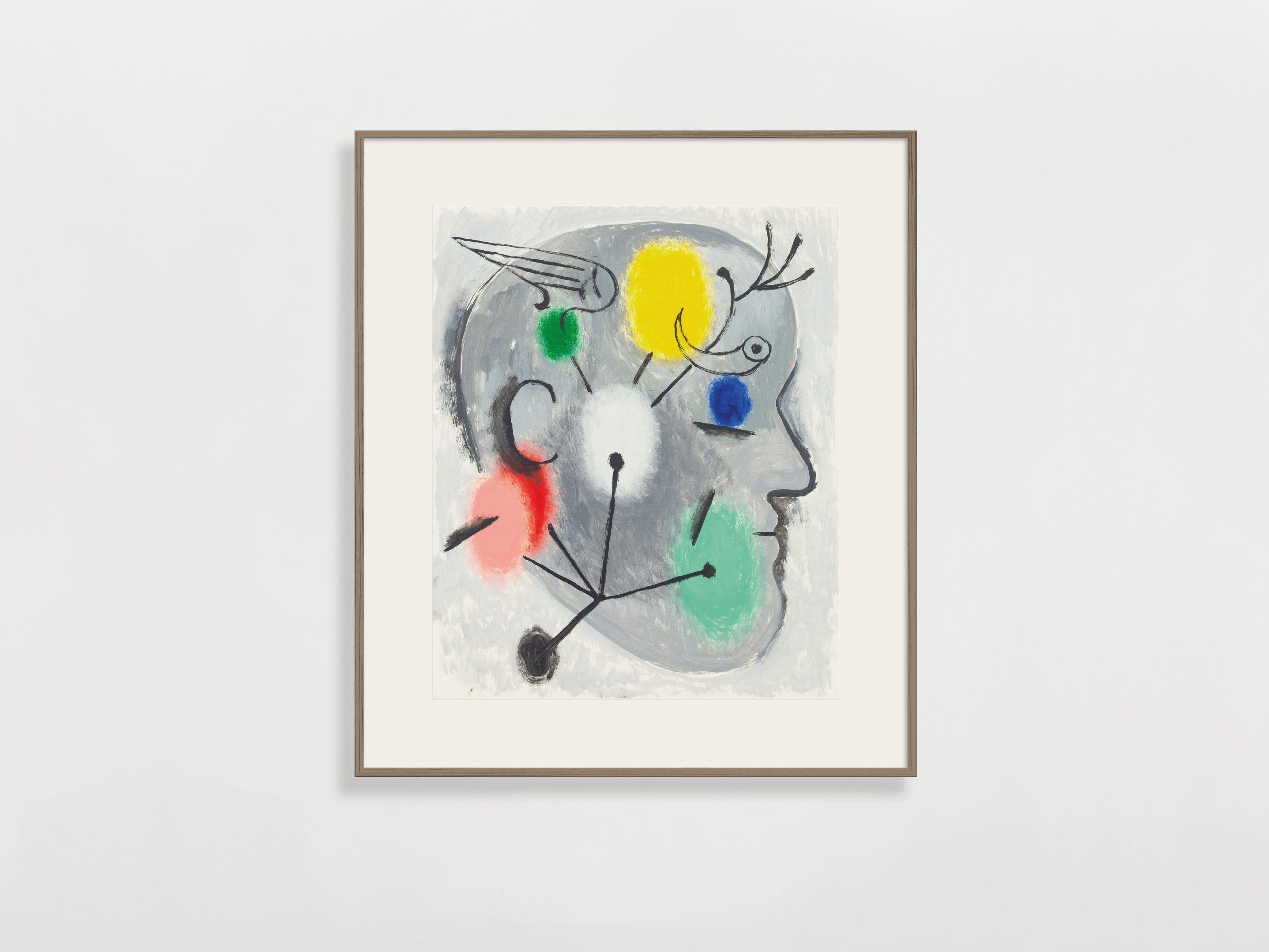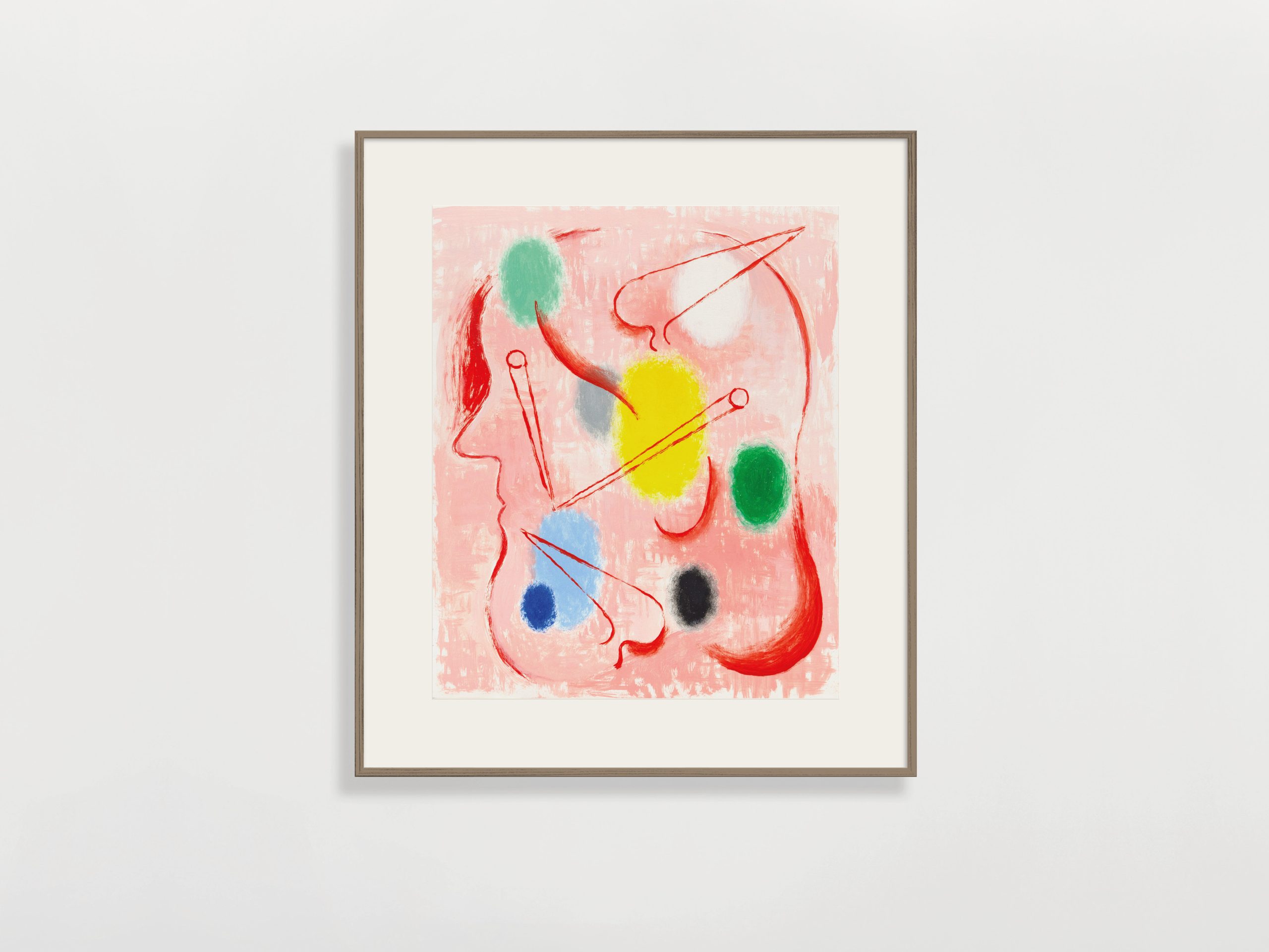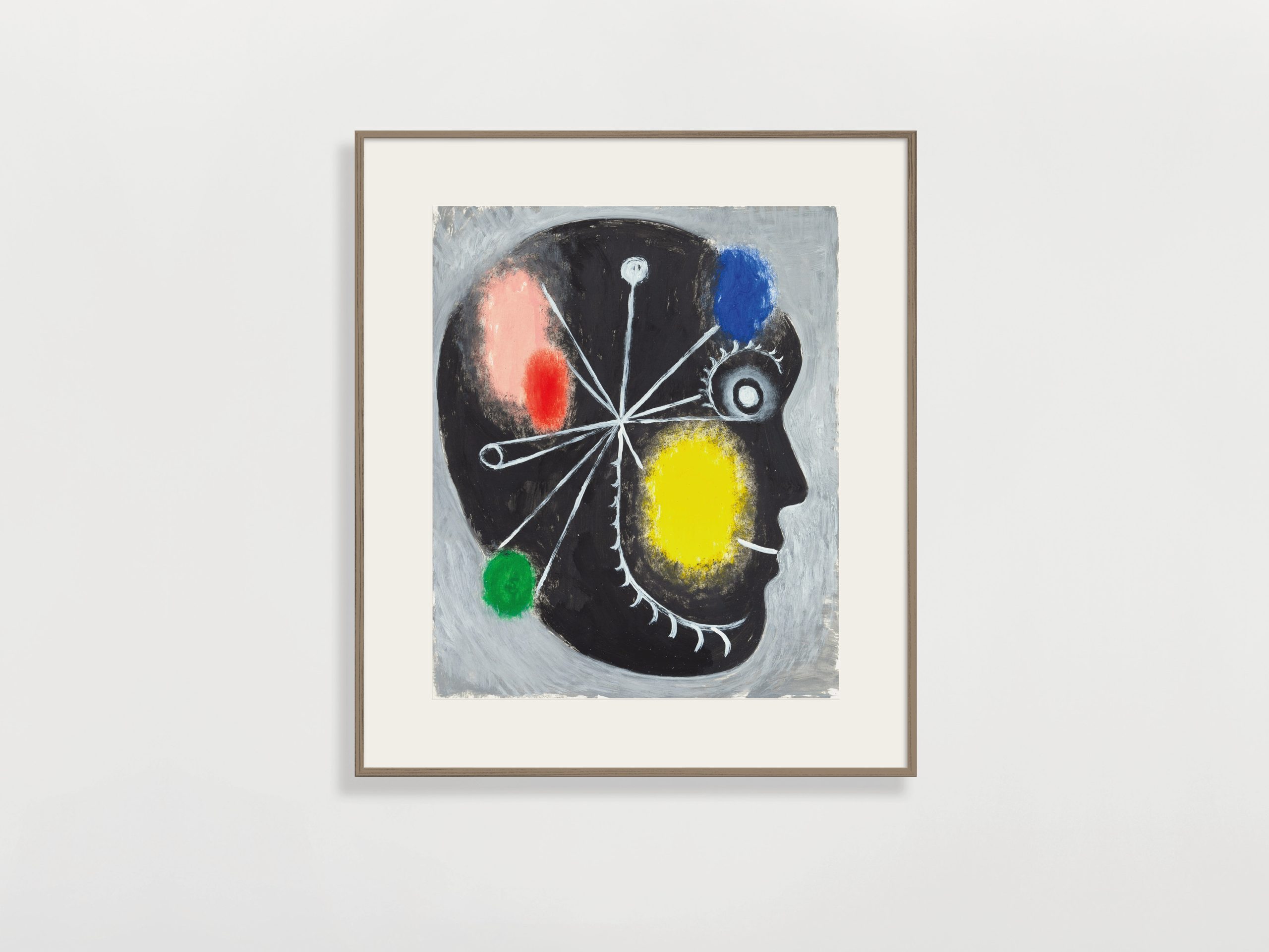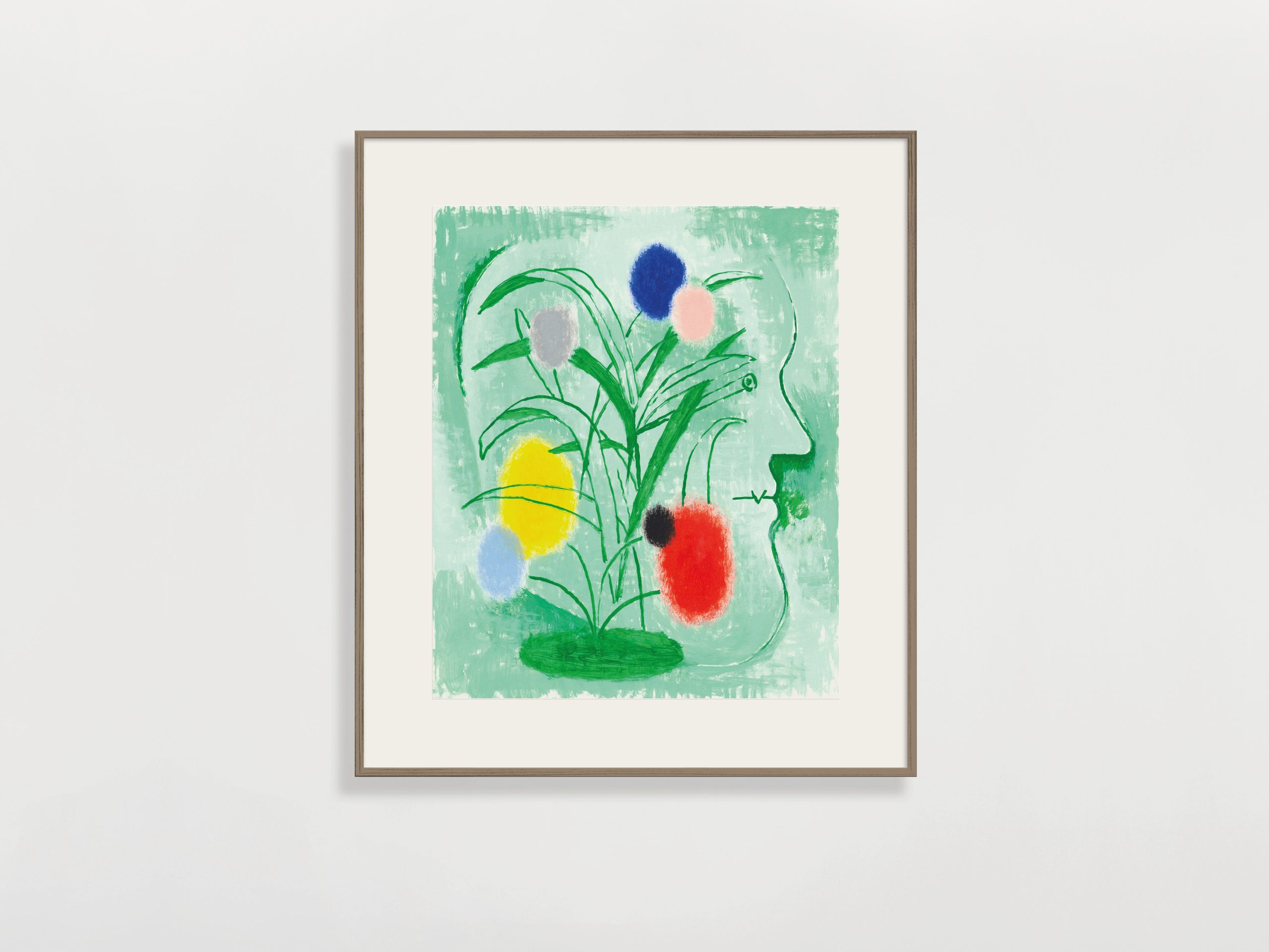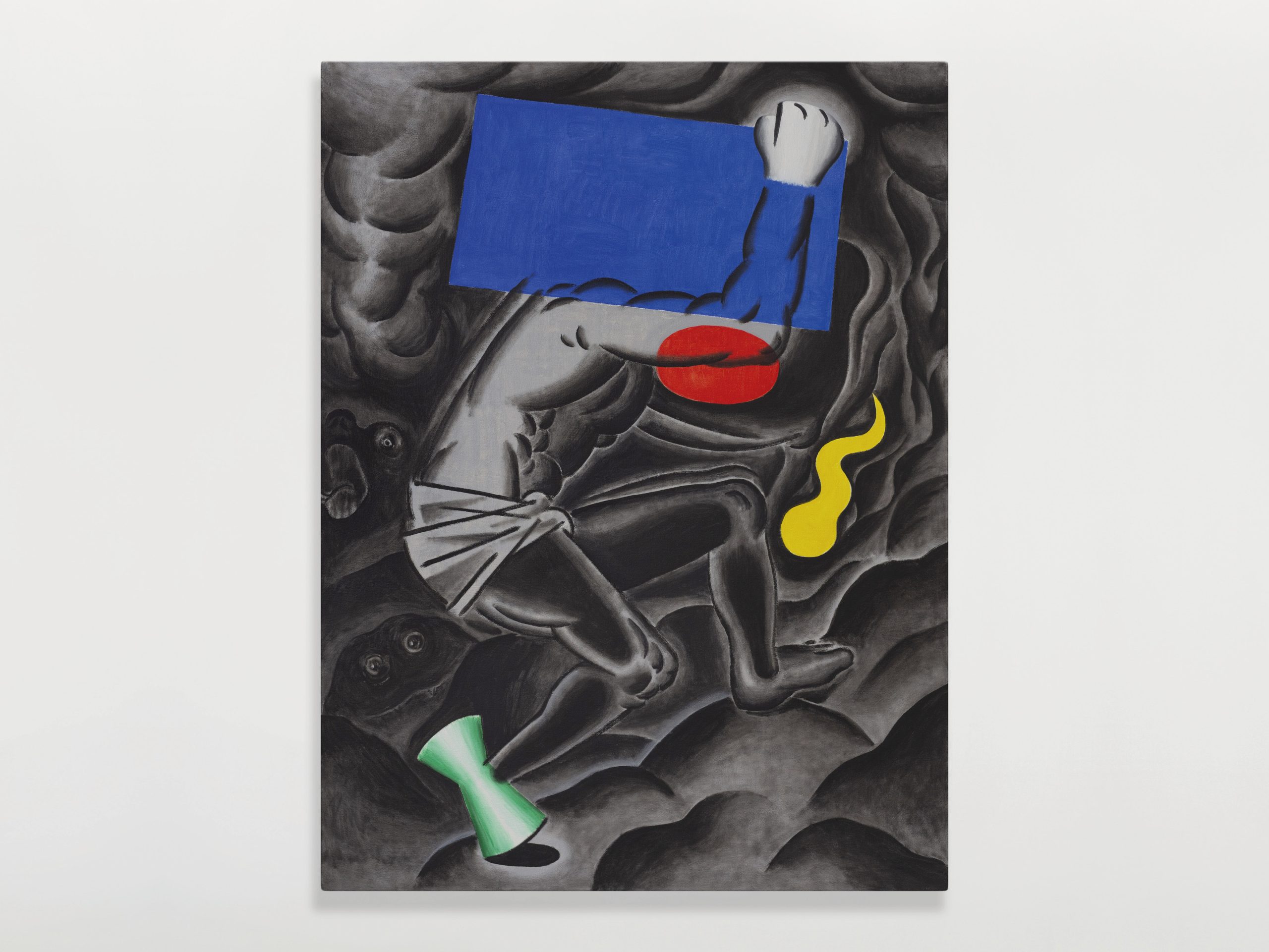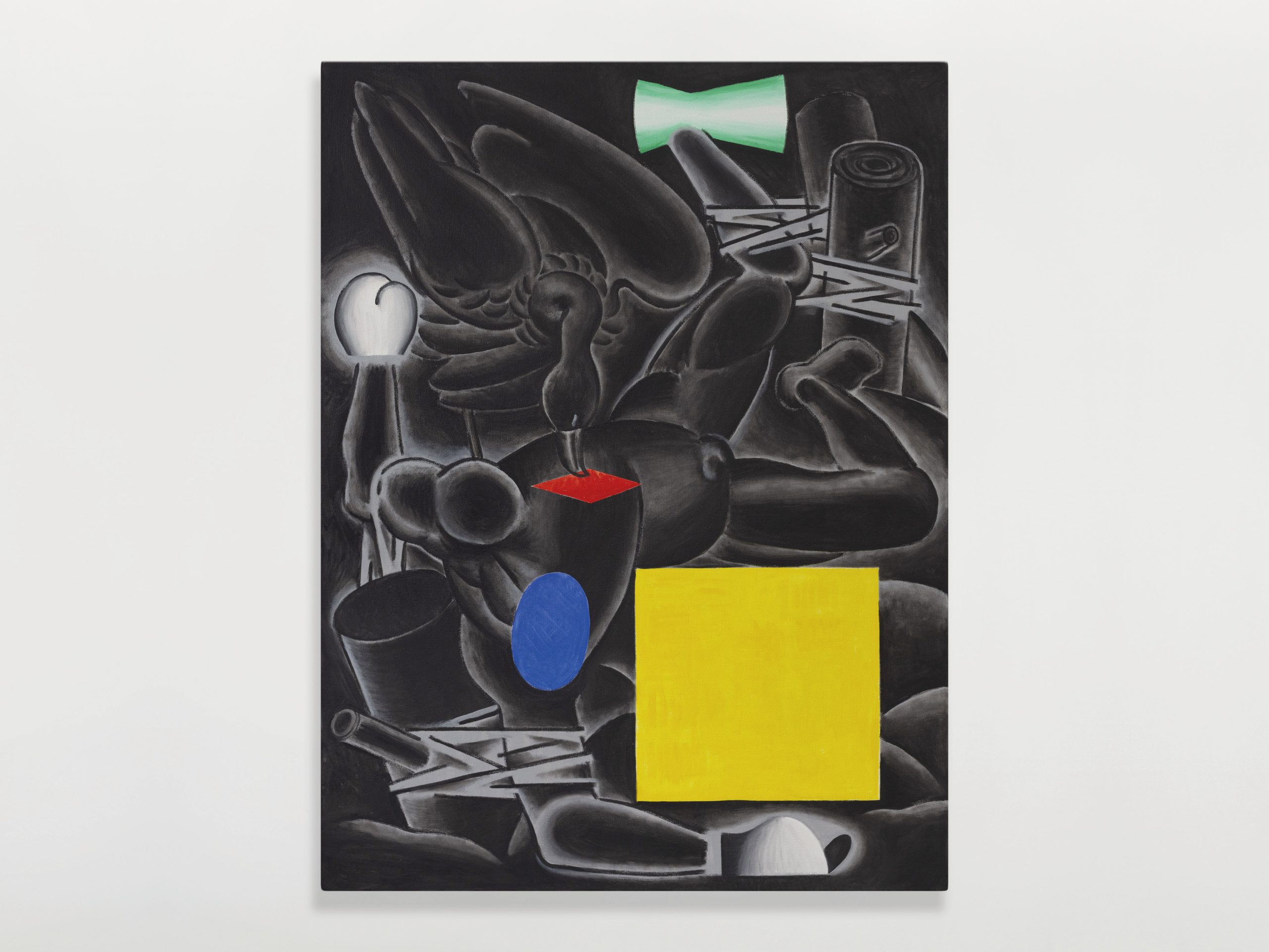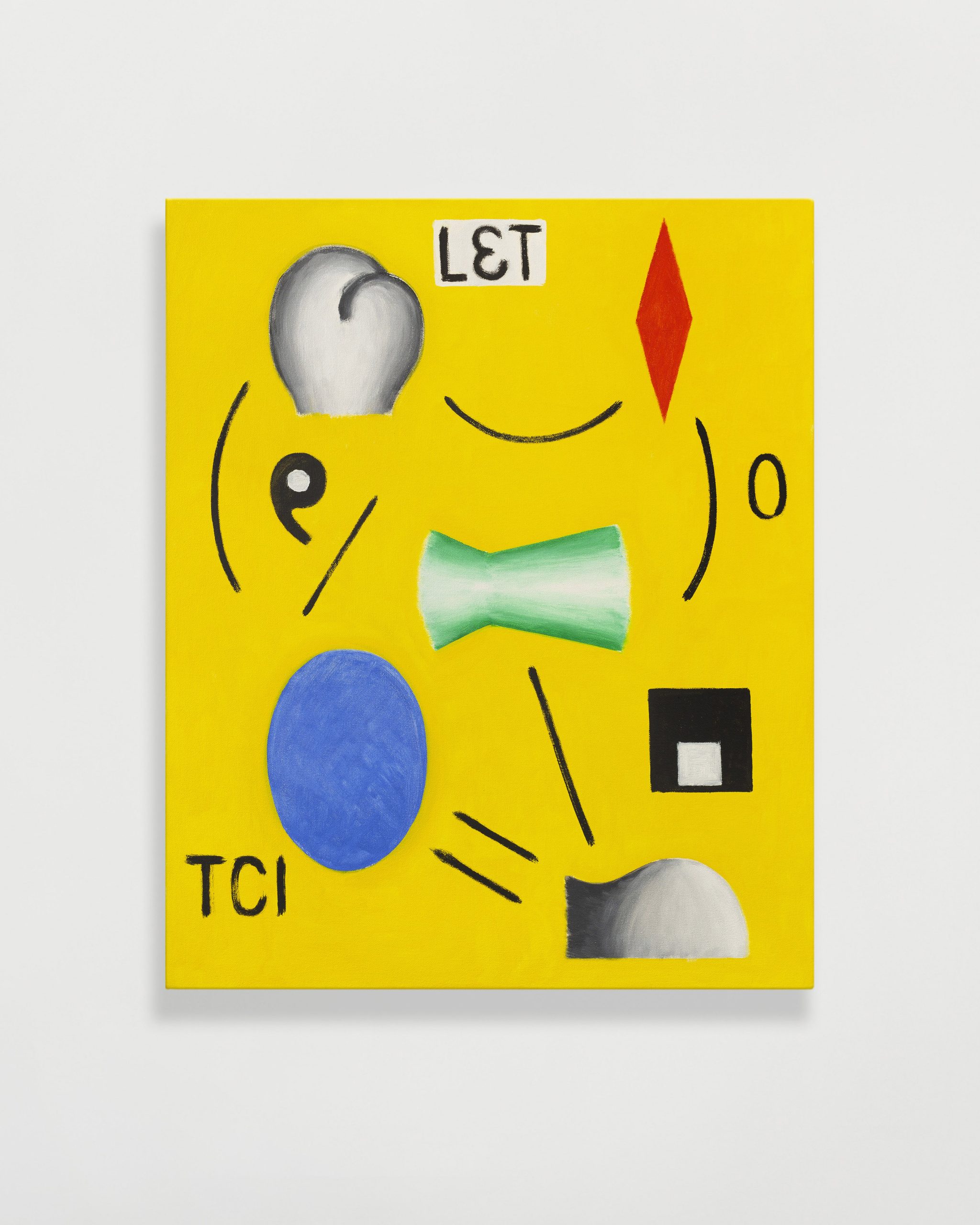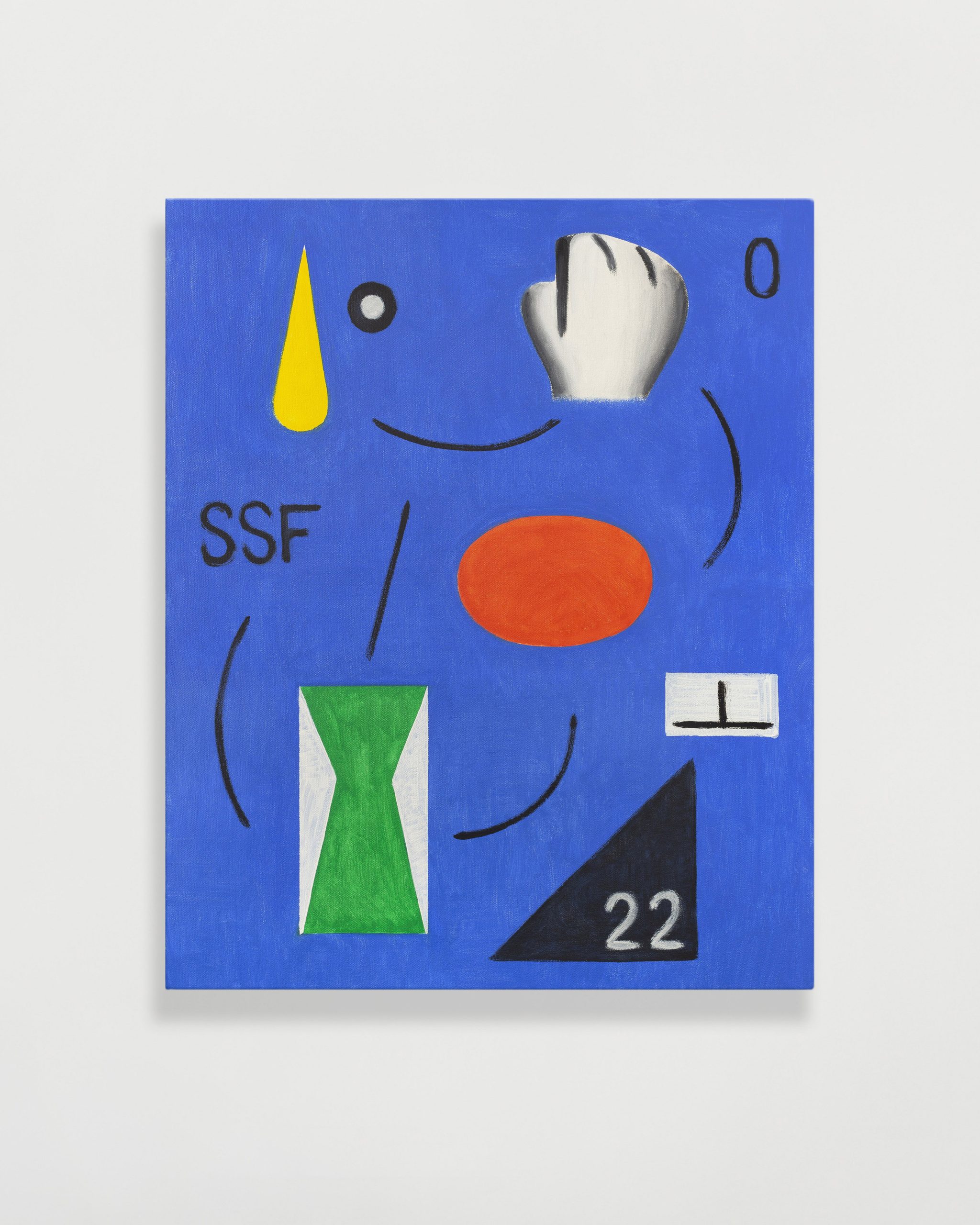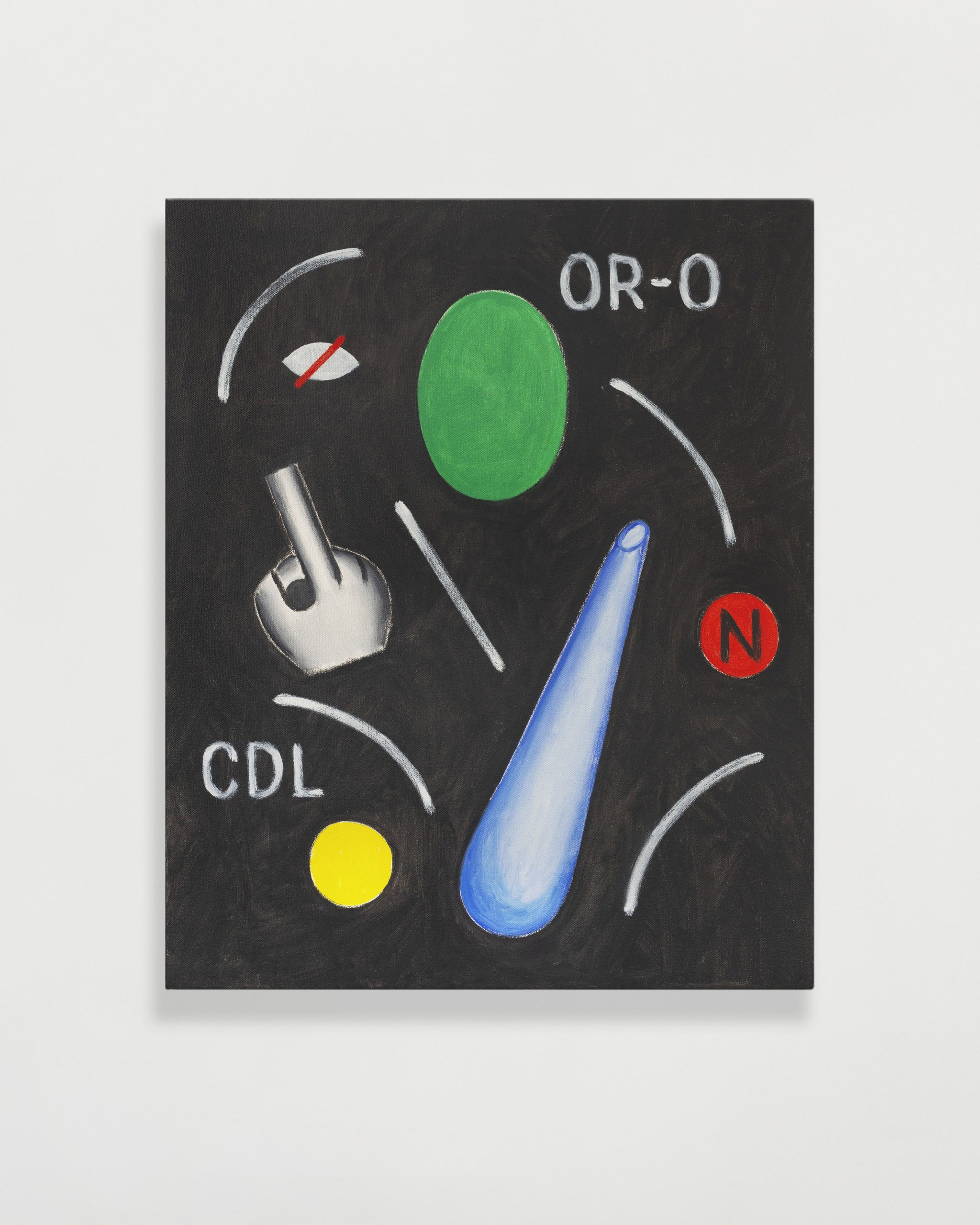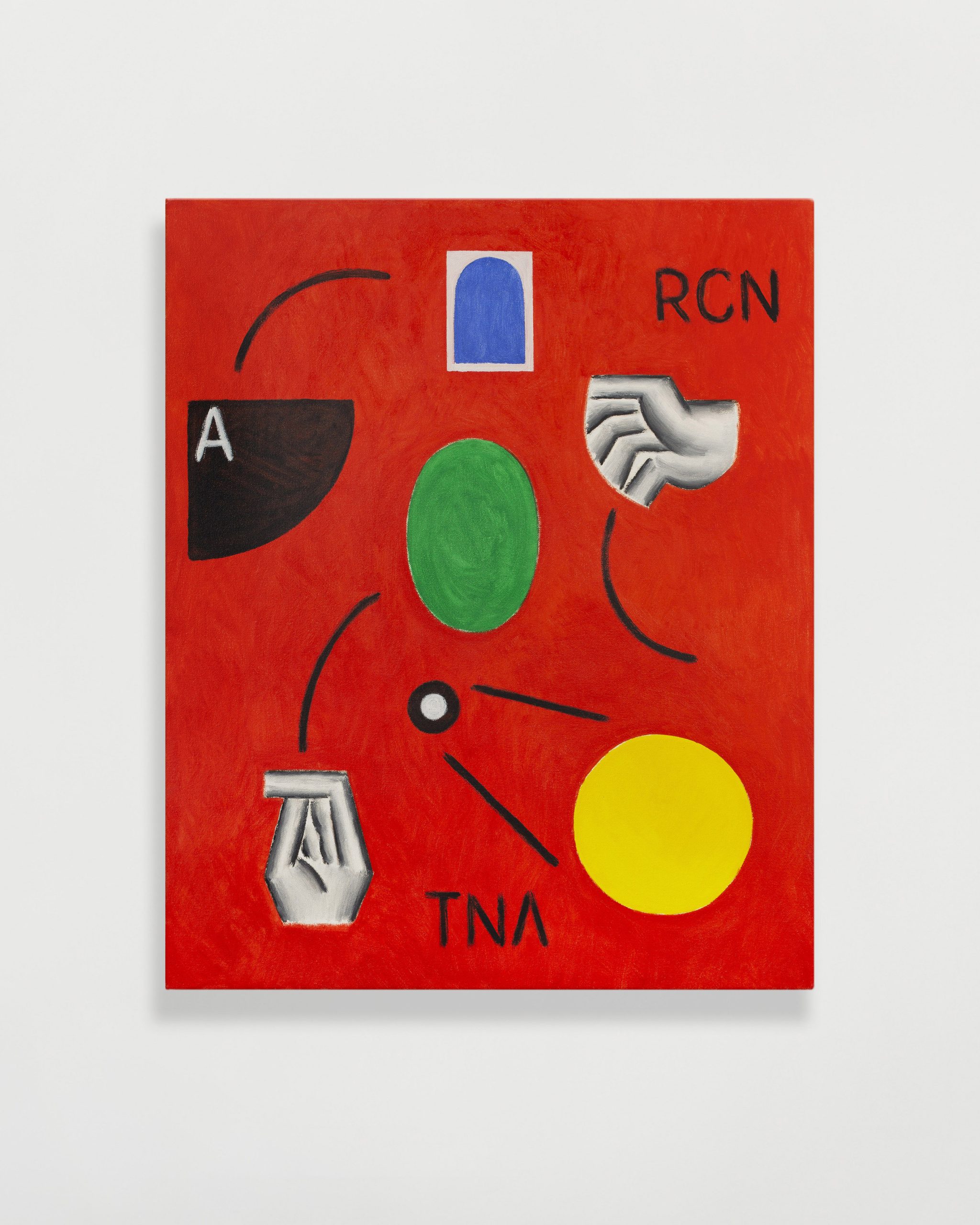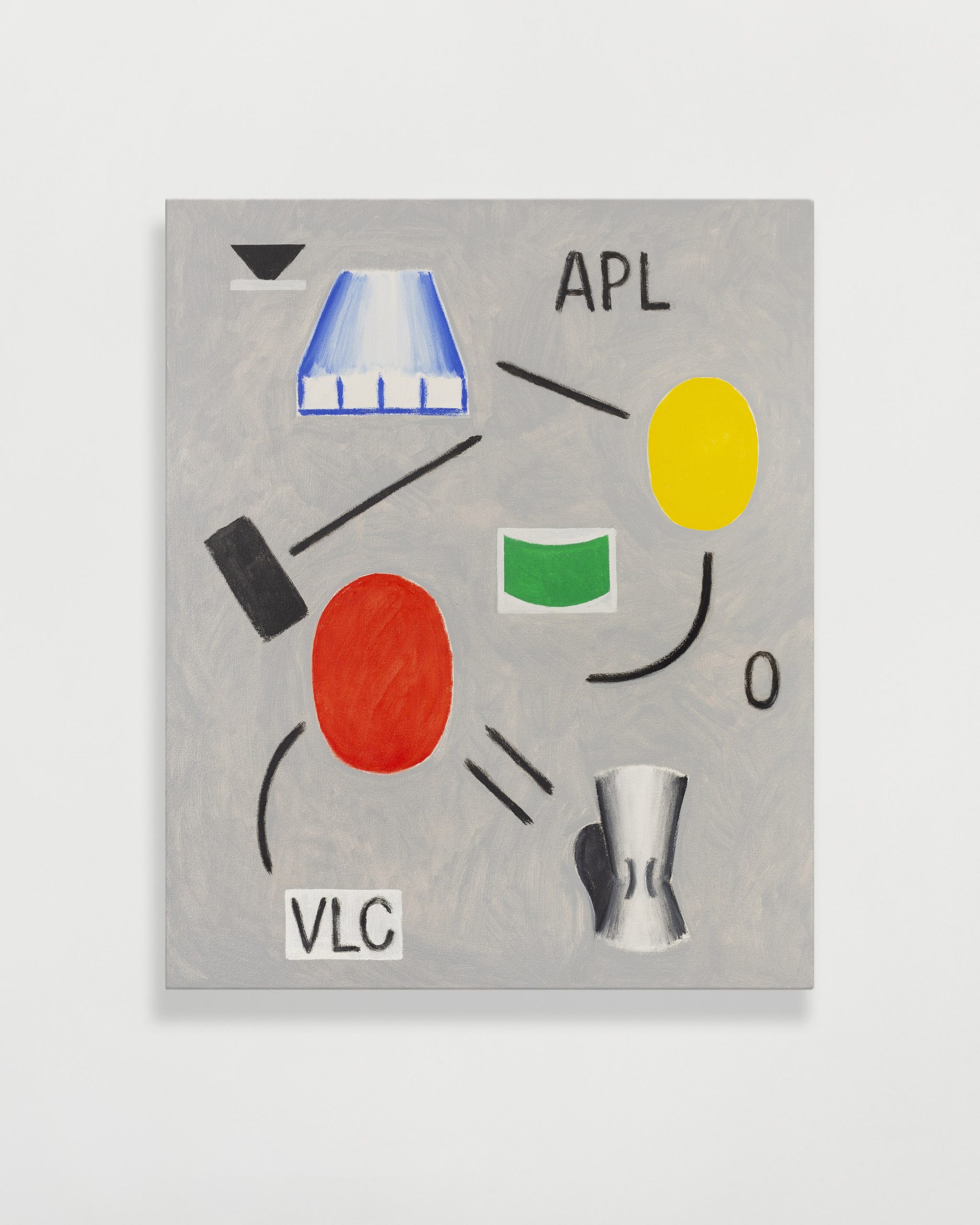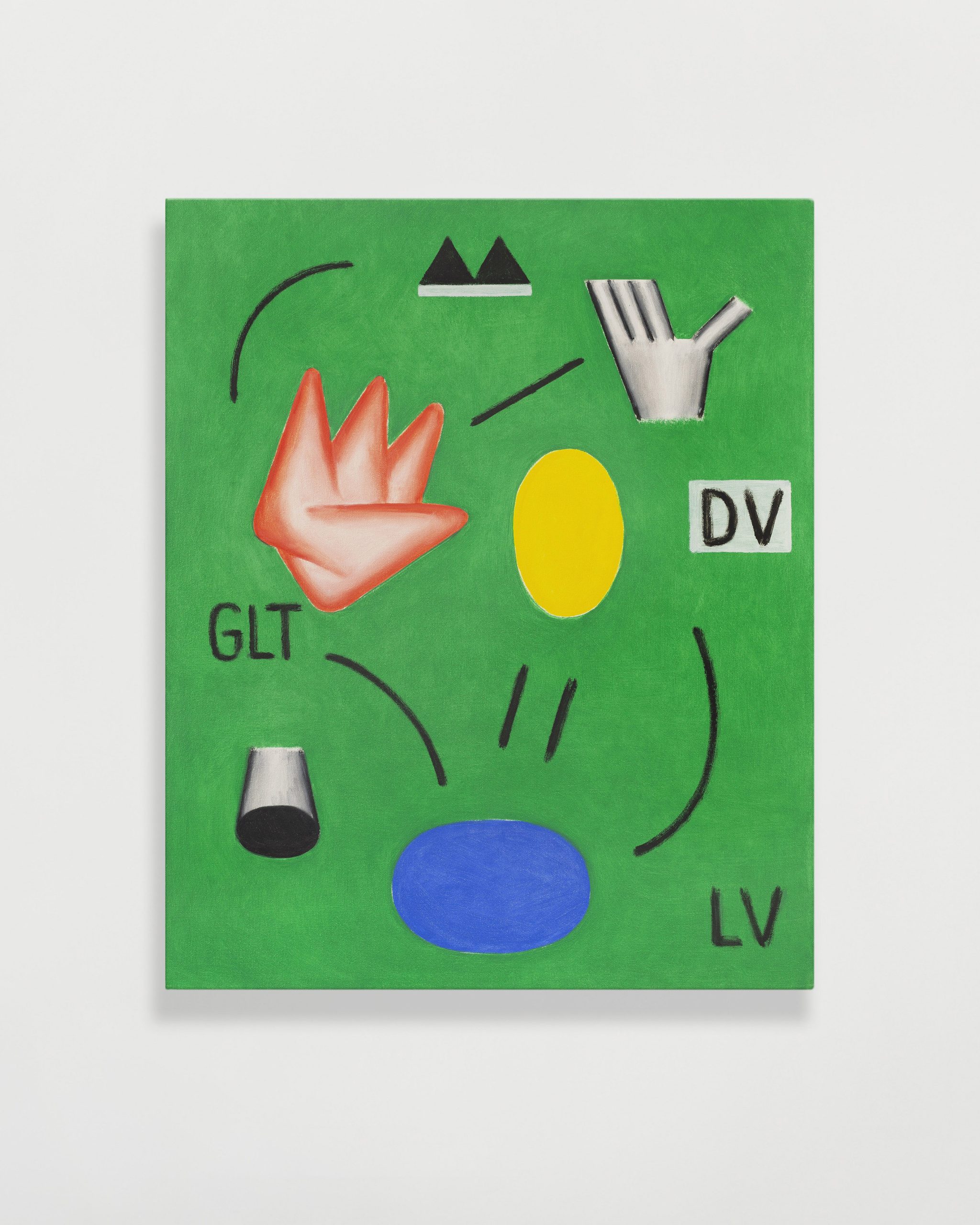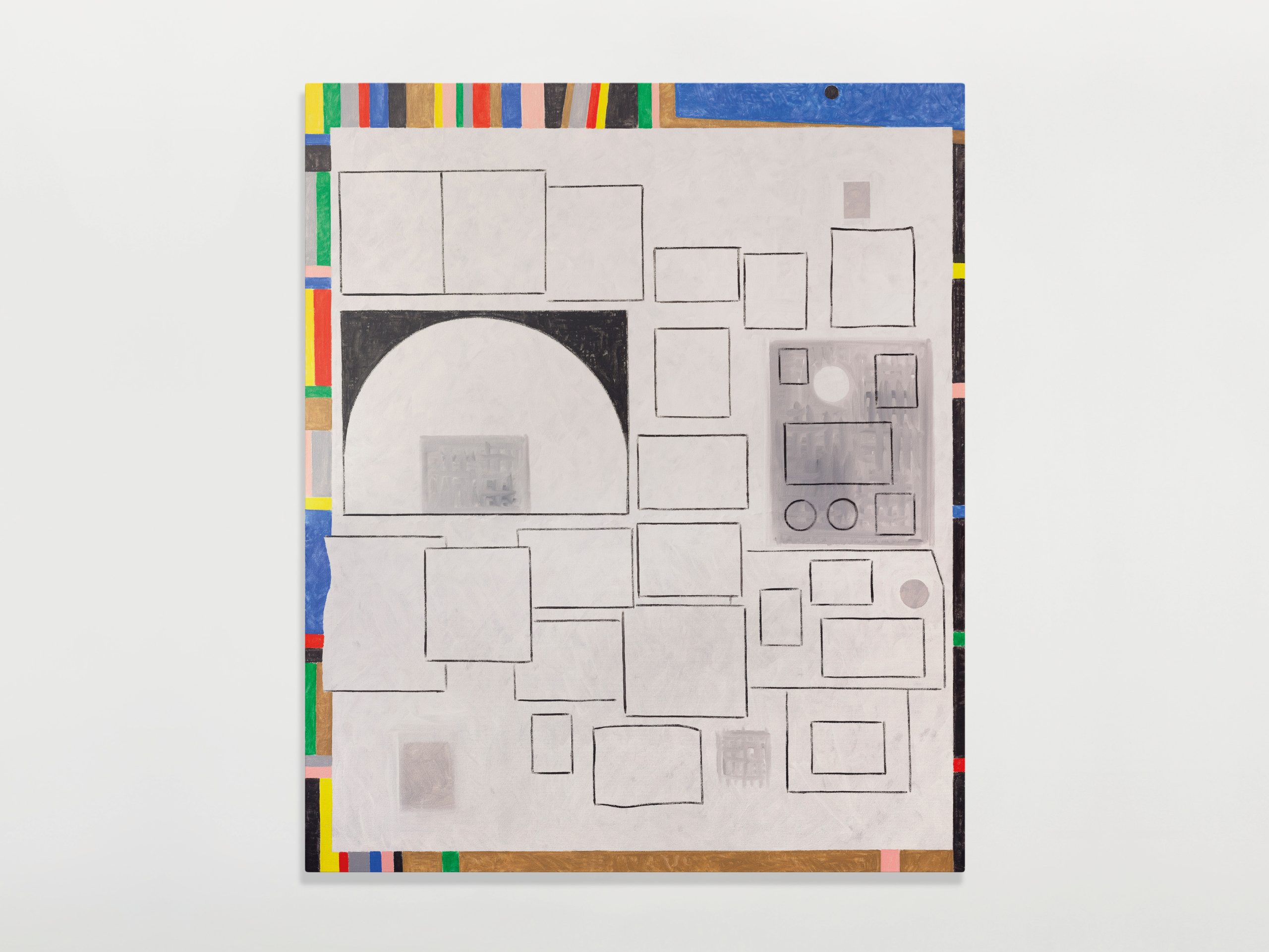Mythemes I:
A Song for Sisyphus
“The more exquisite the thing seen,
the more exquisite the thing unseen.”¹
Wallace Stevens
In 1917, the poet Fernando Pessoa affirmed—through the voice of Antonio Mora, one of his heteronyms—that “The gods are the human ideas passing through from concrete notions to abstract ideas”.² Almost a century after, Luis Vassallo begins a series of drawings that refer to works of the history of painting—with which he maintains an emotional relationship—with characters of Greek mythology as main figures. Pessoa’s statement reverberates inside the origin of an exhibition that gathers deities, schools, transitions, crossovers, and ideas into a highly personal investigation.
Because—although the seed of “Mythemes” is on those first drawings—the works that comprise the exhibition soon overflow their subject, to plot a wider consideration about the communicating vessels that connect figuration and abstraction. In the course of this analysis, the artist reminds us the importance that, for the practice of painting, had the fact of being able to shape the form—the body—of the gods, thus reducing the distance between “concrete notions” and “abstract ideas”. In addition, he also points out that painting was, to a large extent, responsible for snatching that form—that body—once its attention shifted to the “thing unseen”.
In the journey proposed by Vassallo, we see titans and gods walking through from the theatrical corporeality of their figure to the synthetic land of abstraction. In this way, Tityus and Sisyphus raise themselves into automaton hybrids, a review that transforms The “Furias” by Titian into black paintings with a geometric heart. In front of our eyes, Poussin’s Orion mutates successively into a Saint Christopher with his cane, a constructivist farmer, a pile of blocks and finally into spots and hieroglyphs… almost nothing.
Perhaps, where this metamorphosis is better observed is in Vulcan’s Forge, a work with which Vassallo maintains a special affective relationship and which constitutes the starting point of the conceptual route proposed in “Mythemes”. Inside this work, the scenography is reduced to its basic structure, as a focal point, an Epiphany of Apollo remains as a mere luminescence of primary yellow… or in words of the author:
“[Apollo] just appeared, like a flashlight, frozen in the exact moment of transmutation, with his body not completely formed yet. Vulcan takes a step back, with his face burnt in embarrassment surrounded by the other metalworkers. These secondary characters, in which Velázquez made a complete anatomy lesson, embrace, and close the composition positioning themselves in a circle, each one embodying different styles, representing the fluidity of their pictorial identity”
Throughout the exhibition, we witness how figures and themes prepare the way to regular areas of flat colors that evoke books yet to be written. White canvases or immutable architectures which refer us to the Three Black Paintings by Chris Martin; subatomic spaces with the ability to at the same time contain and deny all the possible figures in the universe.
“Myths, the body, abstraction, a new New Spirit on Painting, historical fictions, chants, time and form, the divine and the human, drama, humor, an American look, […] figures in space, canvases in a hall” as Luis Vassallo points out, “Mythemes” pulls many threads, and invites to the viewer to pull some more. Only by pulling out the last strand will we realize the multiple and paradoxical outcomes offered by a mechanism as sophisticated as the pictorial one.
Thus, the more exquisite the thing seen, the more transparent becomes the bare idea that enlivens it. And, on the contrary, the more hermetic the representation of an idea is, the more it seems to long for the dream of the figure that wants to be seen. This happens in A Bigger Aleph, central corpus of the exhibition, that mutates—absorbed into its analytic synthesis— from Mnemosyne Atlas to a theater of the memory, a library of Babel or total museum where the paintings, reduced to the primary colors want to light up again, the supreme fiction nested behind each transition between abstractions and concrete notions.
David Moran Álvarez
September 8th, 2022, Madrid
1. STEVENS, Wallace (1966). The Letters of Wallace Stevens. Selected and Edited by Holly Stevens. (Carta 479) Alfred A. Knopf, Nueva York.
2. PESSOA, Fernando (2006). El regreso de los dioses. Acantilado, Barcelona.
In the early 1920s, the famous Czech painter Procházka renounced his abstract phase and plunged into a new bastard style that revisited the Italian masters, but the shadow of his renowned canvas “Blue Rectangle” haunted him throughout his life.
